Excommunivacation, part four.
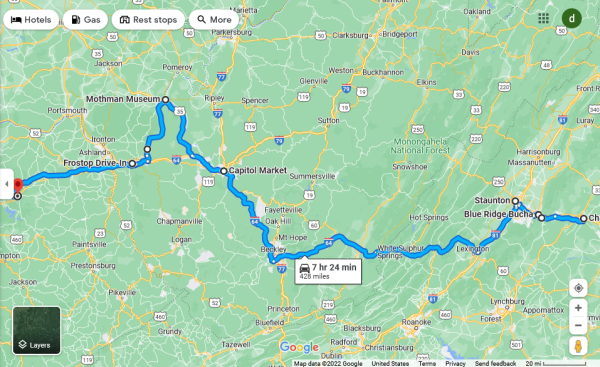
428 miles.
DAY SIXTEEN
Sunday, September 1st
Before we left Charlottesville, we made one more stop at the Sugar Shack/Luther Burger and got a half-dozen doughnuts and their special "Eleven Eggo Burger", an homage to Stranger Things featuring a Beyond patty, tempeh bacon, Daiya cheddar cheese, and maple syrup sandwiched between two waffles. For doughnuts, we got three salted caramel, a coconut, a caramel macchiato, and a chocolate. We knew we were about to be entering a real vegan drought, so we got it all to-go and figured we'd dig into it all a little later.
We drove out to a small town called Afton and got lost a little at first trying to figure out how to get to the abandoned Blue Ridge Tunnel. Eventually, looking at a Google Map of the area, I noticed a marker for the "Blue Ridge Tunnel trail parking lot", which was right outside of a cabin-style lawyer office. We decided to park there. The entrance to the trail had several signs telling us it was trespassing, but as always we didn't care. It was a Sunday and the renovations they were apparently making to turn this abandoned location into a tourist-attracting trail had made little to no progress since they began it in 2001 and phase one was finished in 2015. All they'd been able to pull off in almost two decades was clearing the path we were about to trespass on. Started in 1850 so the railway could connect to the Shenandoah Valley, the construction of the tunnel was designed and led by a former engineer in Napoleon's army. The hardest part would be figuring out a tunnel that went though the Blue Ridge Mountains. With the labor of Irish immigrants and slaves, the tunnel was started simultaneously from each end, intending on meeting in the middle upon completion. This was before dynamite, so the gruelingly slow process used hand tools and black powder explosives, amounting to about one foot, per side, per day. It was finished in eight years, and when they met in the middle they were only six inches off from perfect alignment. The tunnel was the longest in America at the time, and one of the longest in the world at 4,264 feet, just under a mile. It was used until 1944, after which the railway simply built another one right next to it that could accommodate bigger freights. The new tunnel stole its name, The Blue Ridge Tunnel, and the original was renamed after its creator, the Crozet Tunnel. It'd been abandoned ever since and overcome by nature until the completion of the trail on the Afton end in 2015.
The trail was a little under a mile long, and nice and clear since no one, not even construction workers, had likely been on it in quite a while. It seemed its most regular visitors were the swallowtail butterflies that swooped around us and took breaks along the dirt of the trail. When we got to the entrance of the actual tunnel, a netted curtain was hung over it and a scissor lift was parked outside. It didn't take much walking before we were in pitch-black darkness and surrounded by either a ringing silence or the echo of some water trickling down from the raw rock walls of the cave. It was impossible to determine the distance away from the dot of light at the end of the tunnel, but we were ready to walk until we got to it. It was actually pretty spooky for a while, being in this somewhat remote abandoned tunnel in an already small town, unsure of how far we had to go or what would be at the other end. The only life we saw was a single frog near the small stream ran on both sides of us. It appeared untouched, with the exception of one Dr. Pepper can and a Kit-Kat wrapper. About three-fourths of the way through, we came across another piece of construction machinery, this one with four big spotlights to illuminate the cave for workers. We turned it on, not knowing what to expect, and pushed buttons until one very bright light came on. The explosive rumbling was so loud that we eventually just shut it off. At that end of the tunnel, the Waynesboro entrance, there was far more evidence of activity. There was more litter, a bag of garbage, buffed graffiti, and construction vehicles, including a bulldozer. The cool elliptical arch entrance was covered by an ugly wooded frame and another netted curtain weighed down by bricks tied to it. We couldn't believe how little they had accomplished, especially after over $700,000 had been invested in it. The original tunnel took only eight years, and they didn't even have any of this equipment!
When we got back to the car, we were getting hungry, so we ate doughnuts and the delicious Eleven Eggo Burger, which tasted so much like the McGriddles I loved as a highschool kid. On our way out of town, we pulled over for a breathtaking scenic overlook view of the Blue Ridge mountains and the Shenandoah valleys. We also got to pull over and check out some ruins being devoured by vines and other plants of what must have once been a tourist stop with a diner and a motel. Along the way, we stumbled on a kombucha taproom called Blue Ridge Bucha, which made Alyssa very happy. Another alcohol-free bar environment! They were one minute away from closing, but the woman working there was kind enough to let us in while she cleaned up. She set us up with a sample tray of their nine flavors, which included ginger, "Bluegrass Bucha", "Elderflower Sunrise", black raspberry, jasmine grape, a seasonal orange blossom, a seasonal "Cold-Brewcha", strawberry lemonade, and their plain original kombucha. I always took sips of Alyssa's kombuchas, but it had never been my favorite thing. More often than not, I was turned off by the heavy vinegar flavor inherent in its profile. I told the woman I wasn't really a kombucha guy, and she told me this was the kind that created kombucha converts. She wasn't far off. This was hands down the best kombucha I'd ever had. The flavors were louder than the naturally strong vinegar taste and kick I was used to. I even got one of their refillable bottles tapped off with a ginger. Brewed right in the mountains right there on the premises, their stuff was apparently available at Whole Foods in several states throughout the east coast, south, and Midwest.
As we got into Staunton, the sun was on its way down, so we went to take in one more stupid sighting: a really big watering can. Gigantic, cute, and made of steel, the watering can and its accompanying pots, located under a railway overpass in the middle of a traffic intersection, were a treat in an otherwise dull town. Every summer, they made sure to plant a vibrant flower garden, and it was still in full bloom when we got to it.
Needless to say, explicitly vegan options were getting pretty sparse the further west we went in Virginia. We improvised a gross meal using two boxes of bread sticks from Papa John's (which were on sale for $1 a box!), two packs of deli meat, a pack of cheese, and a head of lettuce. Next, we needed to find somewhere to sit and eat it, and none of the grocery stores in town had seating or cafe areas. The couple of young employees I'd asked for suggestions couldn't even offer up any options. We ended up at the campus of a liberal arts college for women where it was inexplicably vacant, and ate at the fancy tables sitting outside their closed university cafe.
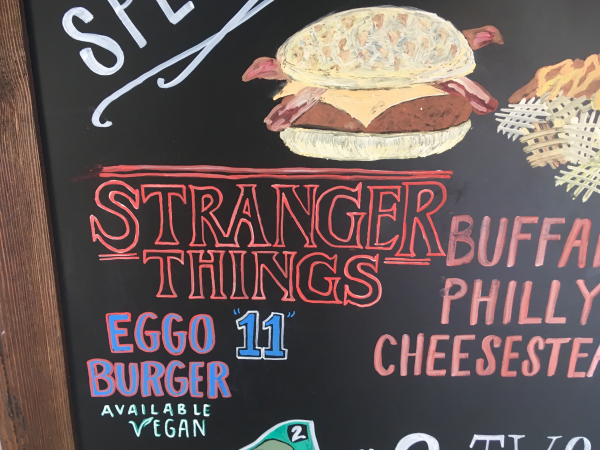
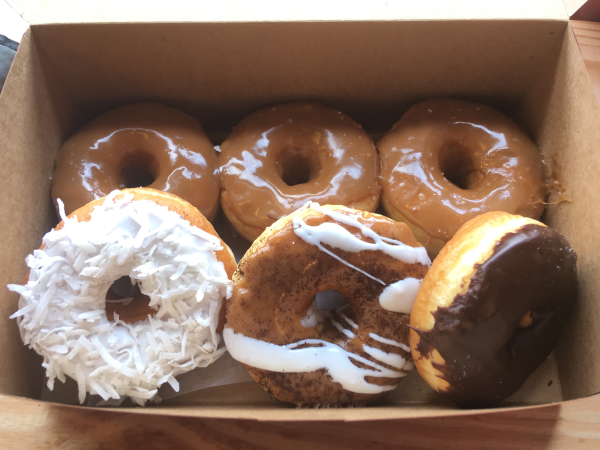
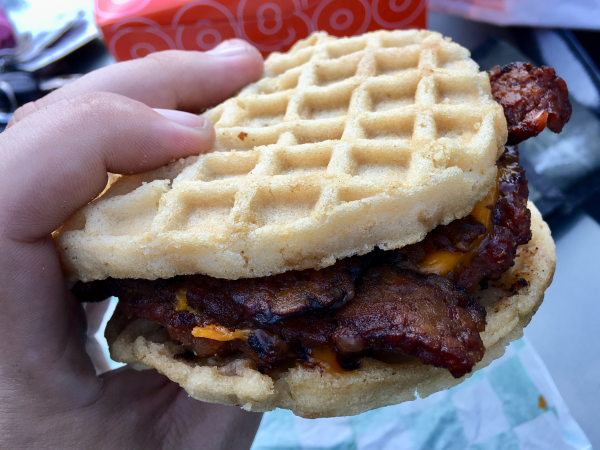
Another doughnutty brunch.
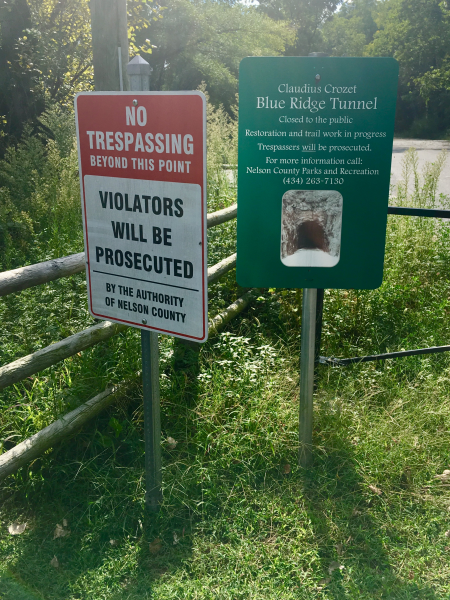
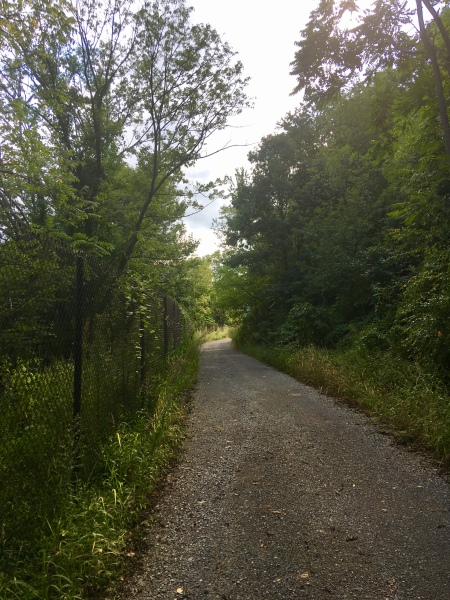


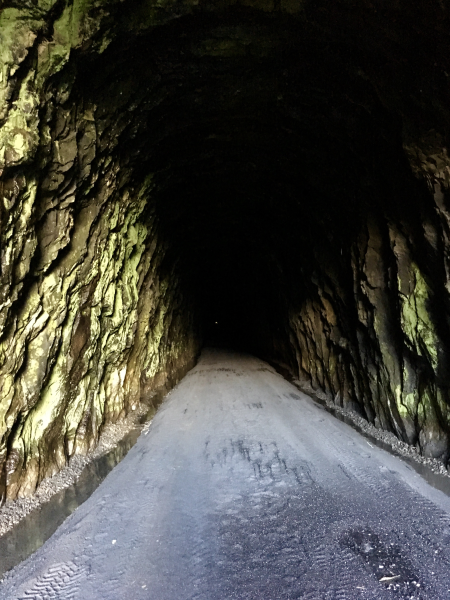
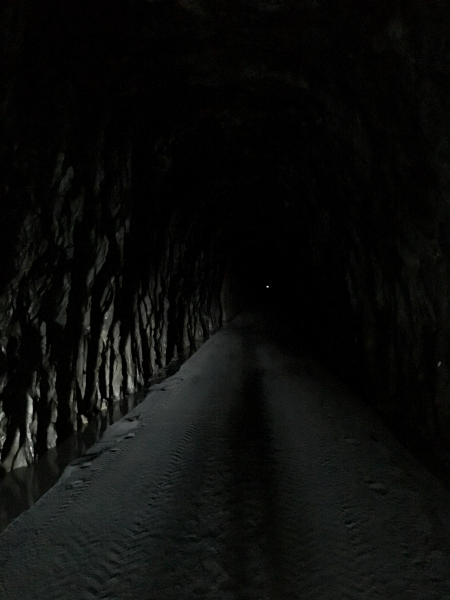
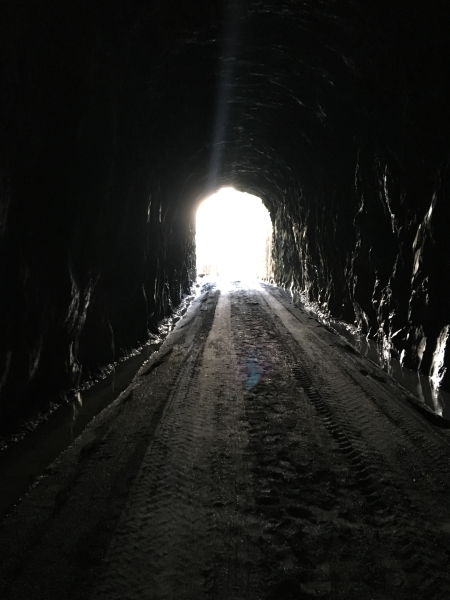
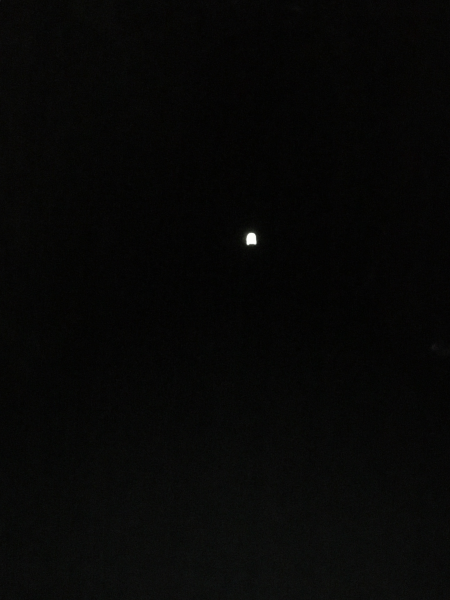

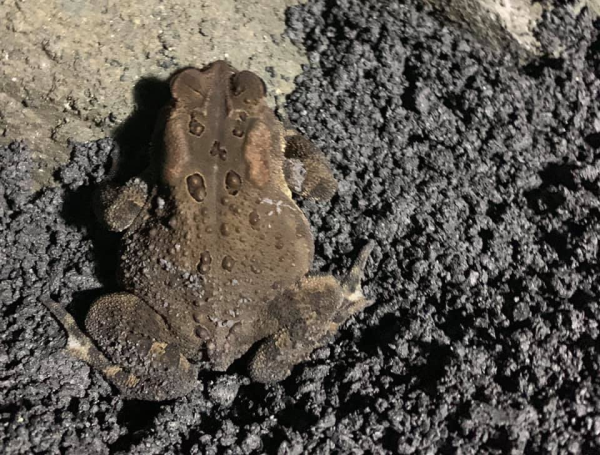
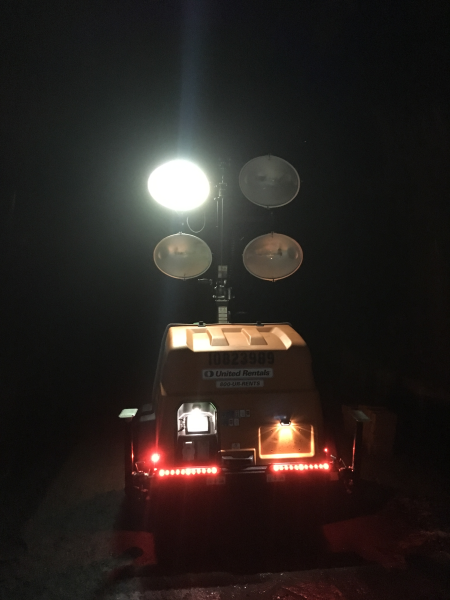
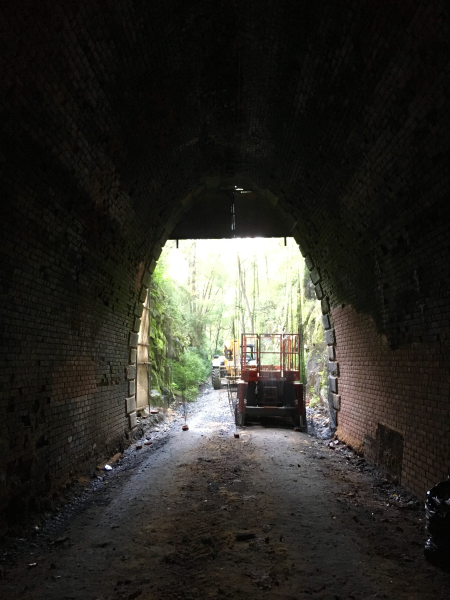
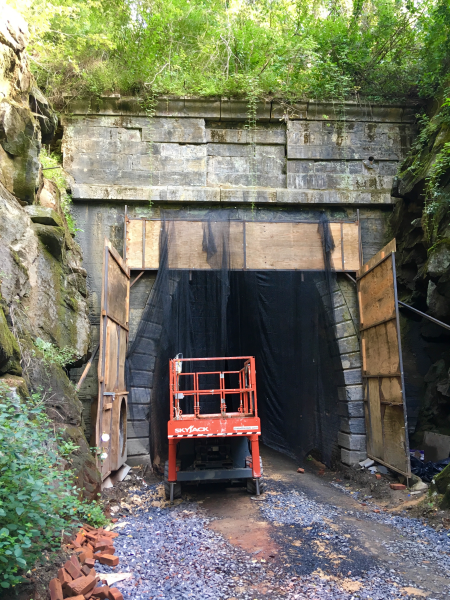
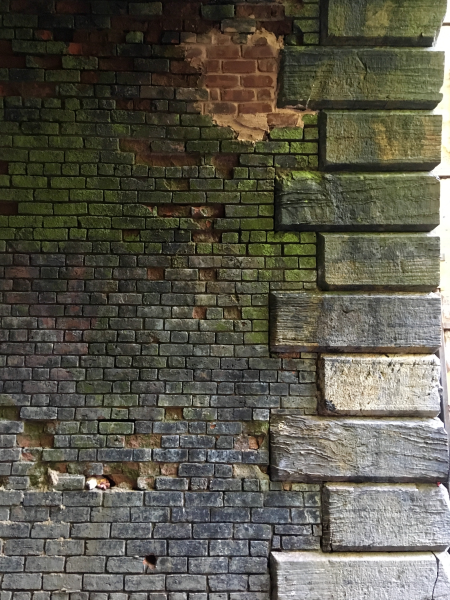
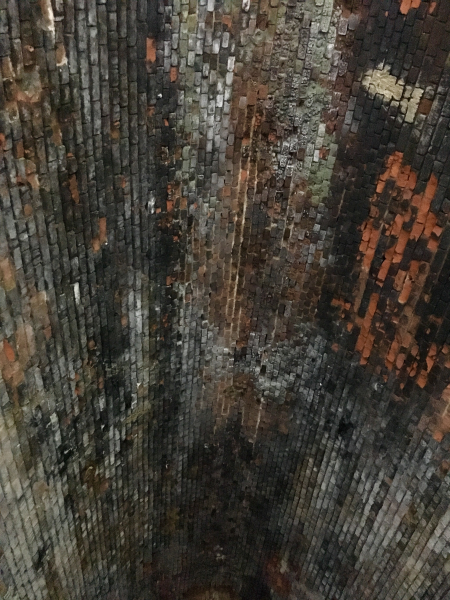
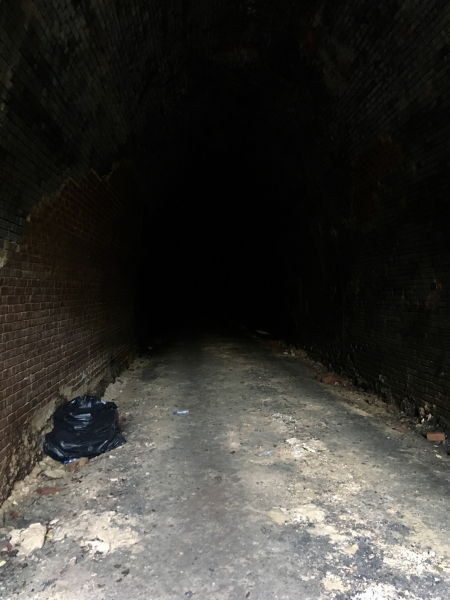
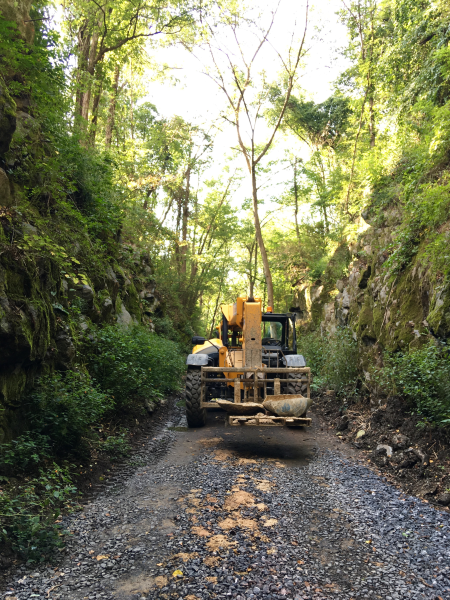
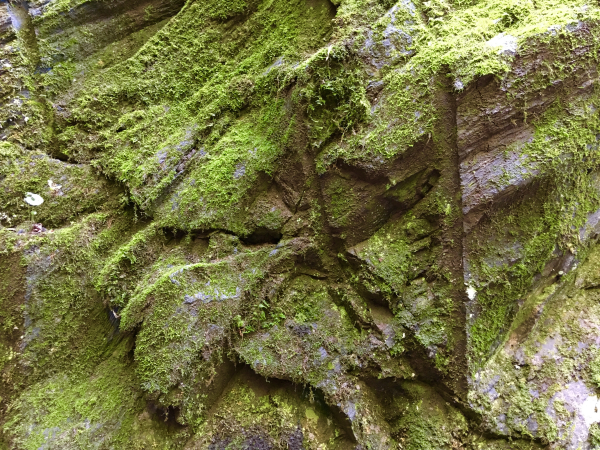
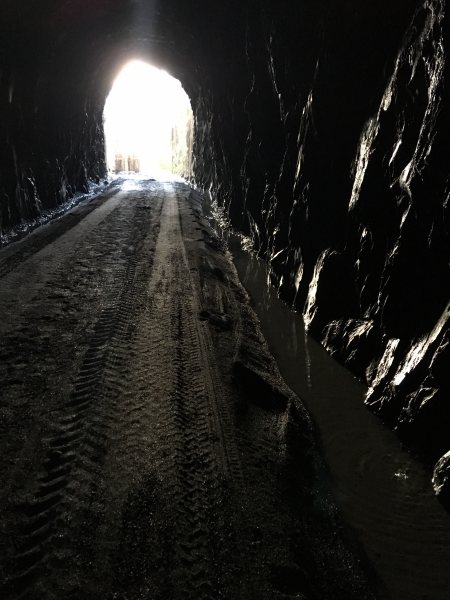
The abandoned(?) Crozet Tunnel!
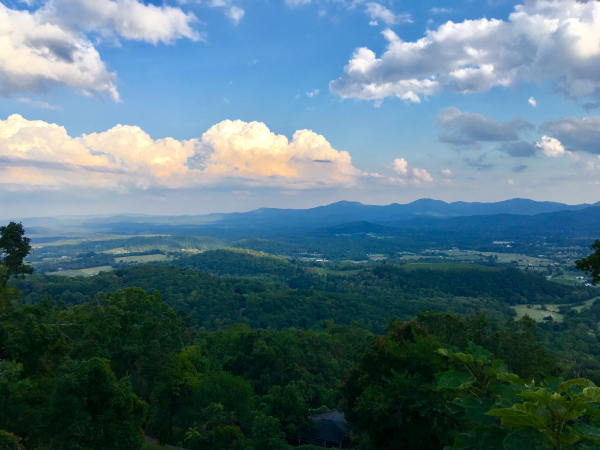
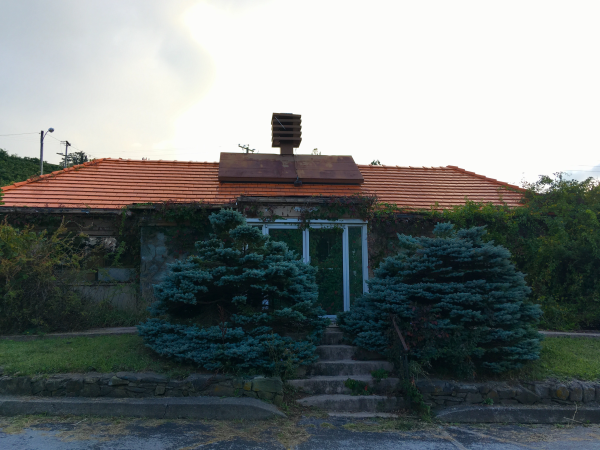
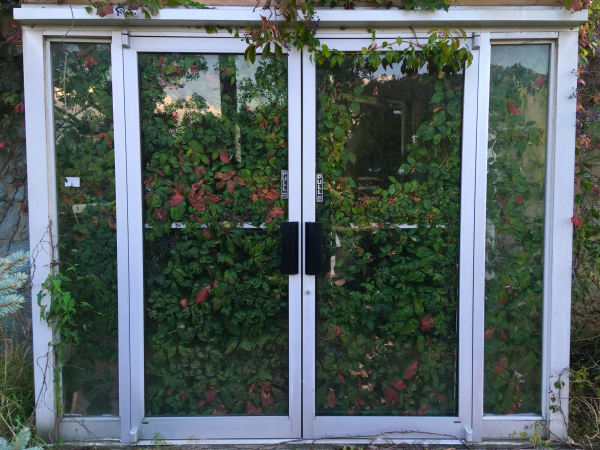
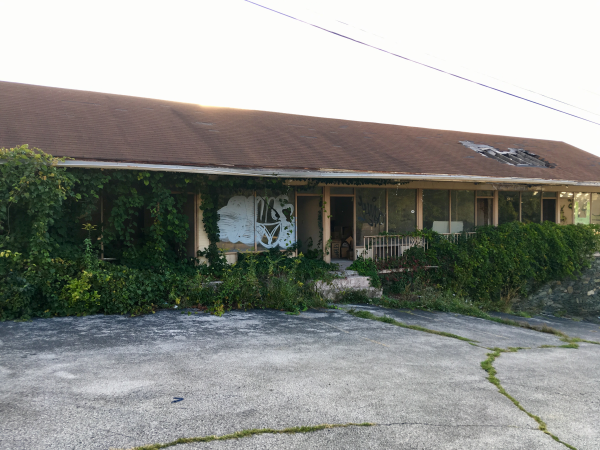
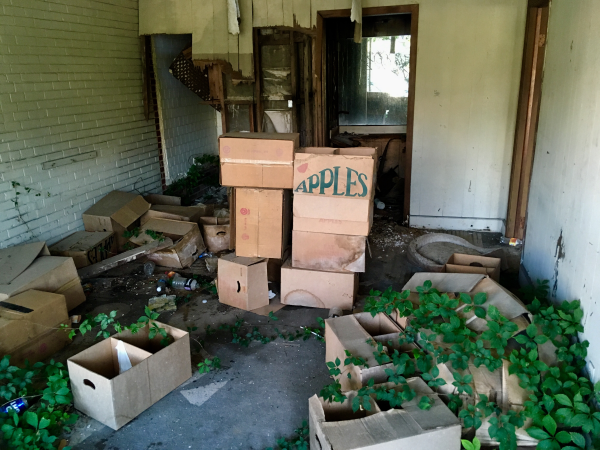
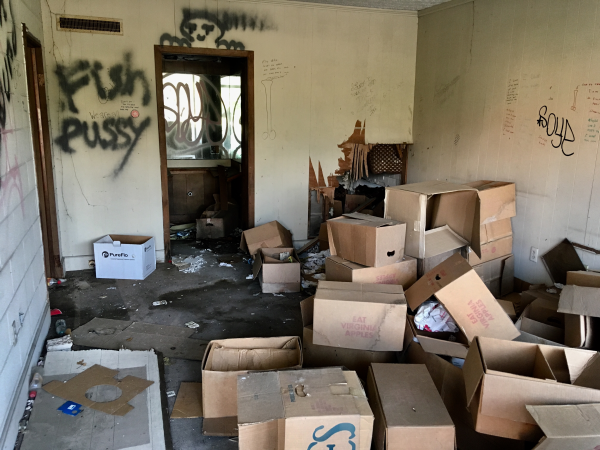
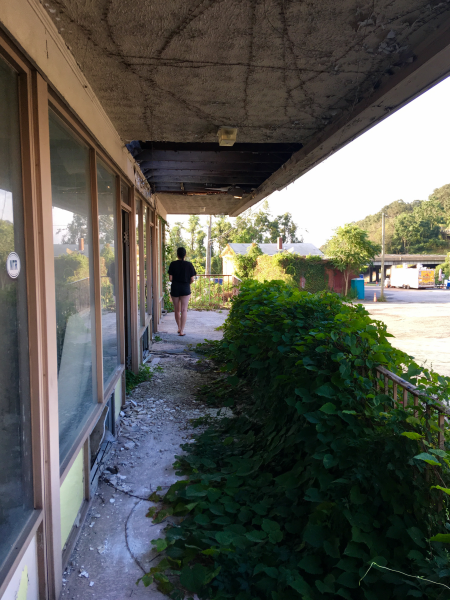
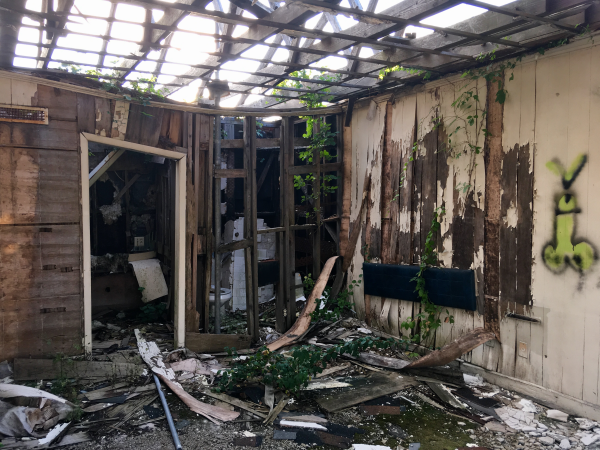
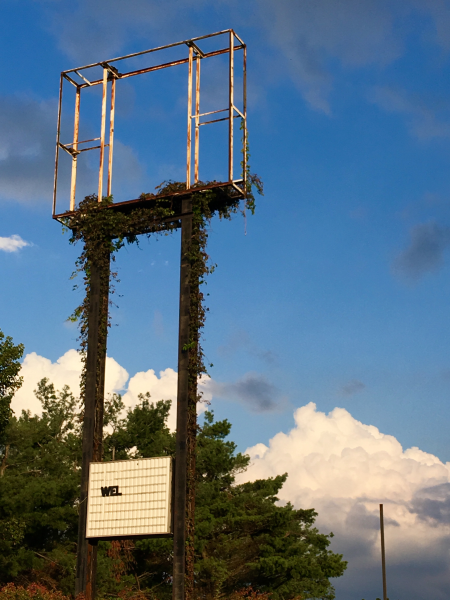
The Blue Ridge Mountains and some of its tourism heyday ruins.
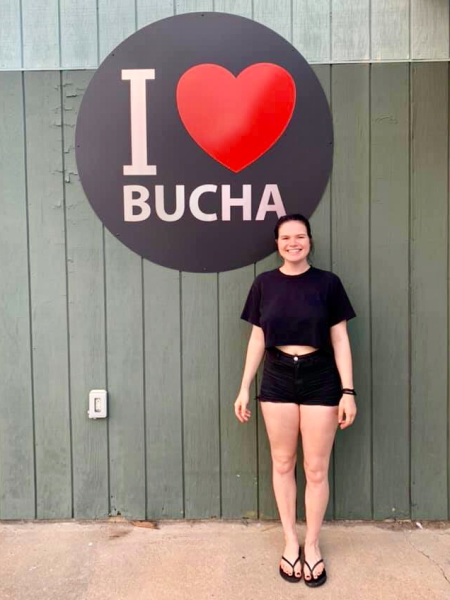
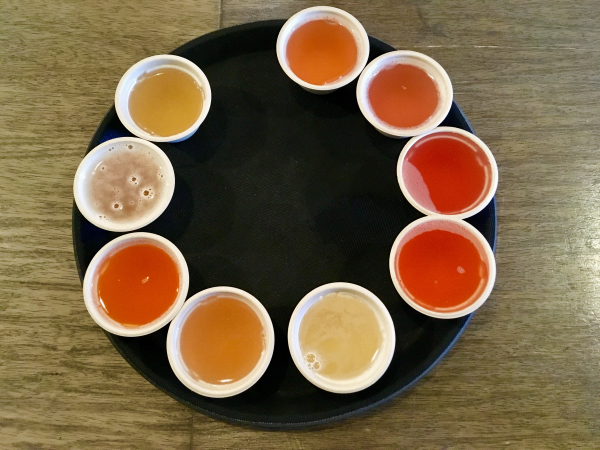

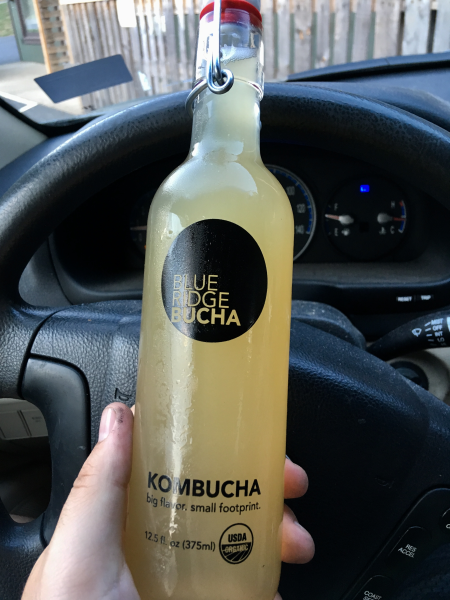
Blue Ridge Bucha!
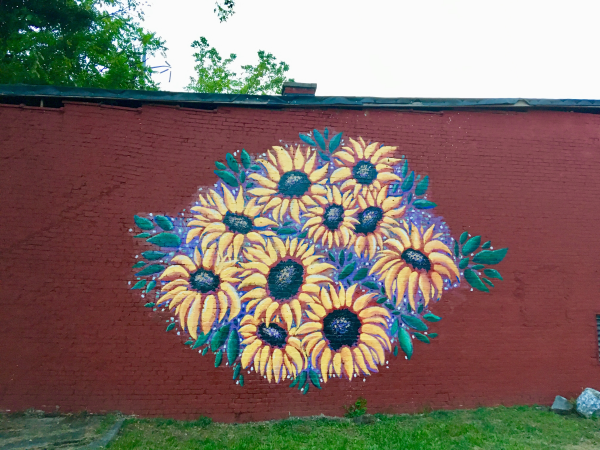
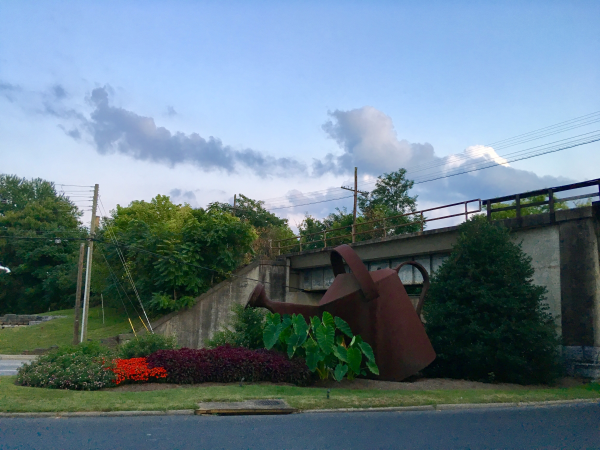
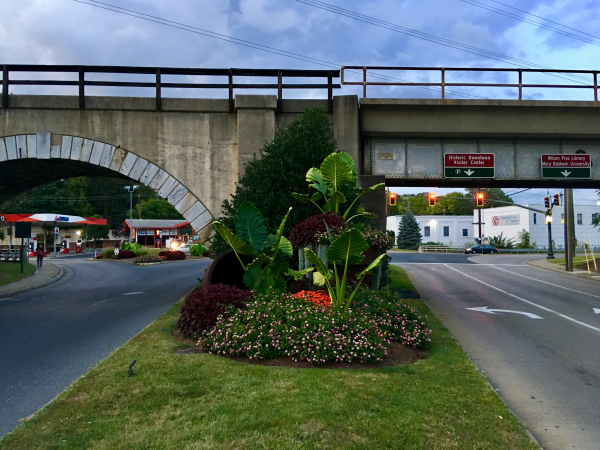
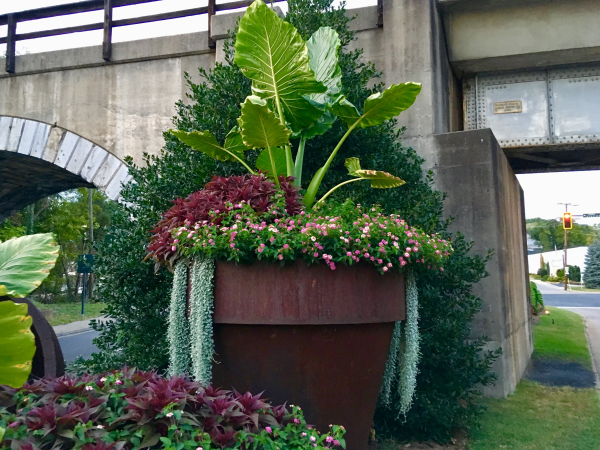
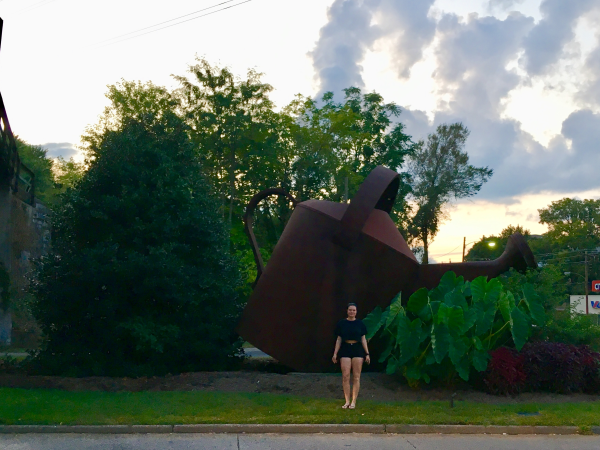
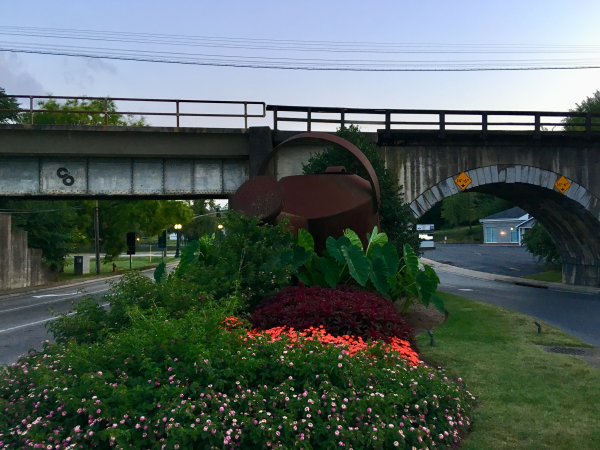
Some giant oxidized watering cans and flower pots (Alyssa for scale).
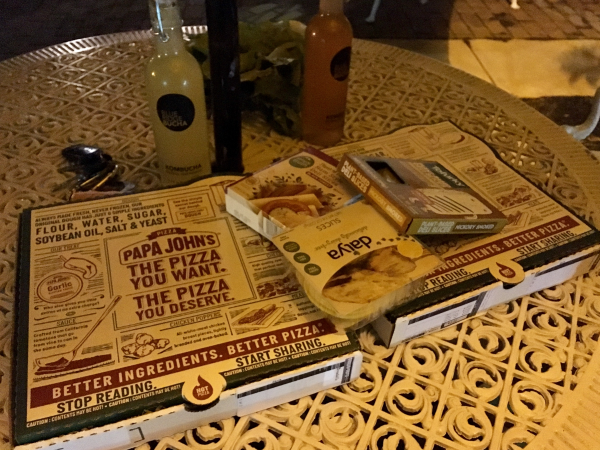
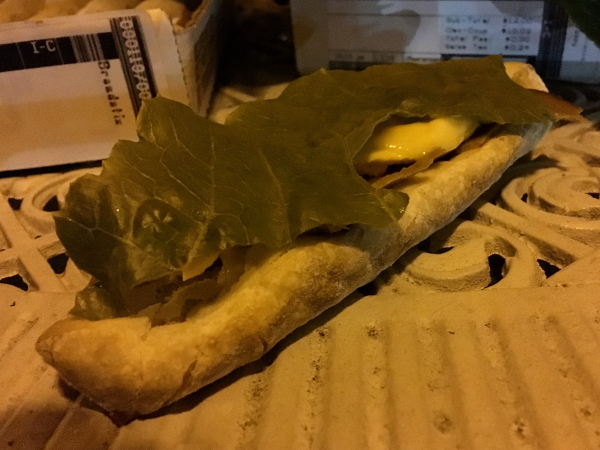
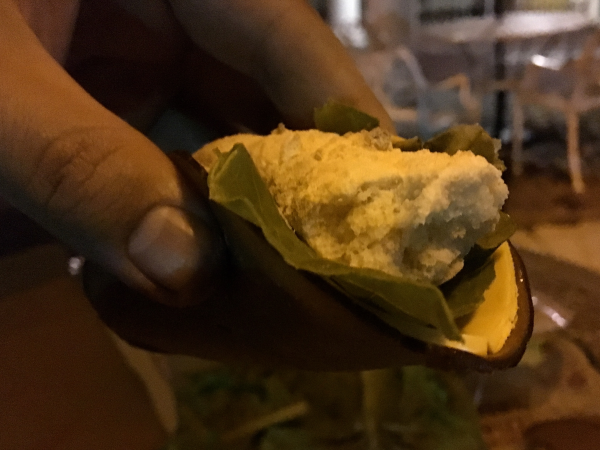
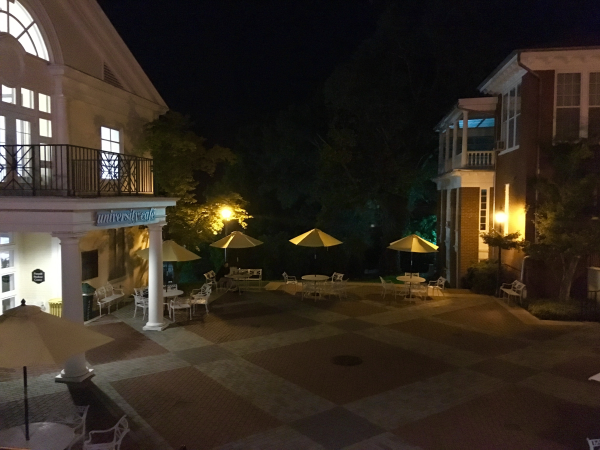
An improvised late-night picnic.
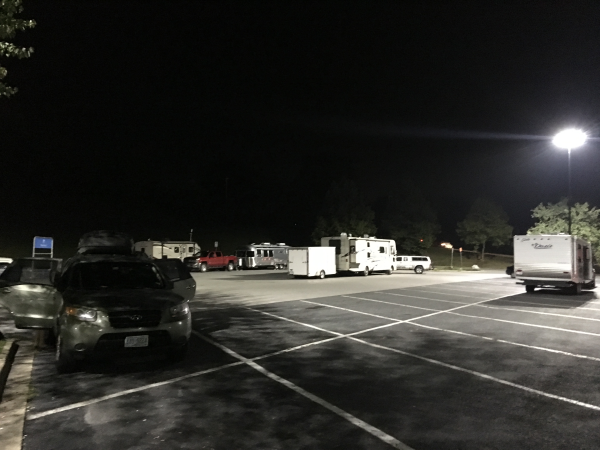
DAY SEVENTEEN
Monday, September 2nd
The main reason we even wound up in a small western Virginia town was in hopes of exploring the infamous DeJarnette asylum, officially known as the DeJarnette Center for Human Development, and later as the Commonwealth Center for Children and Adolescents. As usual, exaggerated warnings about asbestos, unsound floors, and diligent cops with aggressive legal recourse were spread around the Internet, but we were going to do it in broad daylight like we always did. It towered over the fast food chains and gas stations from atop a hill and was almost impossible to miss even from the interstate, though it could practically camouflage with the DuPont apartments behind it with their similar architecture styles. We loitered at a Starbucks for a little while before driving across the street and parking at a Lowe's. The road down a hill from the lot presented a perfectly visible and wide open trail toward the back of the asylum with only one gate and two Trespassing signs on it.
When we rounded the front, we saw a jolly man driving through the grass in a small, forest-green, vintage Volkswagen. We weren't sure what to make of him at first--was he paid security?--but waved and smiled, anyway, since one of the ways we maintained plausible deniability was by always acting confident, or at least appearing oblivious to the fact that what we are doing was technically illegal. He turned out to be another urban explorer of sorts. He was a middle-aged man whose outlet was online Volkswagen forums, where he'd post pictures of his car in front of abandoned buildings as a loophole in their board rules against images without cars included in them. Suddenly, two older women appeared, also trying to explore it. The oldest of the two asked me a few questions about the place before seeing if she could get it. She was a bad-ass urbex gramma or something. We were relieved by the nonchalant human presence around us. This place wasn't so heavily guarded after all?
Improvised blockades shut tunnel and door entrances with bulldozed dirt around the building, and most of the other doors and windows were securely boarded shut, but we simply squeezed past the slanted locked gate and up the front stairs. A thin window on the door was open. The stoop was covered in trash, used cardboard with panhandling pleas written on them in fading Sharpie, and various snack wrappers. The first thing we saw inside was graffiti on the floor warning us about the top story collapsing. Decorations indicative of a children's facility were chipping away on the walls, and the first room we went into was the Staff room, which was empty but for stacks of open and broken drawers and cabinets. We took some stairs down to what we thought was the basement, but it was actually just the first floor. We found an open elevator, which some corny kid had named "Hellevator" in graffiti. Skeletons of beds were strewn about, and a few rooms were illuminated by light cutting through any of the dirt-clogged openings. Some of the doors to rooms were more heavy-duty and threatening than others, but remembering they once housed children with mental health issues was very disturbing.
The complex we were exploring was at first just another unit of the larger Western State Hospital, a lunatic asylum that opened in 1828 and at first served as a private mental ward for the upper-class handicapped and women it was built with in mind. Its emphasis was in rehabilitation, and it operated with utopian ideals for healing. It was much like a resort the way celebrity rehabs were in modern times. By the 1900s, it began to disintegrate into what most asylum situations were by the turn of that century: overcrowded warehousing of patients, populations boosted by loose definitions for what "mentally ill" entailed, inhumane methods of restraint and outright torture, loss of funding, and leadership by literally diabolical mad scientists. Straitjackets, shackles, electroshock therapy, lobotomies, and by 1924 compulsory, state-mandated forced sterilization of patients were all in use at these facilities. From 1905 until 1943, the hospital's superintendent was Joseph DeJarnette, a Virginia physician and vocal eugenicist who supported and actively fought politically for the forced sterilization of the mentally ill, who he described as the "class of the unfit", which by his standards included, "the insane, the epileptic, the alcoholic, hereditary criminal, the syphilitic, the imbecile and the idiot." He wrote enthusiastically about the programs being led by the Nazis during World War II, and lamented how delayed "progress" in America was with regards to purifying the quality of our race.
Western State Hospital, as a private medical entity, relocated to newer facilities on the other side of town in the '70s. Meanwhile, the building we were in had been up and running since 1932 when it was founded by DeJarnette as a place focused on the middle-class, and officially became known as the DeJarnette Sanitorium, and then later The DeJarnette Center for Human Development in the '60s. A building had been constructed next to it, the Peery Building, in 1938. Joseph DeJarnette died in 1957, and somehow his name remained on this institution for several more decades. In 1972, it was converted into a hospital for children with severe mental and emotional disorders, and three years later this transition was aided by the state taking over. In 1987, the stock markets crashed and the economic chaos saw certain tax-funded programs, such as those for mental health, become deprioritized. The strain of budget cuts worsened into the early '90s, and by 1996 this particular facility was emptied and the doors were closed for good. All services were relocated to the Western State Hospital across town. In 2001, they finally renamed the institution to the Commonwealth Center for Children, removing DeJarnette's name from it along with the racist, pseudo-scientific weight it carried.
We reached the third floor, which was the most interesting. It was the brightest as it allowed the most sunlight in, but also included the most vibrant and large-scale graffiti pieces. The quality of graffiti at this abandoned location overall was perhaps the corniest we'd ever seen. It was everywhere, and amounted to either crude sexual comments and dirty words like it'd been written by kids who only recently discovered sex and swear words, or legitimately talented writers with skillful tags and hand styles writing extremely cringe-inducing phrases intended to be fake-deep or spooky but only coming off like nu-metal lyrics. At one end was an open gateway to step off and kill yourself. I'm not sure what purpose it served or what it once had been. Some scattered trash was below us, mostly pieces of windows and things that covered them up. Across the way was a small steam and power plant building with a thin smokestack. Once cute but now vandalized paintings lined some of the halls, like that of a jackrabbit. Children's names were all taped and jumbled above one door. Some rooms had leftover decorations, such as Lion King stickers. We eventually made it up to the attic, and from there to the roof. The graffiti we first saw was right: While there weren't any visible holes, the soft rock floor of whatever was holding that area up under the rooftop was definitely ready to give in certain parts. We crept slowly toward the doorway that led outside. When we stepped out, we realized it had begun to rain. We walked through an enclosed area where the machinery of one of the elevators was hidden. On the other side of that, as I was taking a video of the view, I noticed a cop car speeding down one of the dirt paths toward the asylum. I was sure he'd seen me.
We rushed back in to where the entrance was. When we peeked out, we saw the cop and two others who weren't cops but looked like women. I immediately assumed they were "concerned" small-town snitches of some sort. We scrambled back downstairs to one of the several other exits we'd found and climbed through a window, then ran quietly across the piles of dirt being used as security. As we rounded back behind the building, we saw two young girls I must have wrongly identified as grown women snitching. They'd just been asked to leave, they told us, but no citation or cuffs. When we got to the gate we'd first come onto the property through, an empty cop car was parked at it. We were confident we'd gotten away undetected once again. Next thing we knew, the other cop car was barreling up behind us. We didn't try to run or anything, and stopped to talk to them as the rain worsened. We remained friendly and civil. We told them we were traveling and did this a lot, and that we never took trespassing signs seriously. I told the one it was the first time we'd ever ended up having a run-in with cops, which was true. They took us separately to get our information in their cars.
I asked, "Is there a reason we're being separated, sir?"
He claimed it was to "keep us dry" and asked me why I asked.
I told him, "For my safety."
"I don't appreciate the connotation," he said back.
I tried to make polite conversation. He told me they got calls about the place a lot, and that it took them away from "more important things". But the reality was that they could probably afford to send two cop cars to an abandoned building in their small town, and that neither of them had any legal obligation to respond to those calls, anyway. They let us off with a warning because we were from out of town. We found out they hadn't actually been called on us, they'd actually been called on those girls who didn't even get to make it inside. Meanwhile, we saw the entire building over the course of three hours. We skipped away holding hands toward a rainbow arching overhead, celebrating another successful trespass and evasion of the law.
For dinner, I got a big shitty double Impossible Whopper (with Daiya cheddar I added) because we were hungry fake vegans in western Virginia. It was pretty neat to hear others ask about and order it. We sat and listened to an adorable father talk to his little girl in the most affectionately nurturing, playful, and kind way imaginable. It warmed our hearts. The accents were deep where we were.
Our final stop in Staunton was an eccentric and kitschy home on Beverley Street covered in plastic floral arrangements. Lived in and eventually owned outright by a woman named Myrtle Cason, known locally as the Flower Lady because of the way she decorated her home, her neighbors tolerated it and it had become a tourist stop in its own right over the years. The year before, Myrtle was moved into an assisted living home, leaving her to put the house up for sale. Then, that past February, she passed away at the age of 89 after spending over 40 years in Staunton. The community collected plastic flowers in her honor. When we got there, there were still plenty of decorations left, though much of it drained of its color. A foggy window allowed me to see more weird collectibles and flowers inside. The padlock on the door to it was undone, but I opted to not break and enter.
We started driving toward and across the state border into West Virginia, where I knew we had very little planned. The sunset over the mountainous forests surrounding us was breathtaking as we zoomed down the interstate. We got to our Walmart for the night in a nowhere town called Quincy and browsed for snacks. I found some of the newly vegan Morningstar corndog bites and immediately bought two boxes. Next, we had to figure out a means of heating them up, which when living in a car usually meant finding a public microwave. We briefly went into Charleston to a 24-hour Go-Mart and sat and ate them with yellow mustard packets. I wished they'd been baked, but they were still delicious.
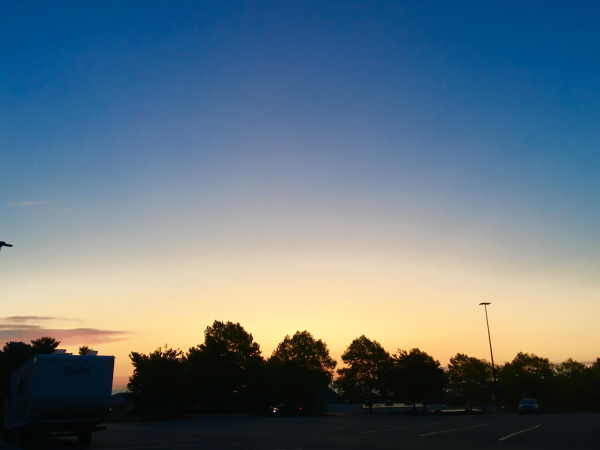
Sunrise over the Walmart.
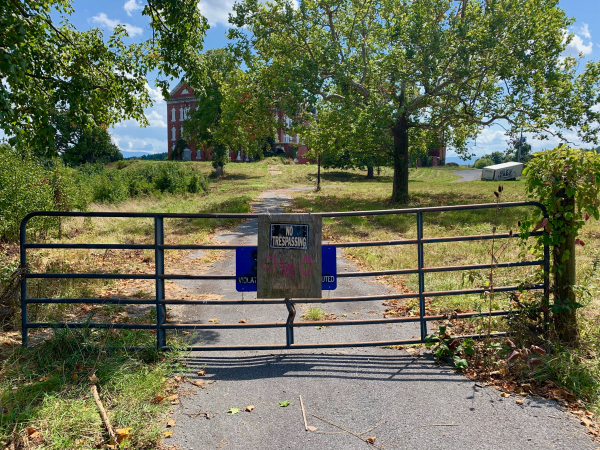
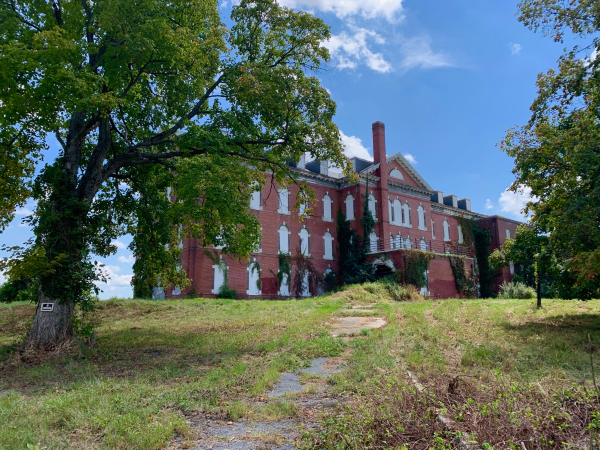
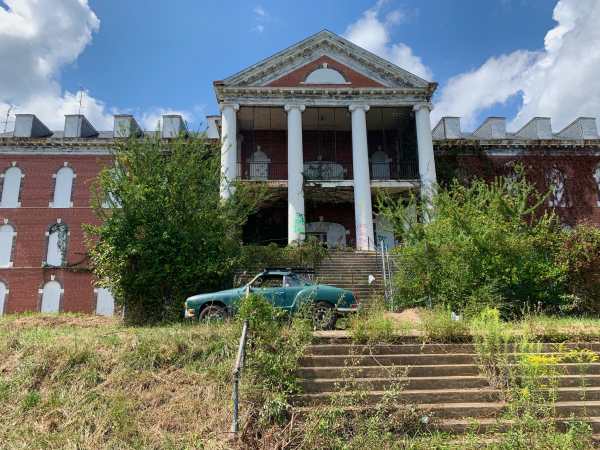
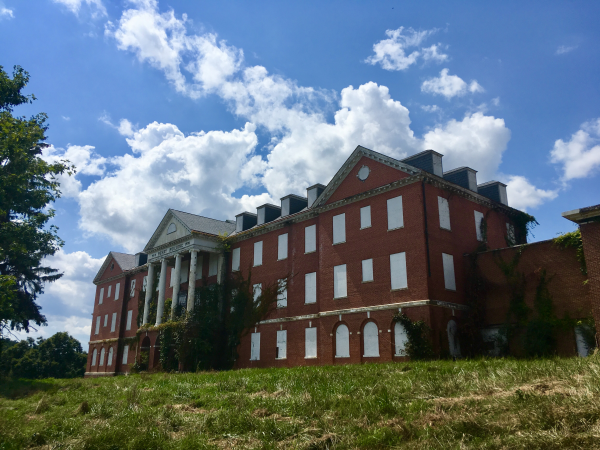
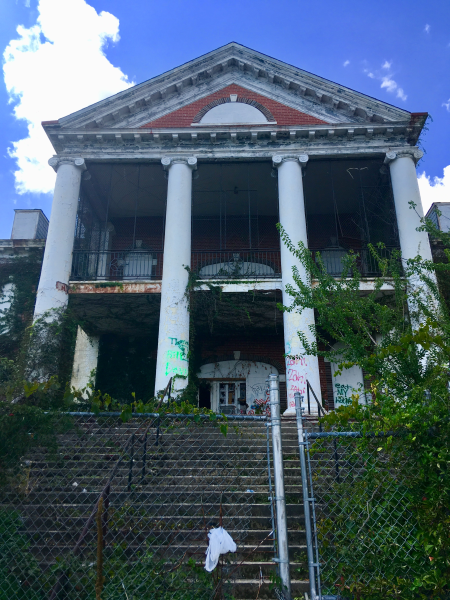
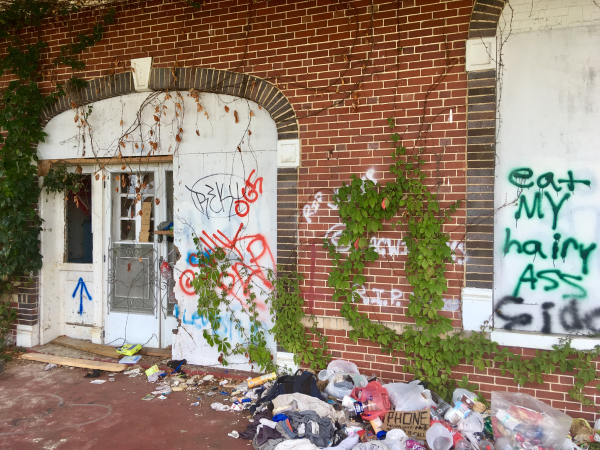
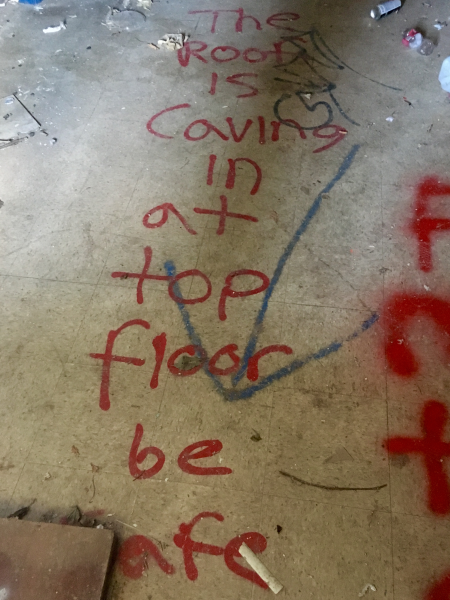

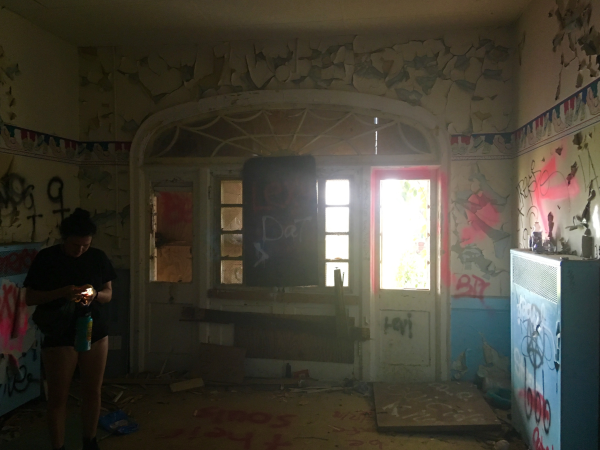
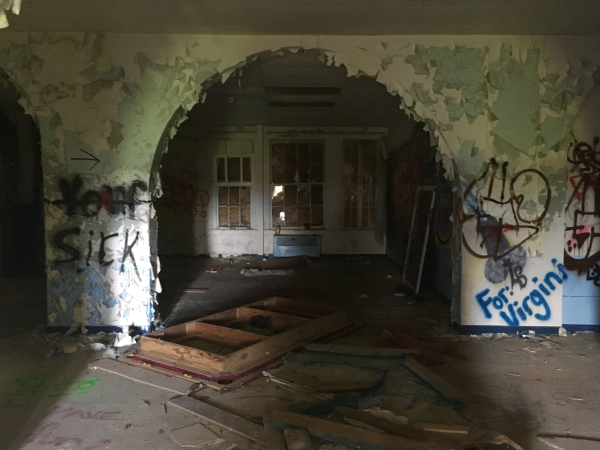
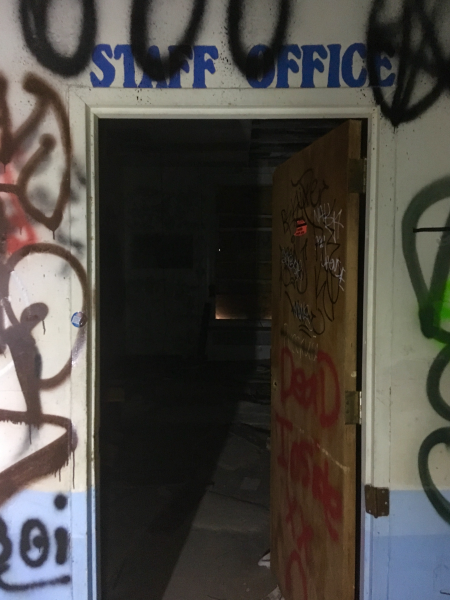
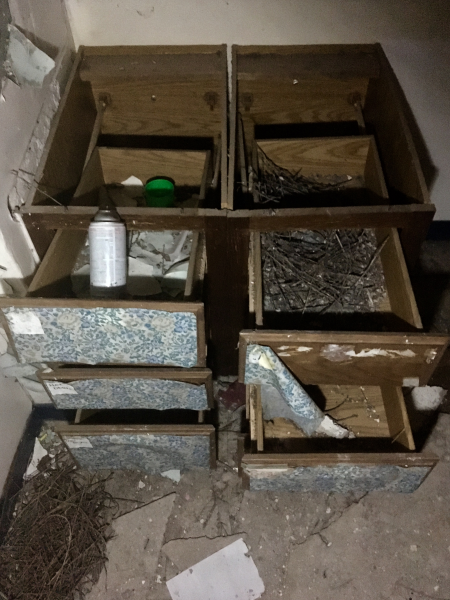
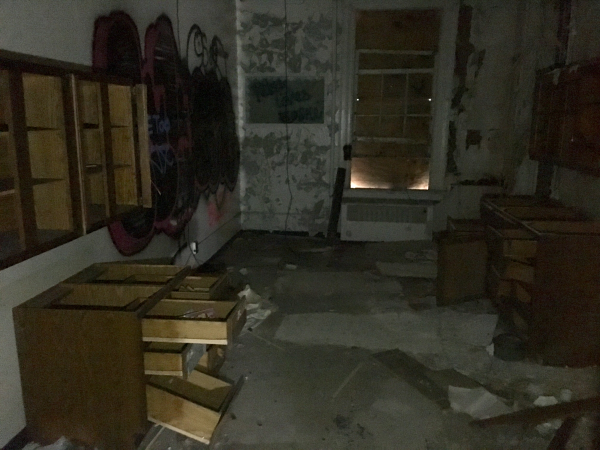
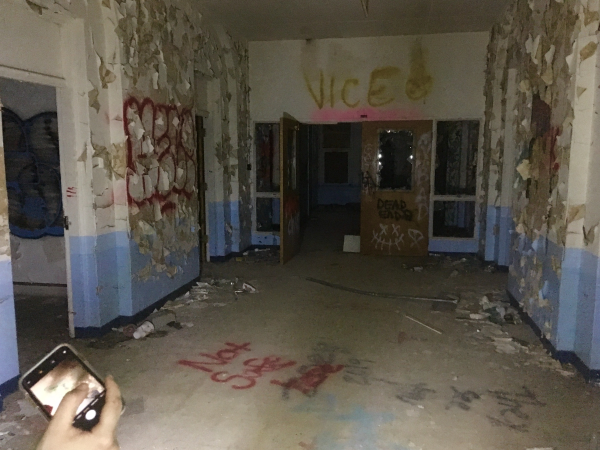
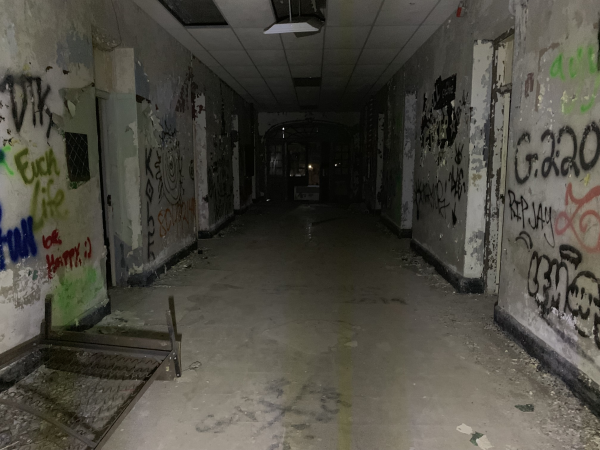
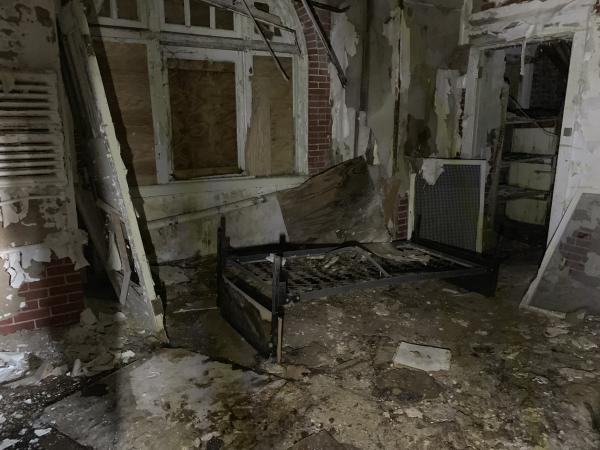
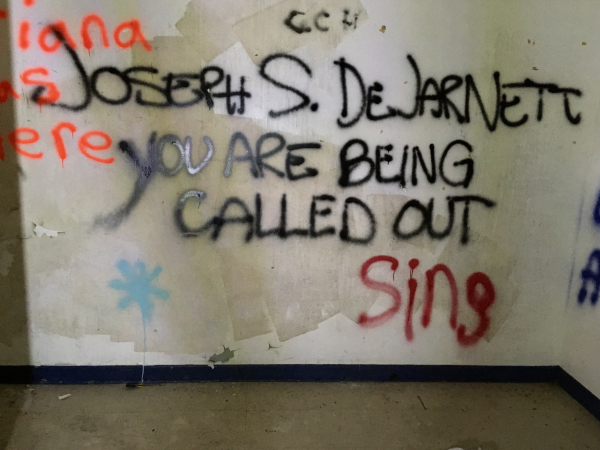
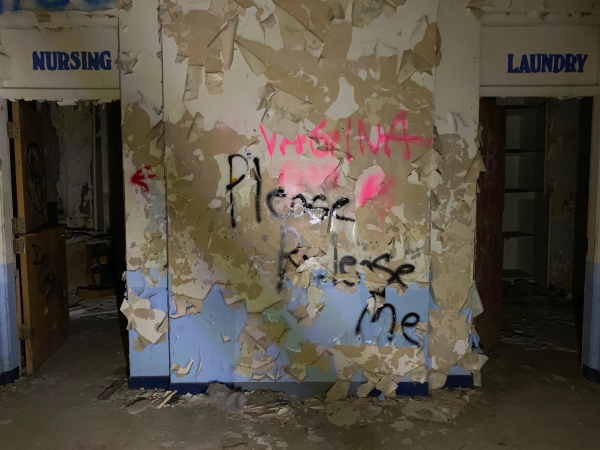
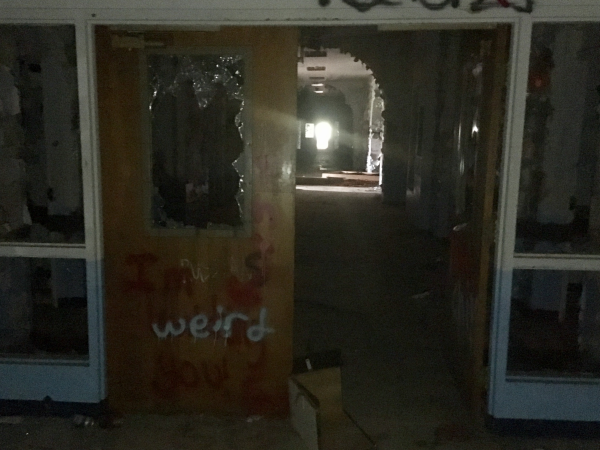

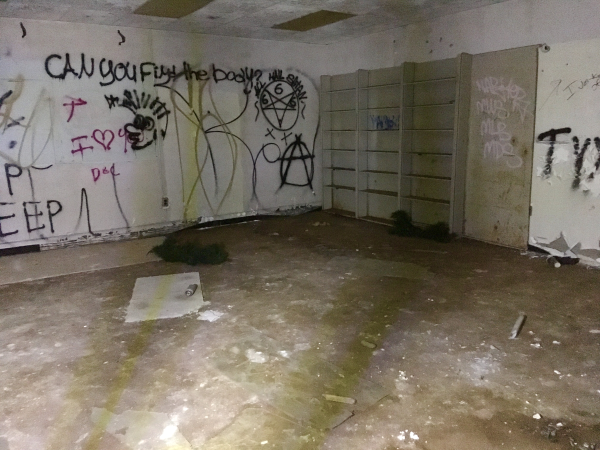
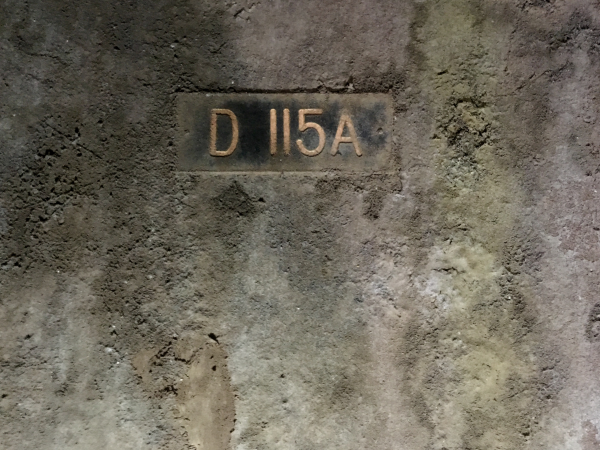

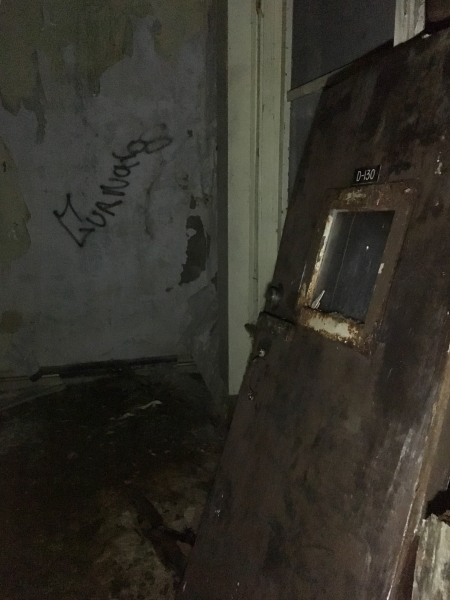
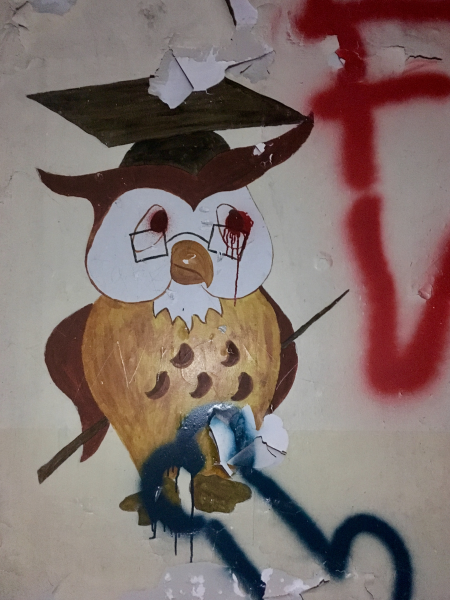
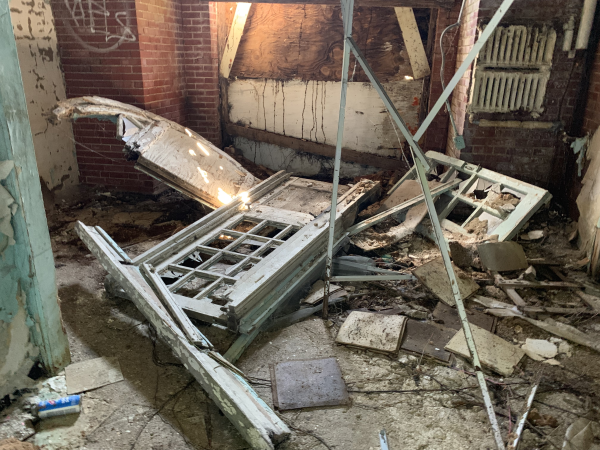
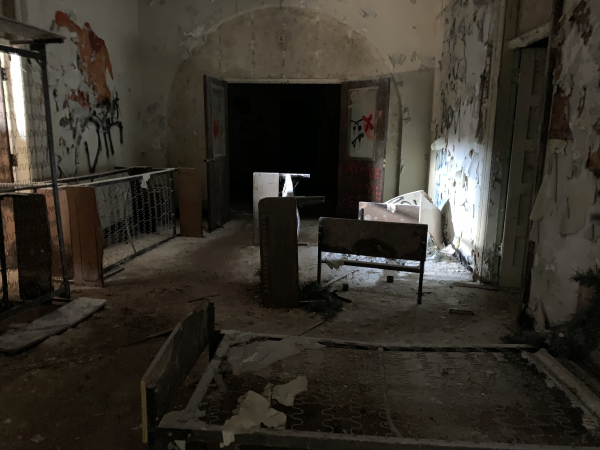
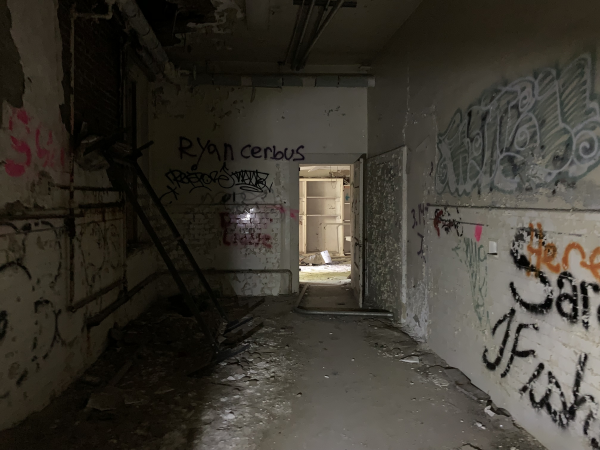
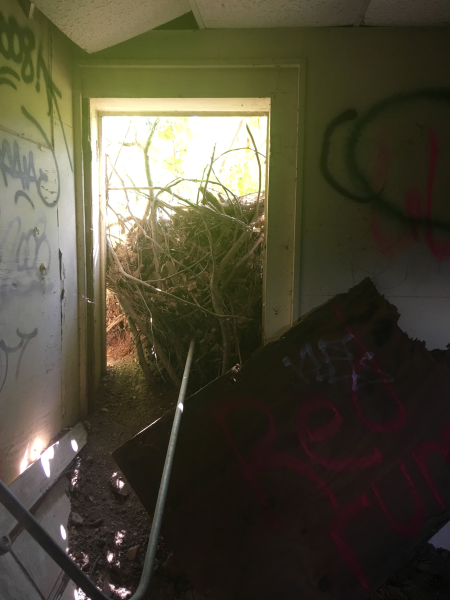

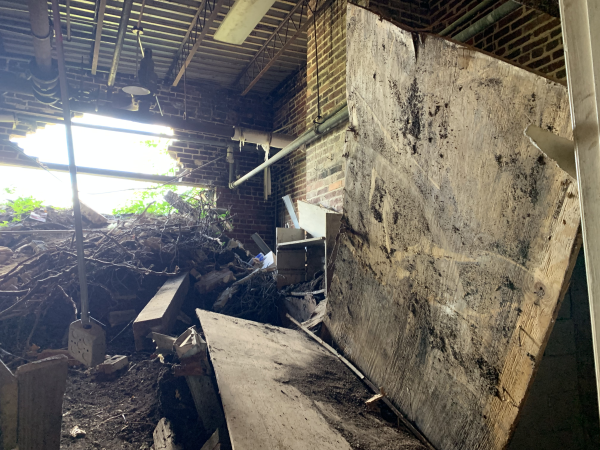
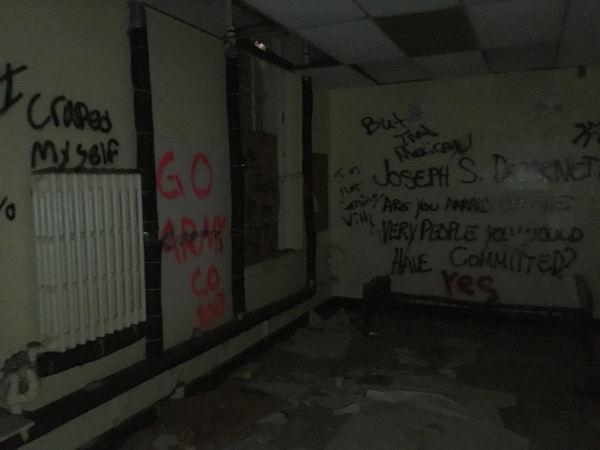
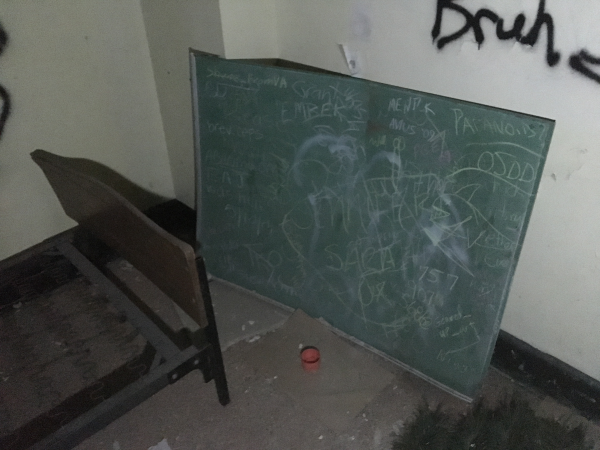
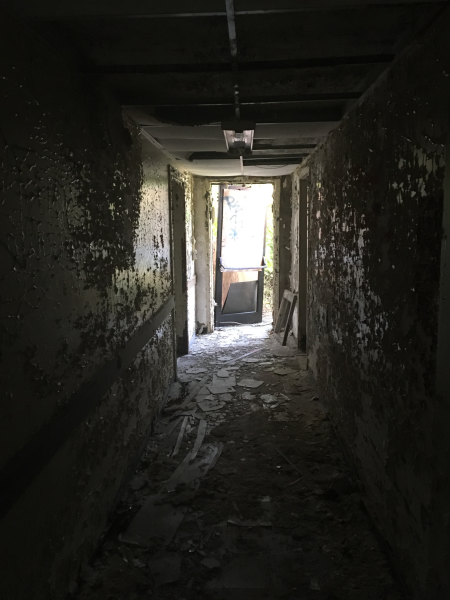
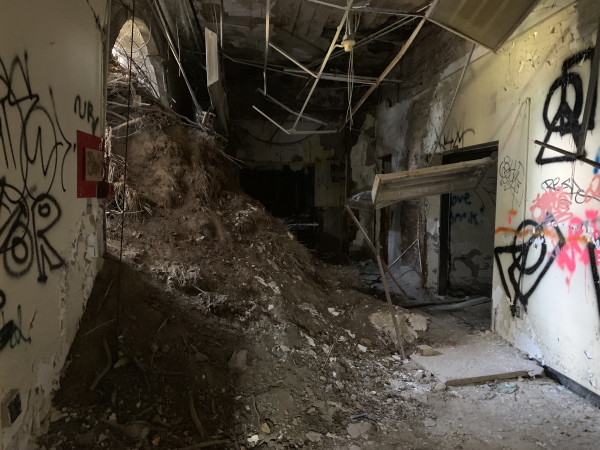
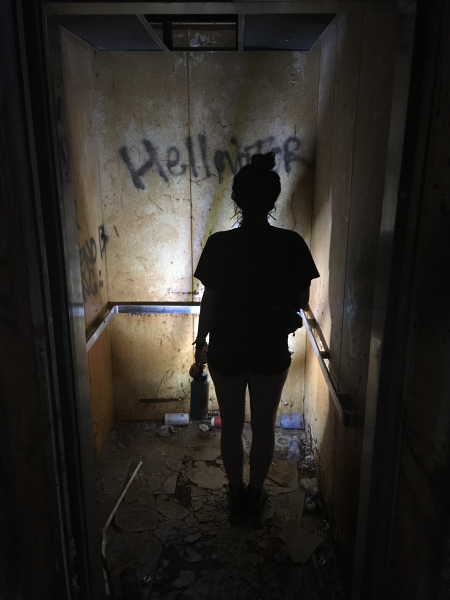
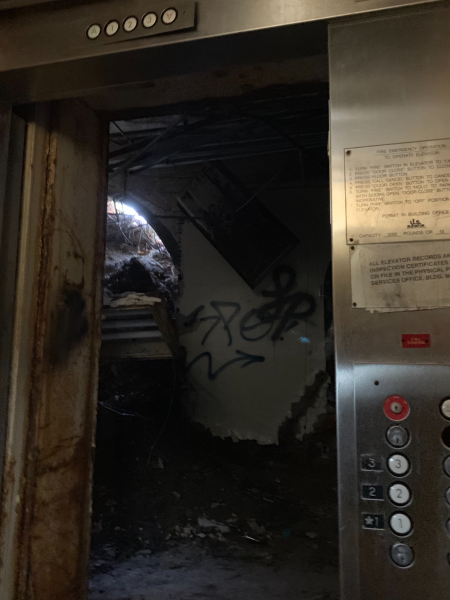
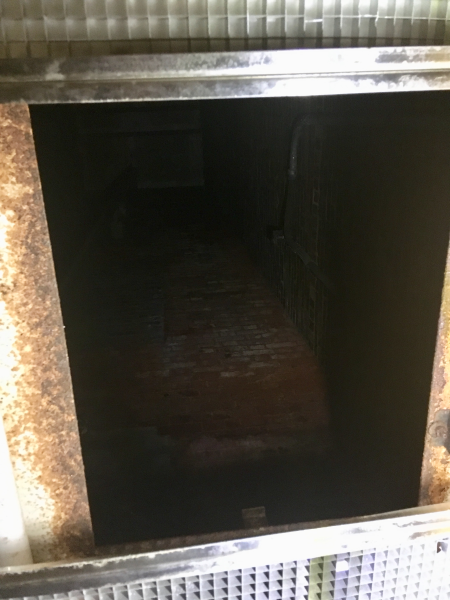
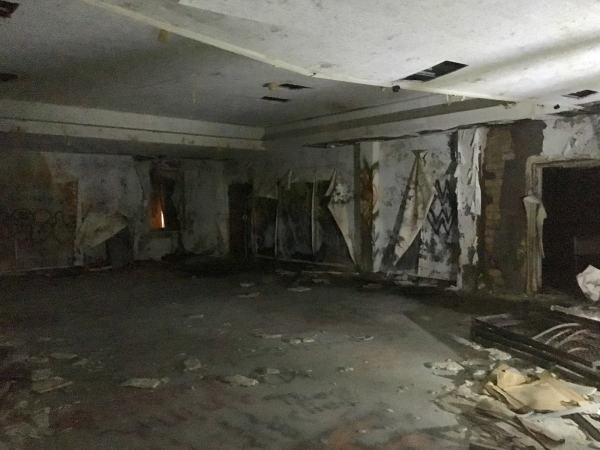
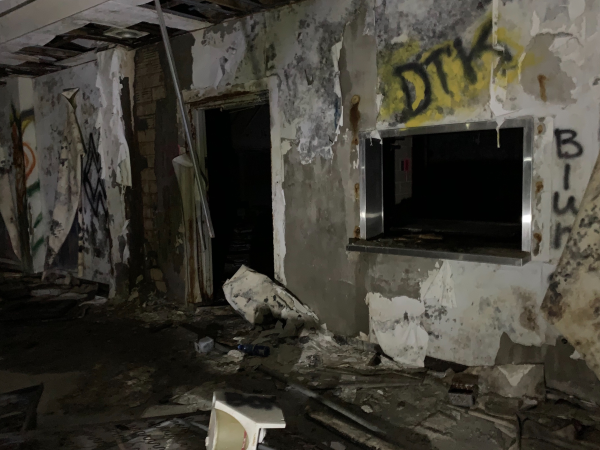
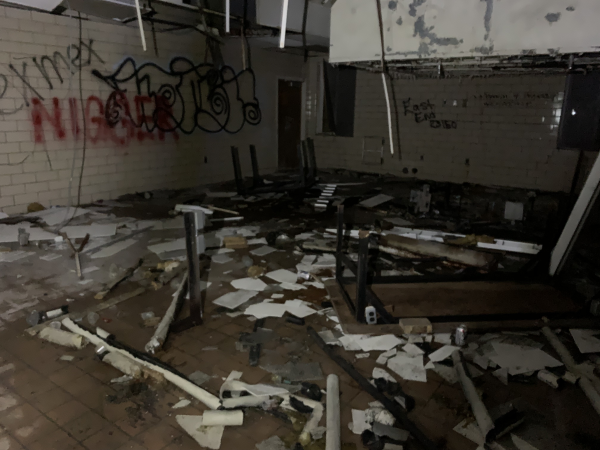

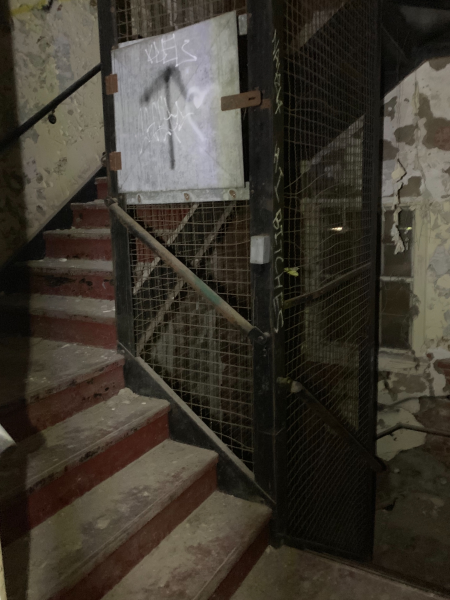
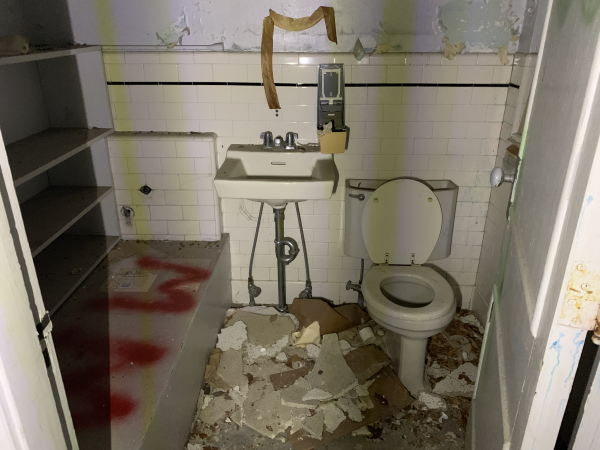
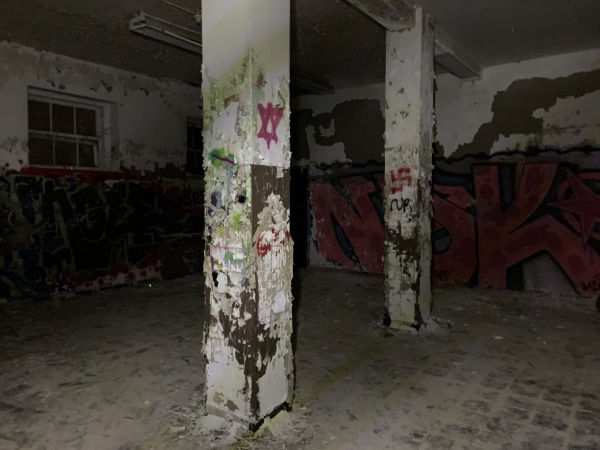
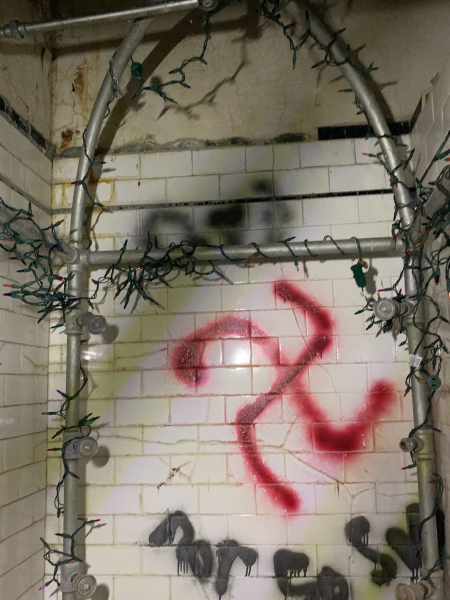
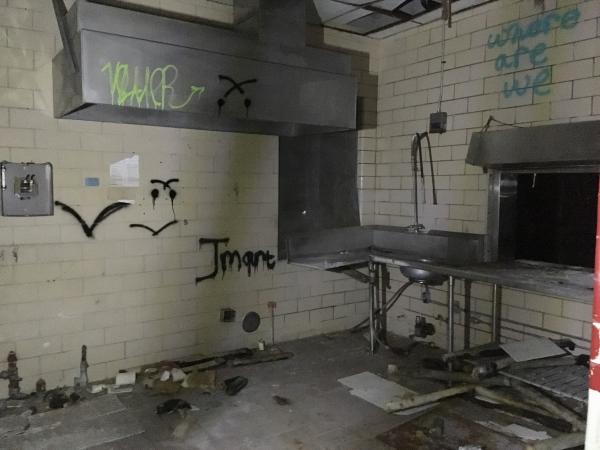
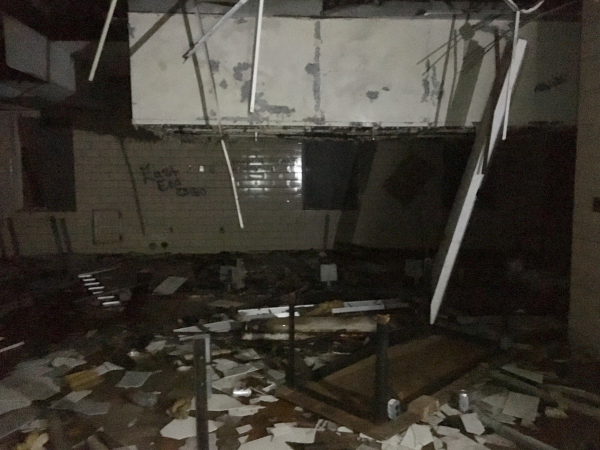
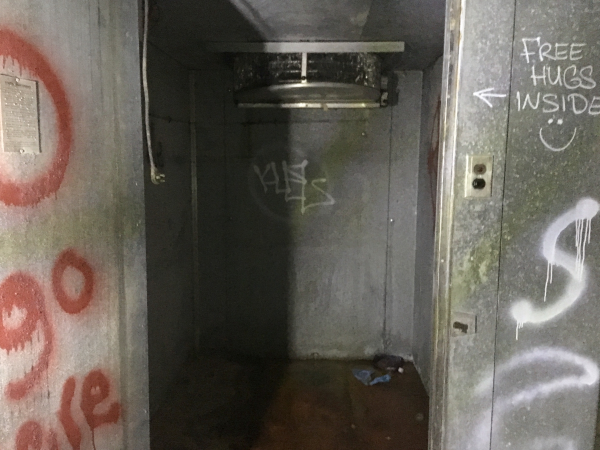
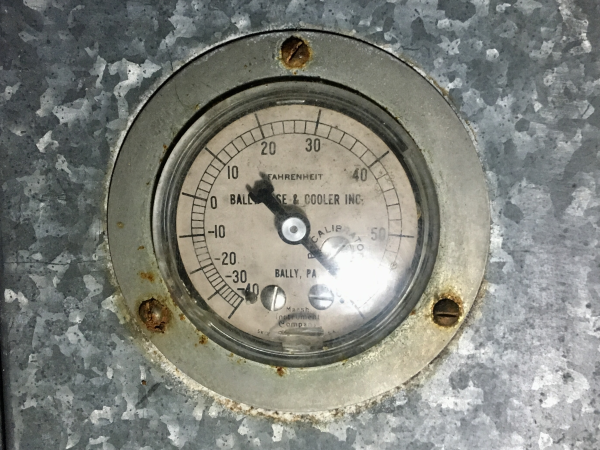
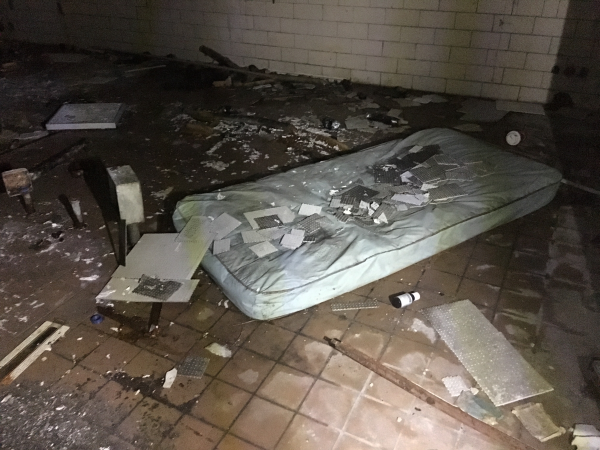
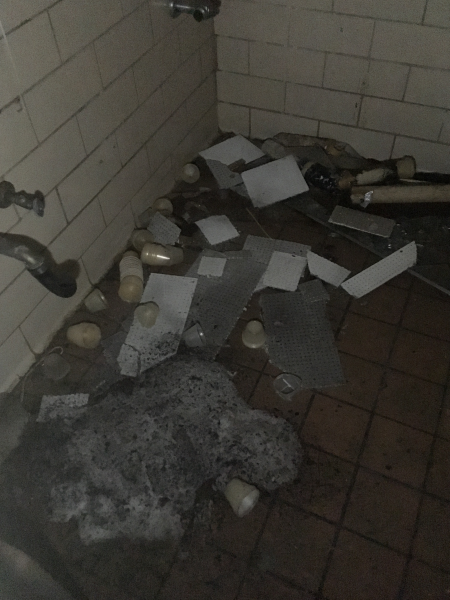
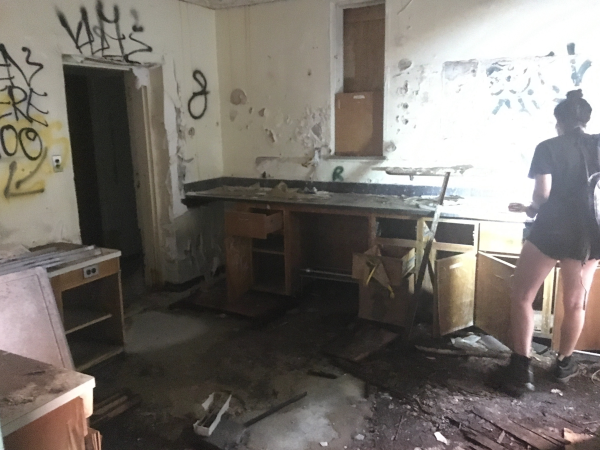
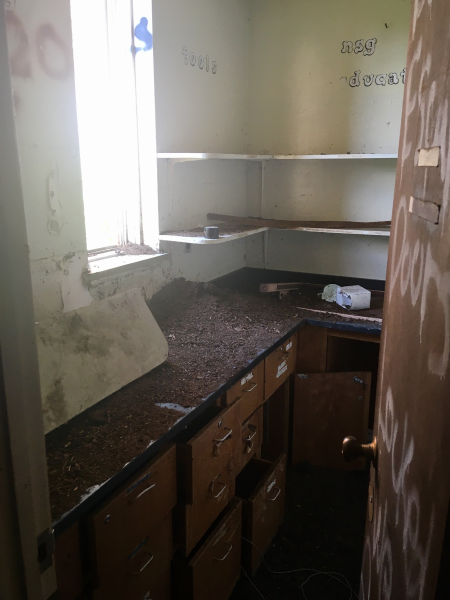
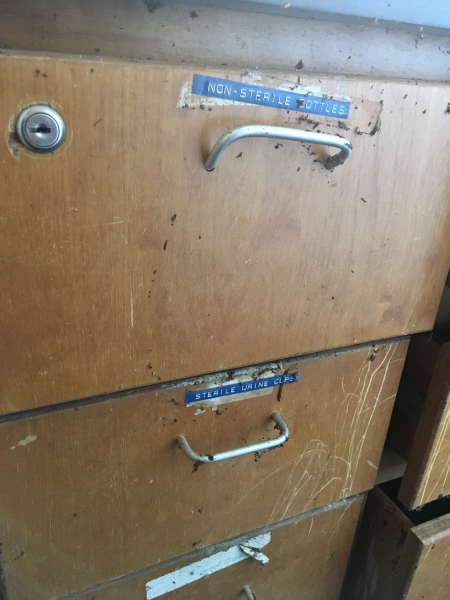

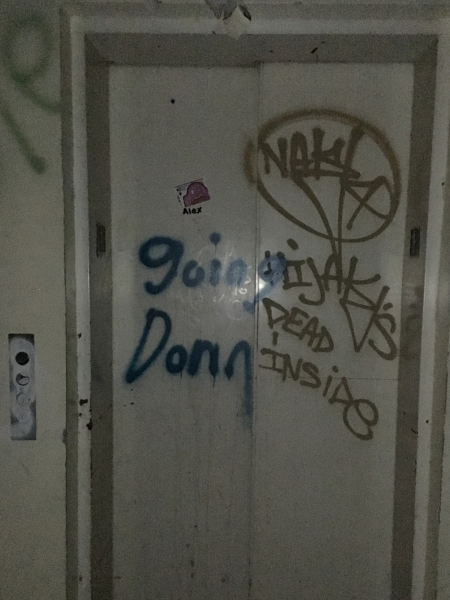
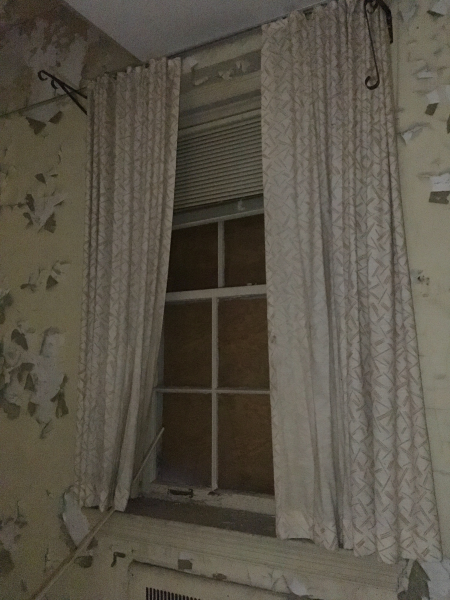
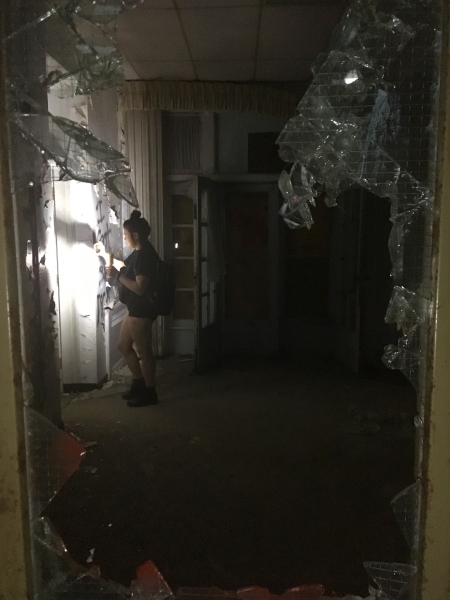
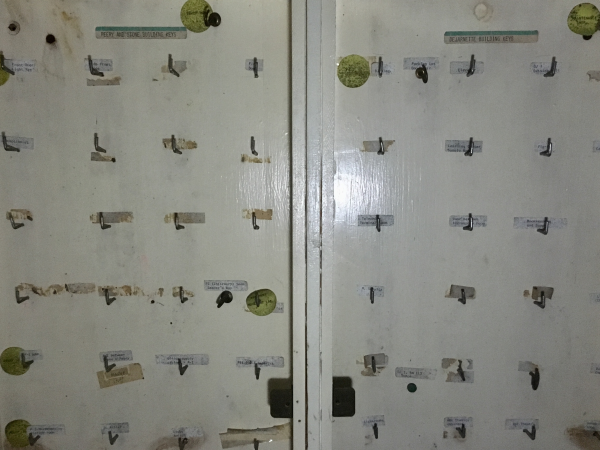

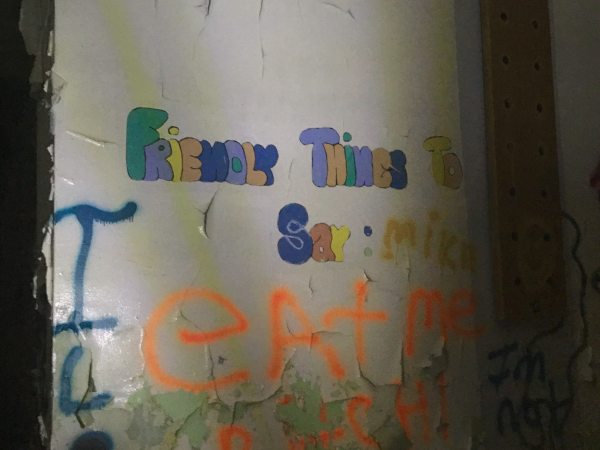
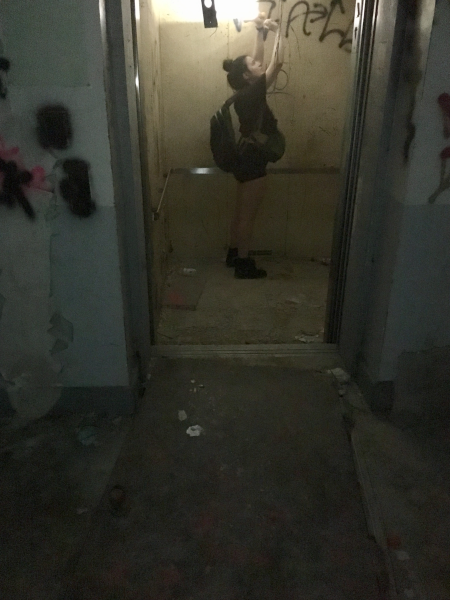
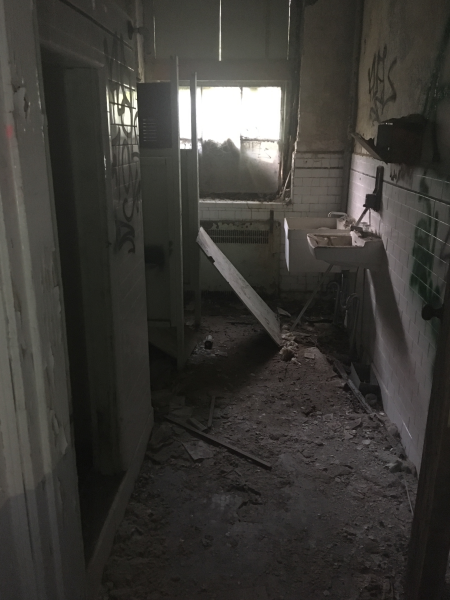
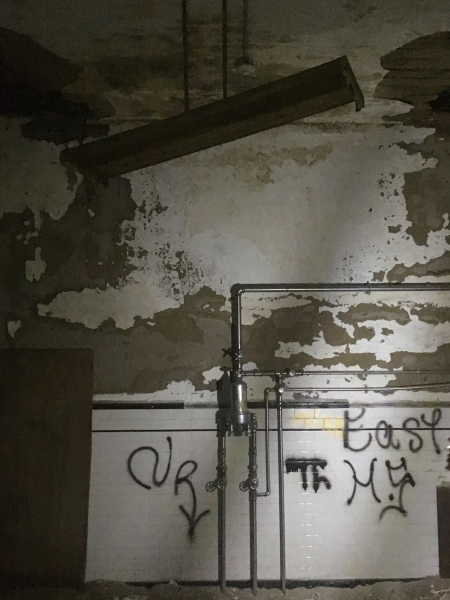
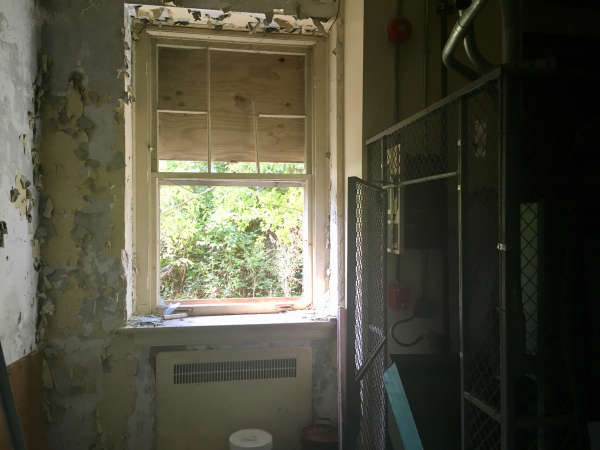
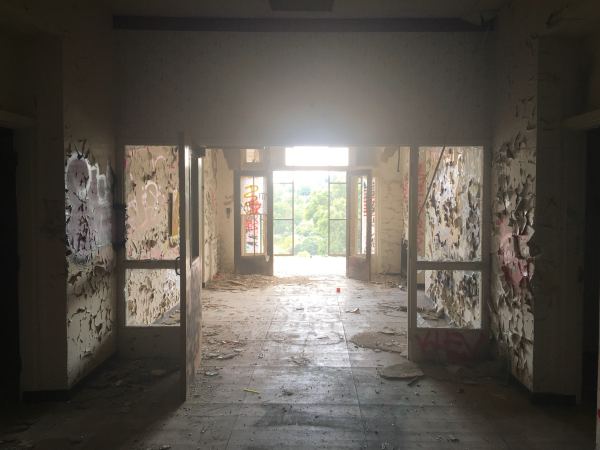
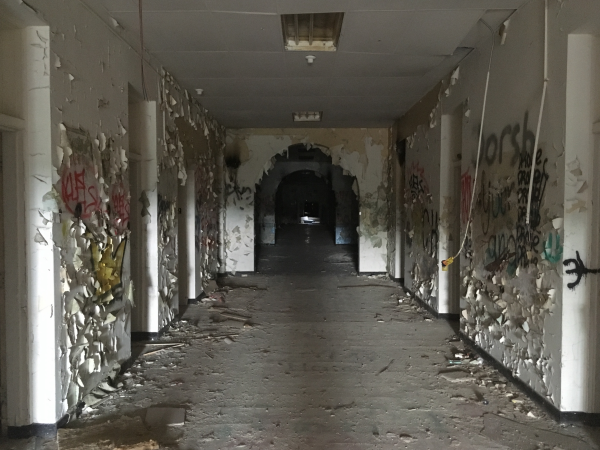
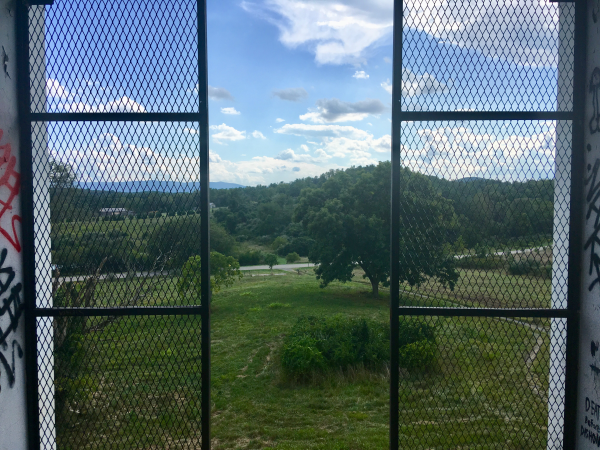

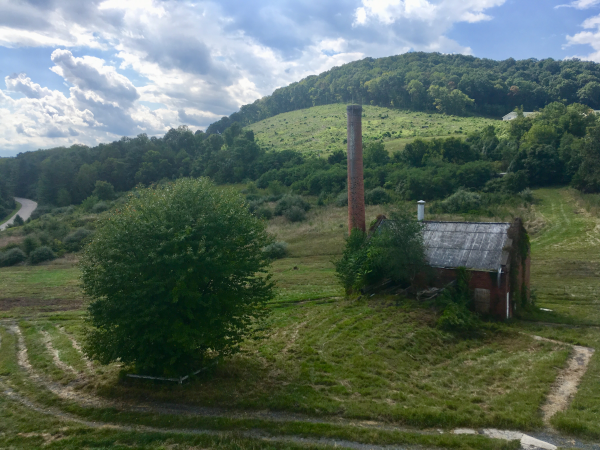
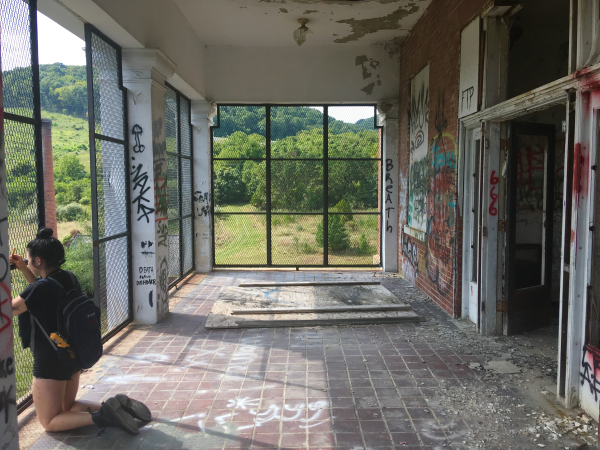
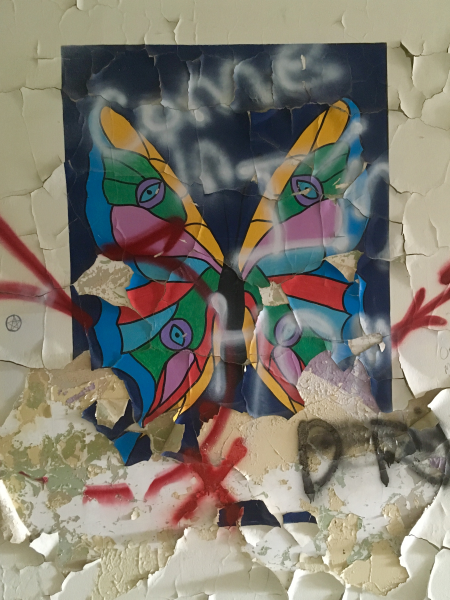
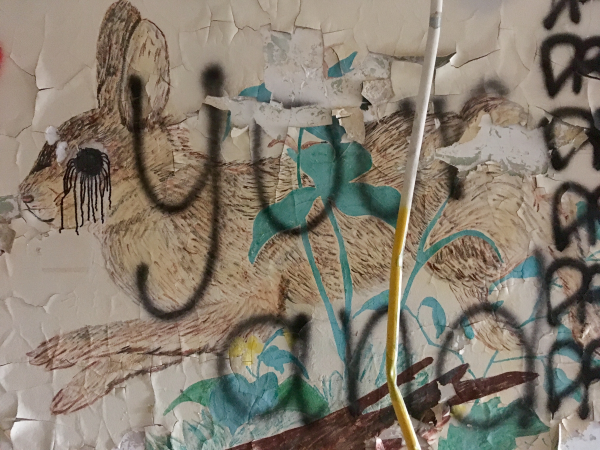
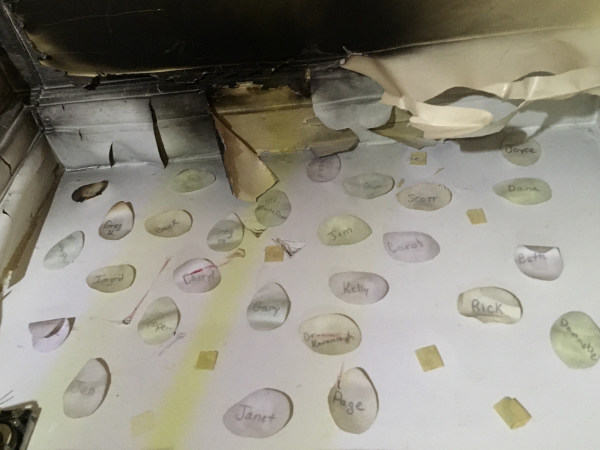
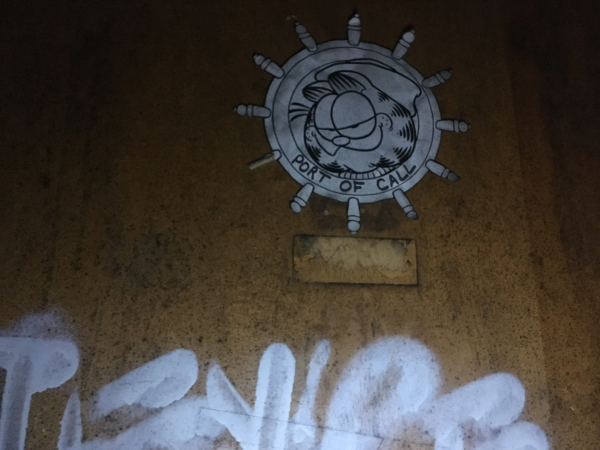
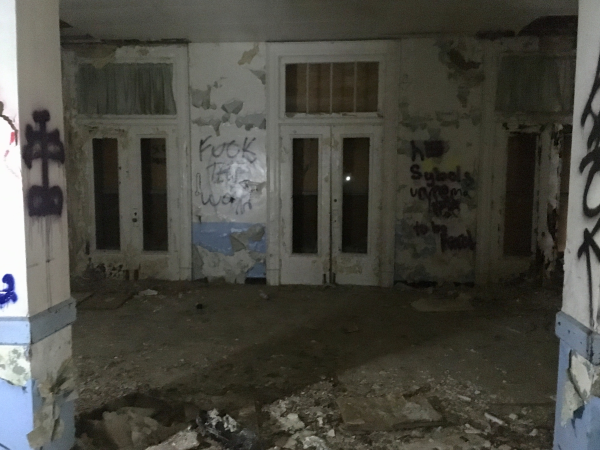
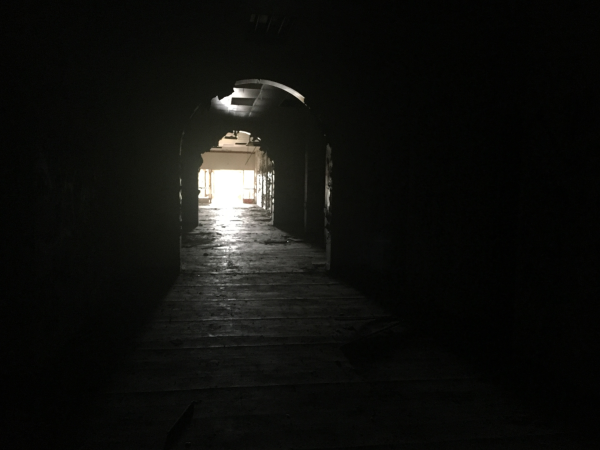
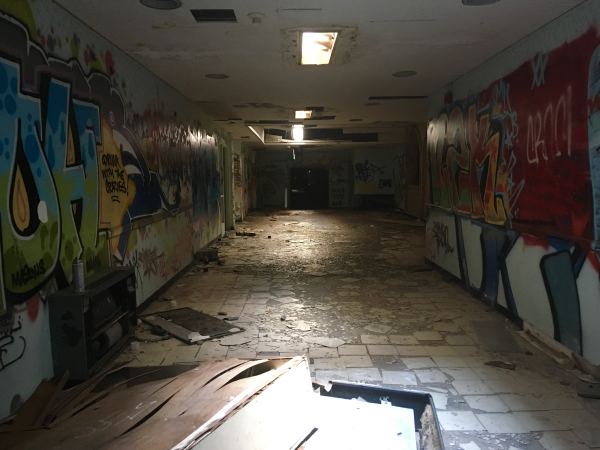
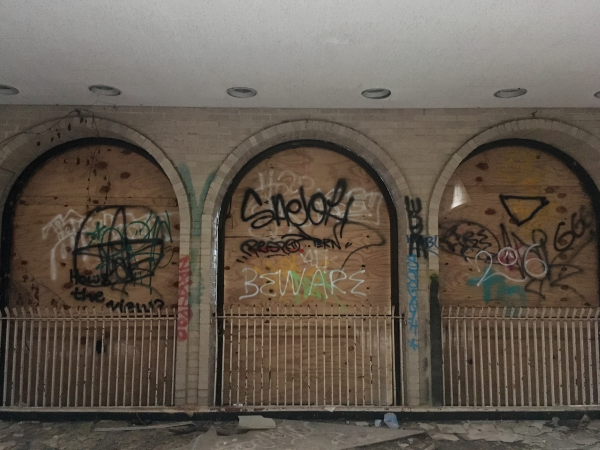
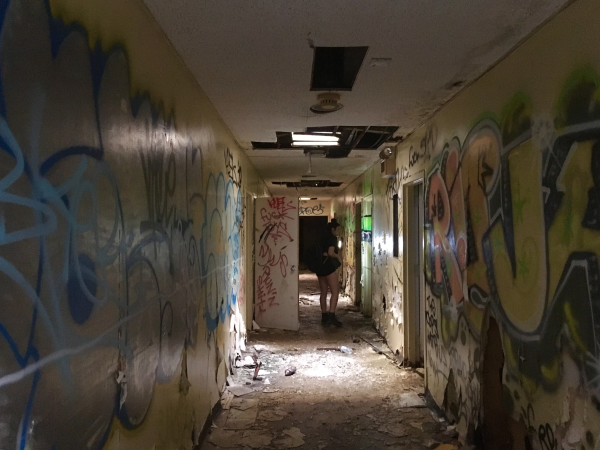
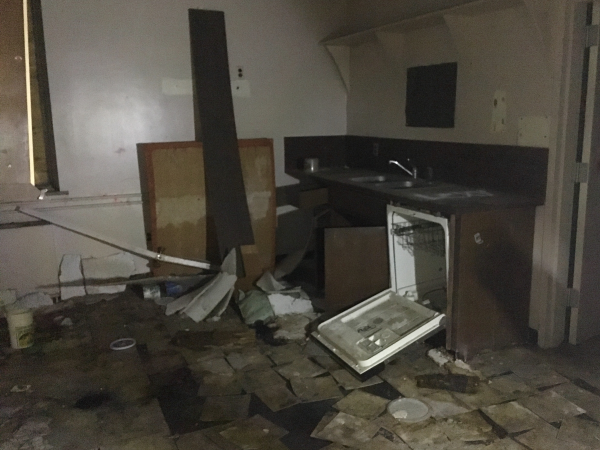

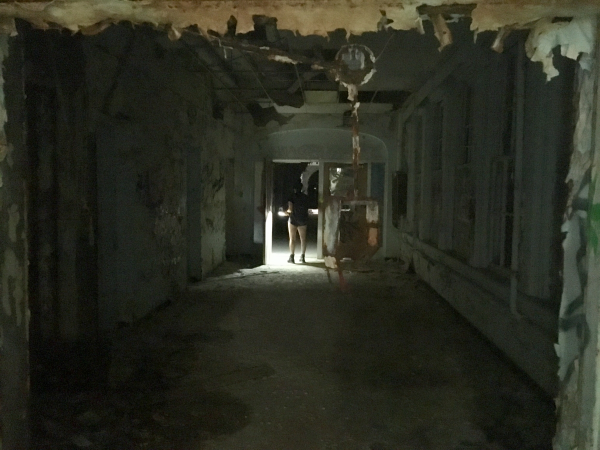
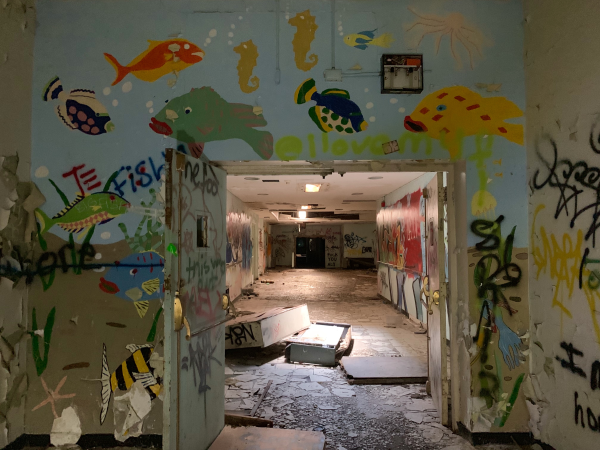
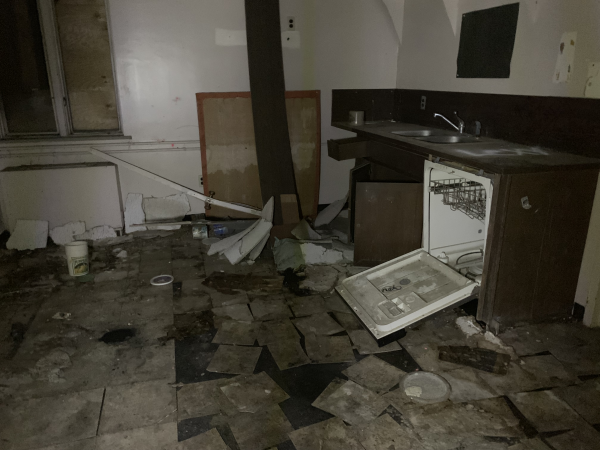
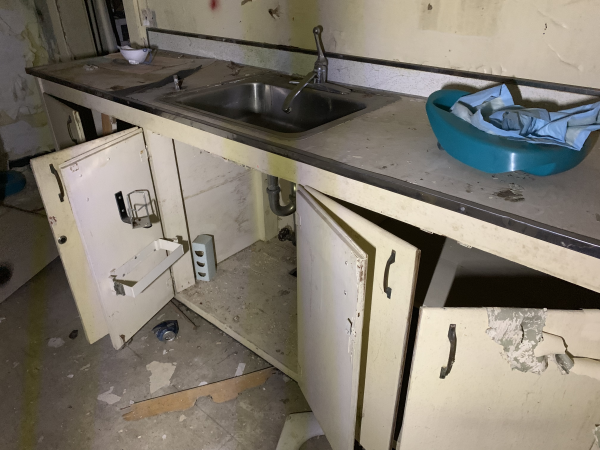
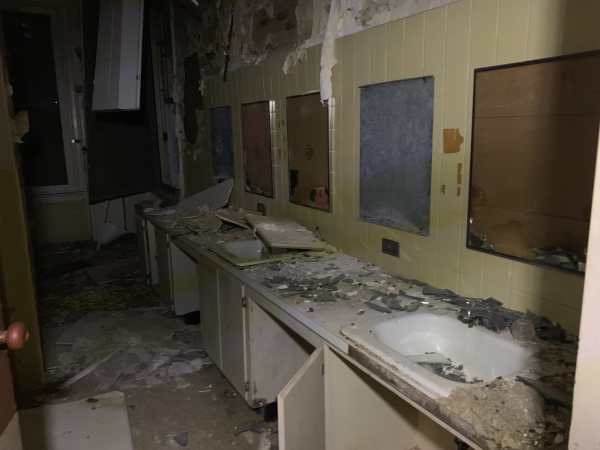
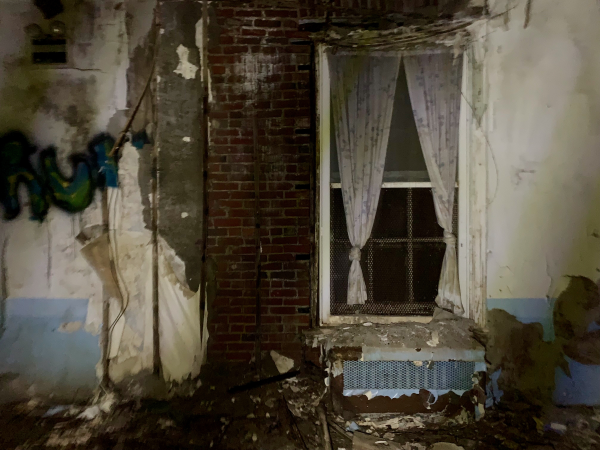
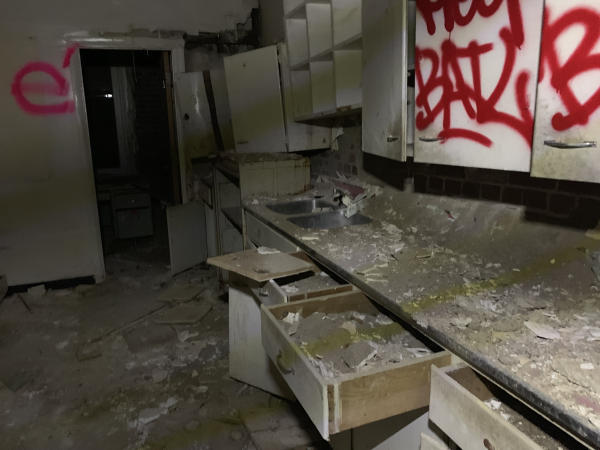
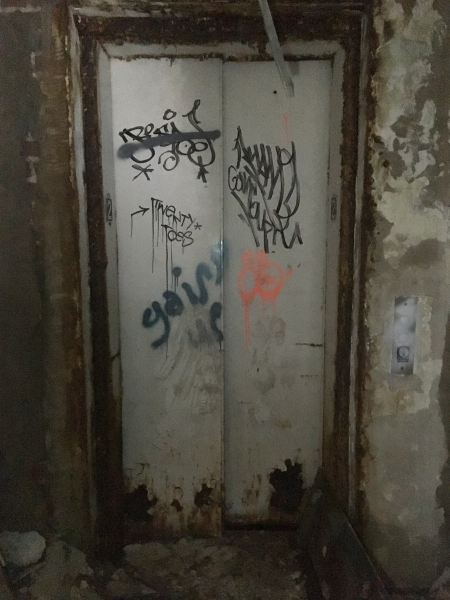
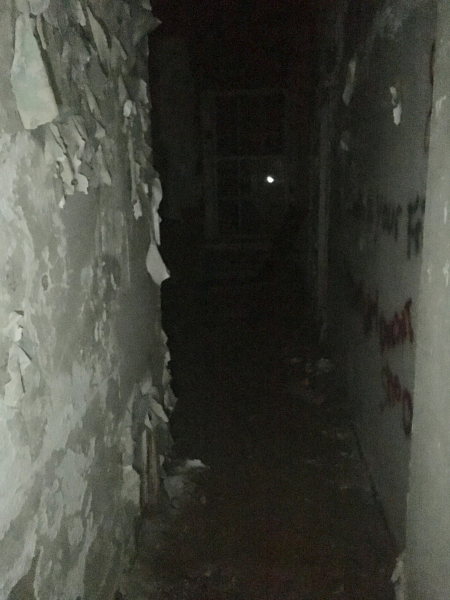
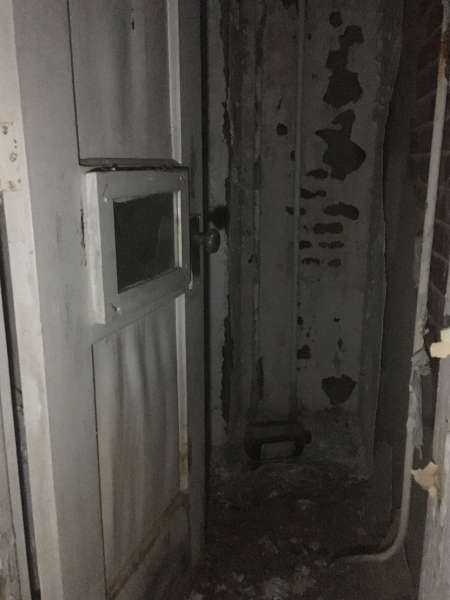
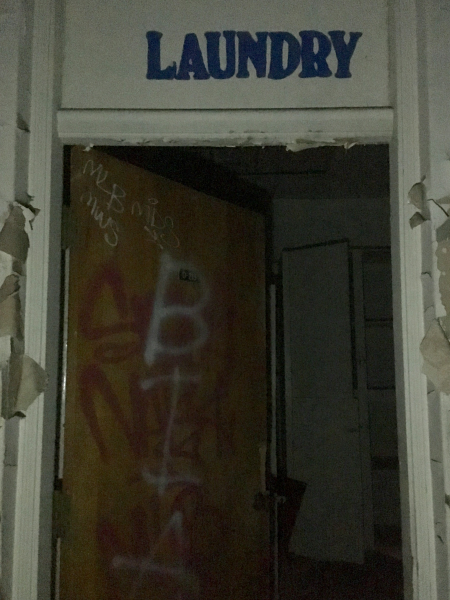
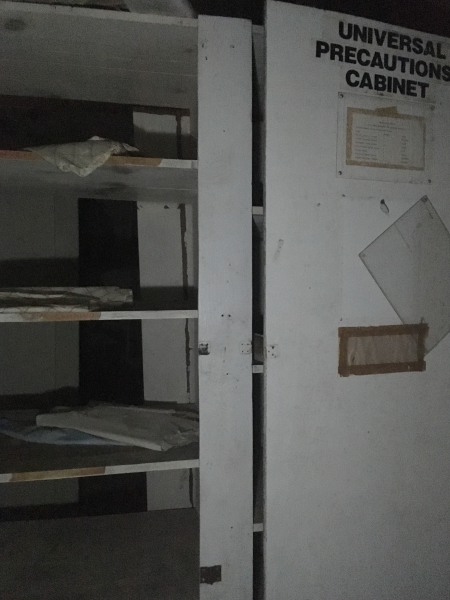
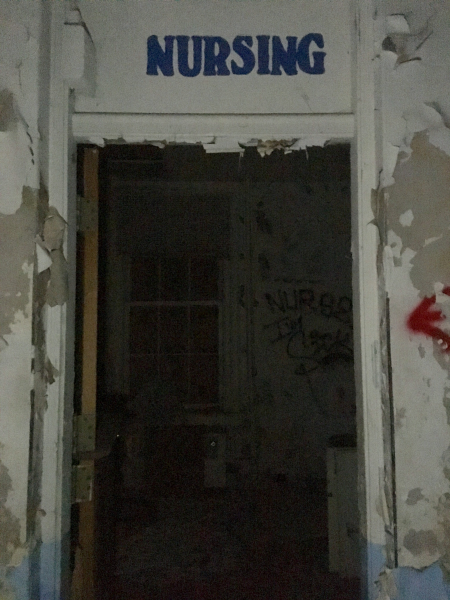
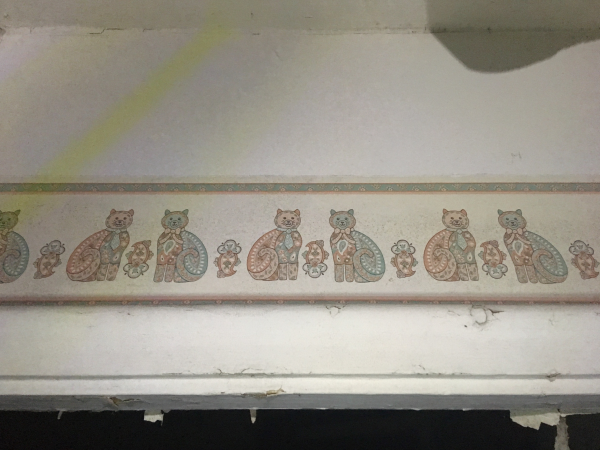
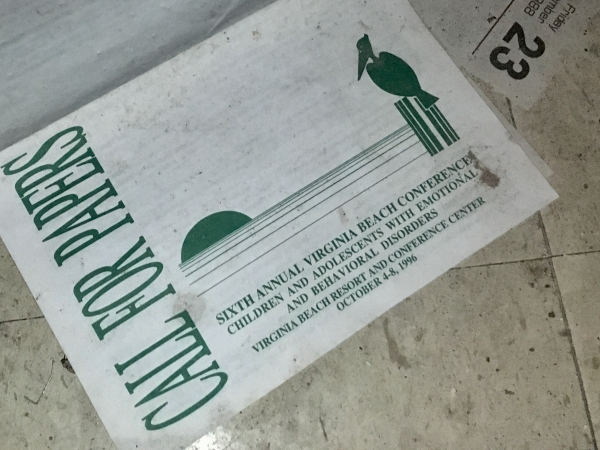
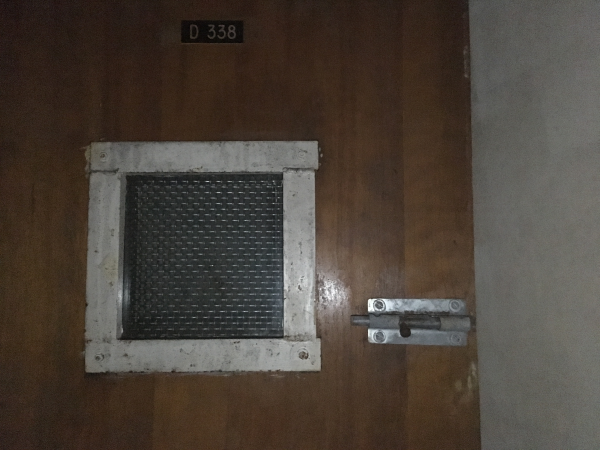
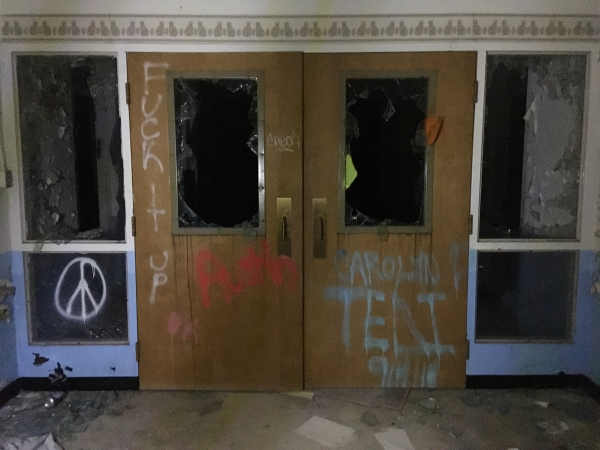
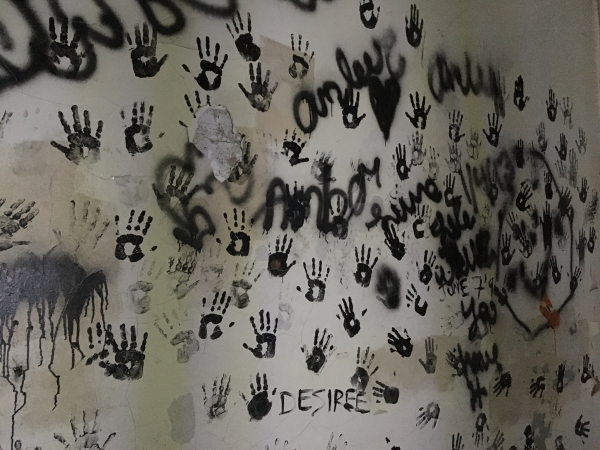
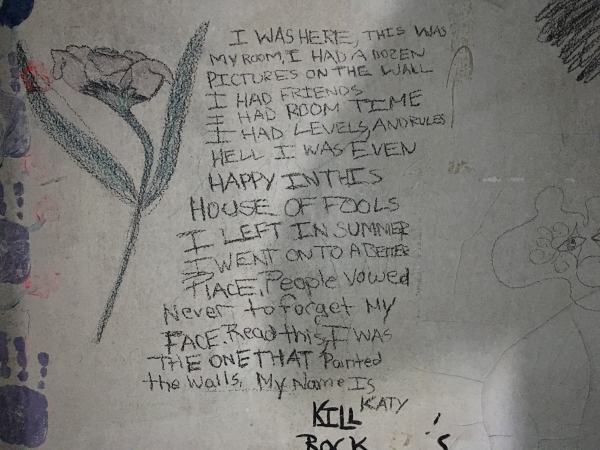
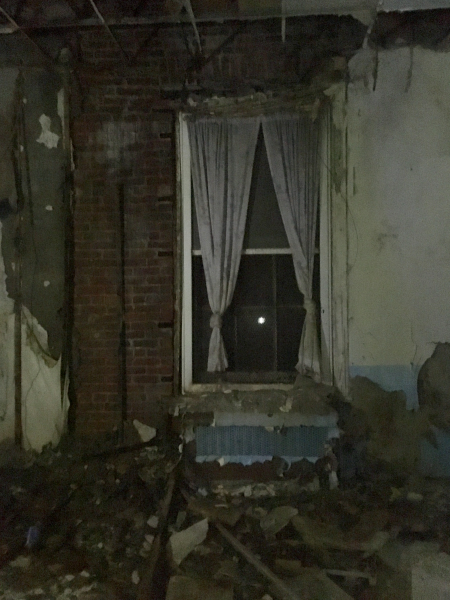
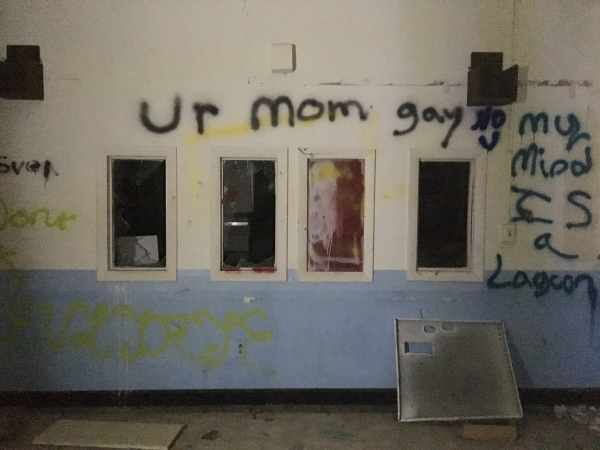
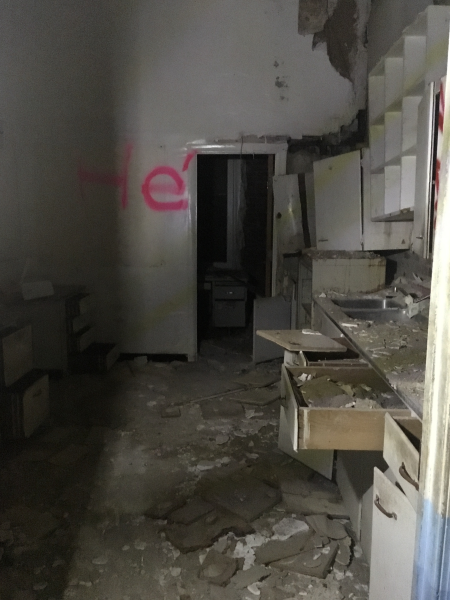
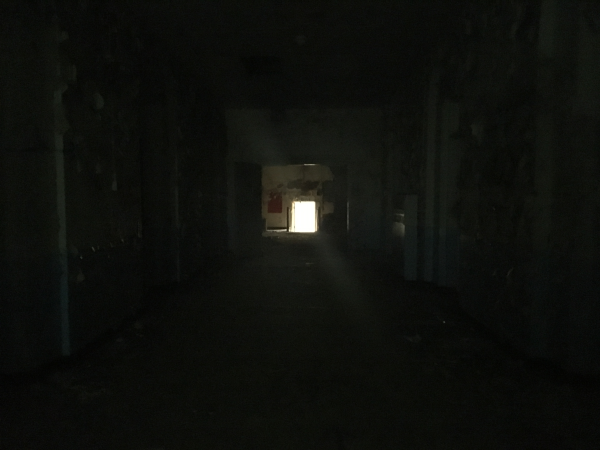
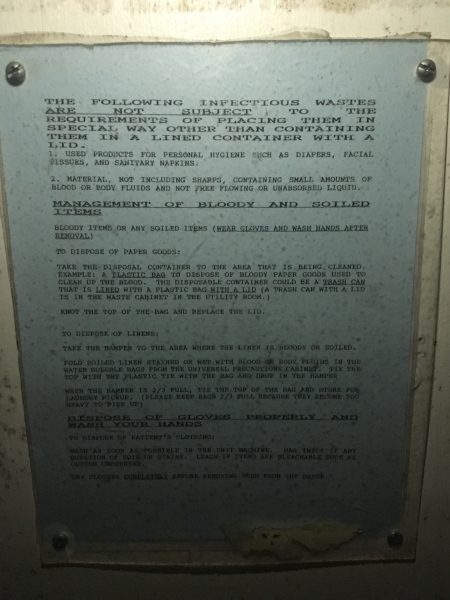
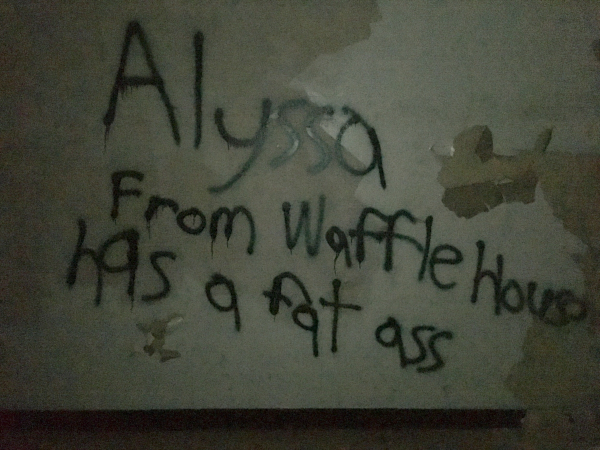
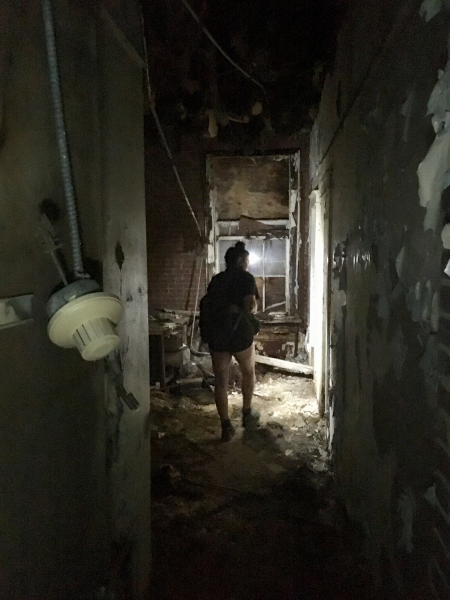
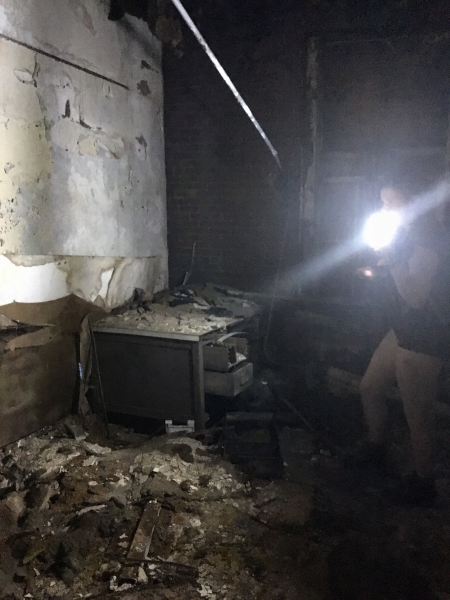
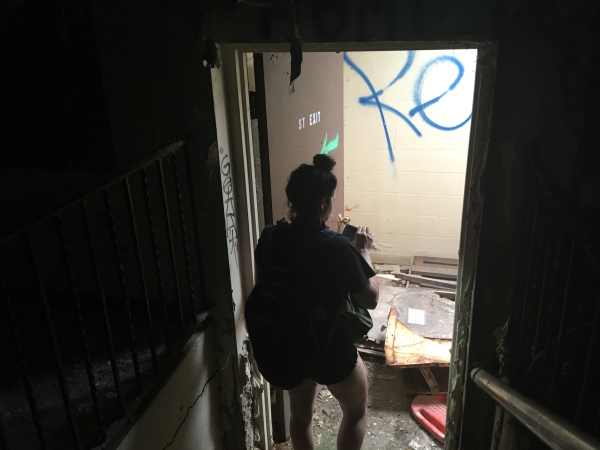

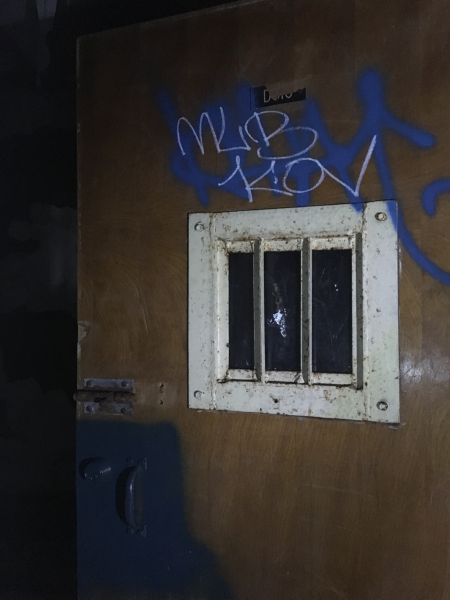
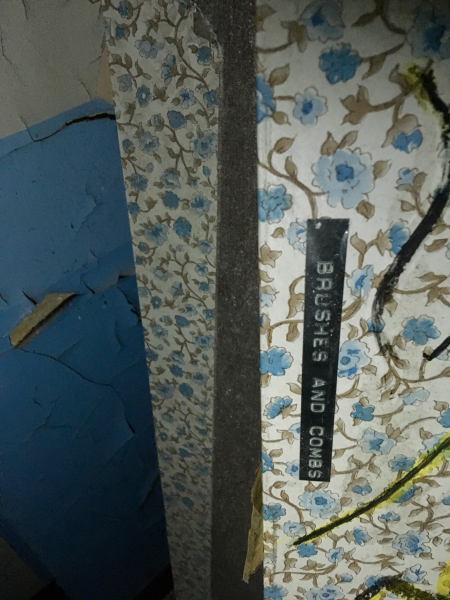
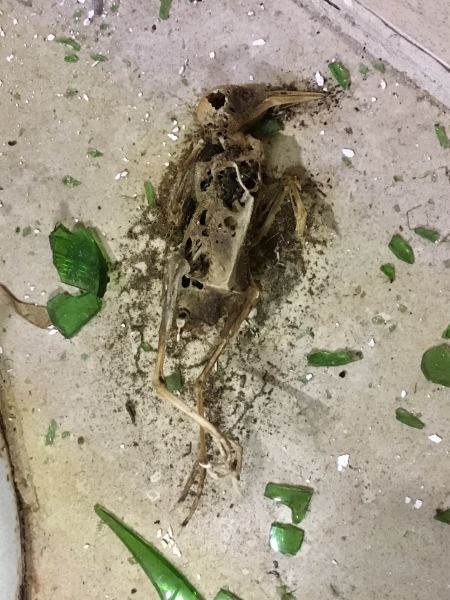
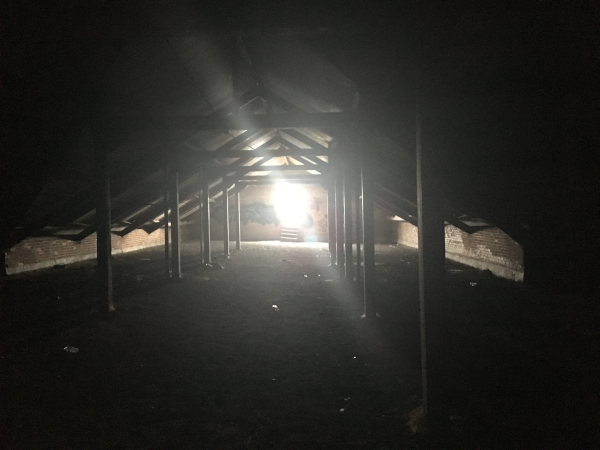
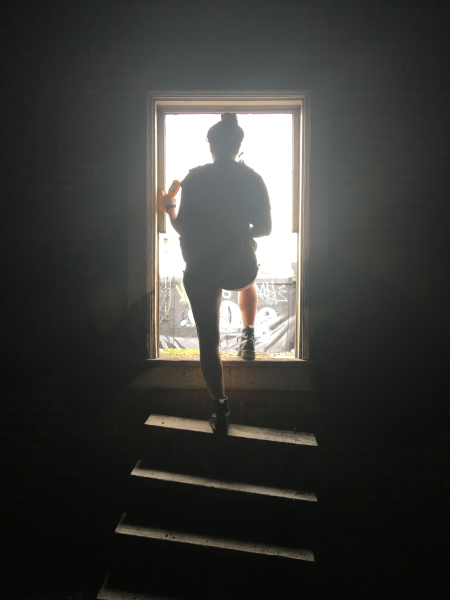
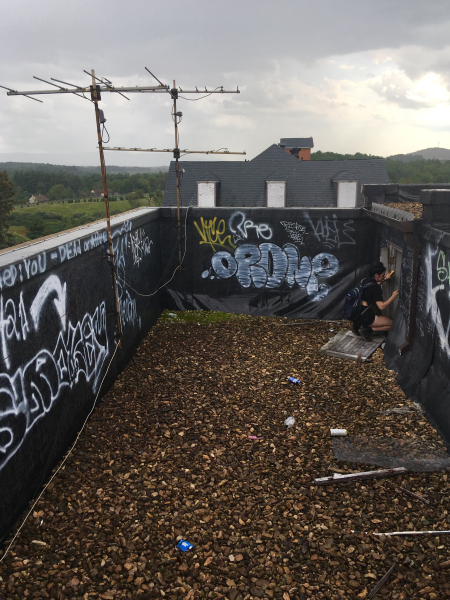
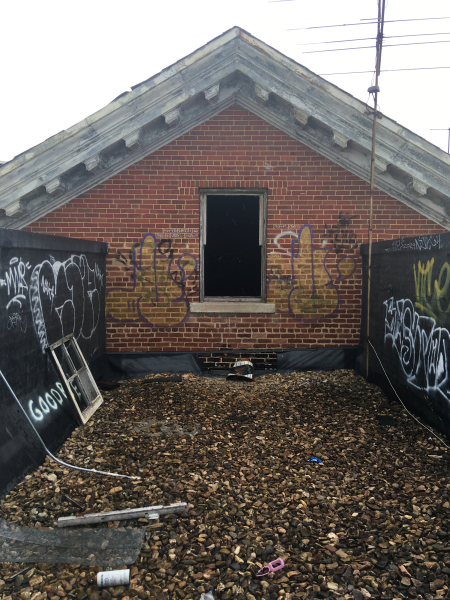
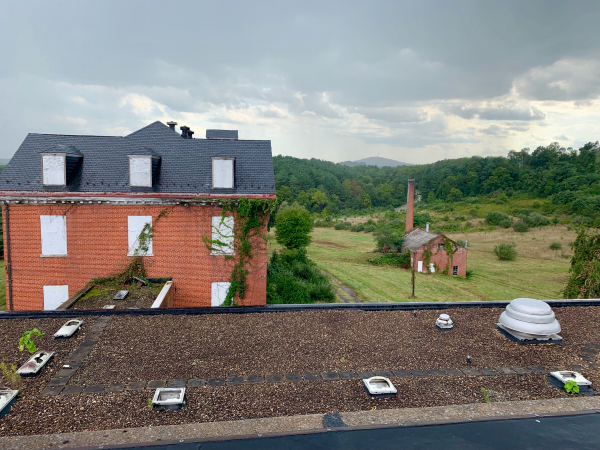
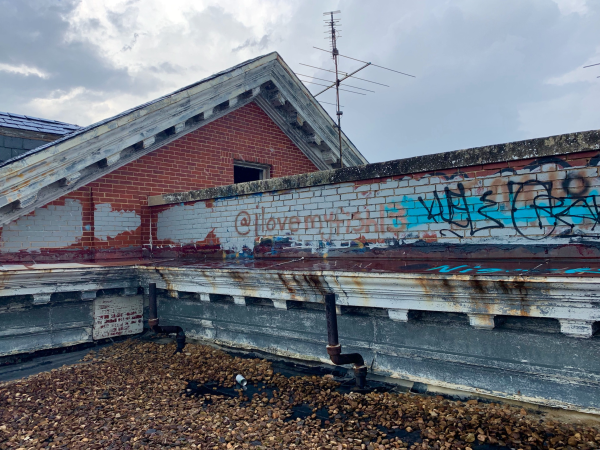
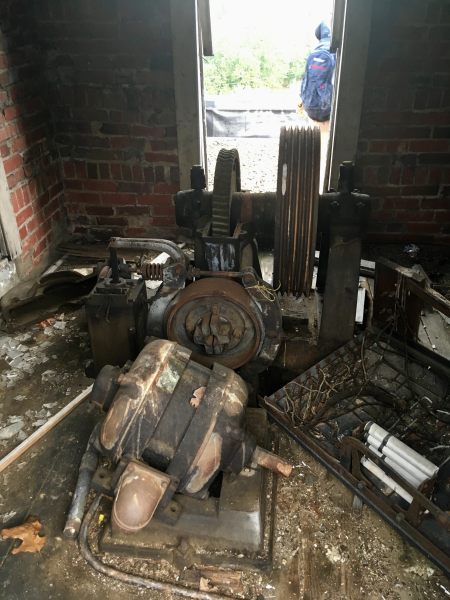
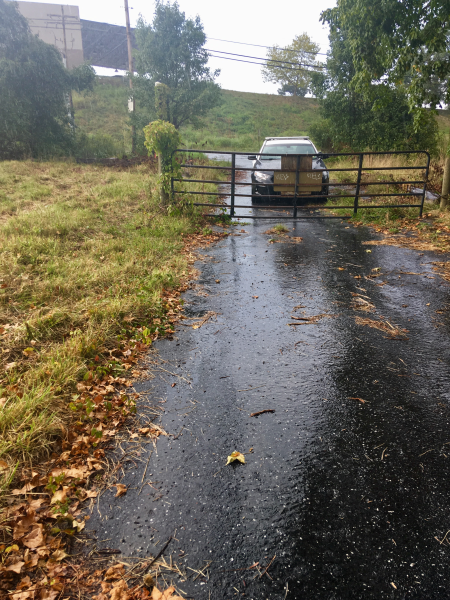
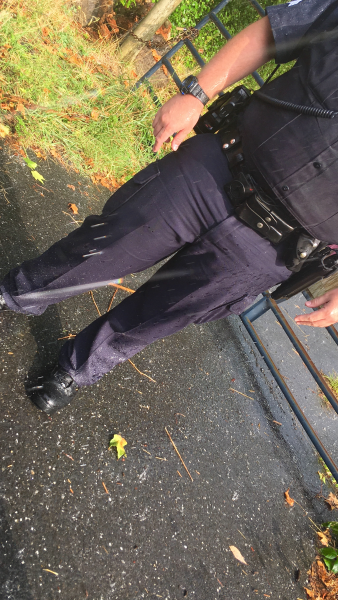
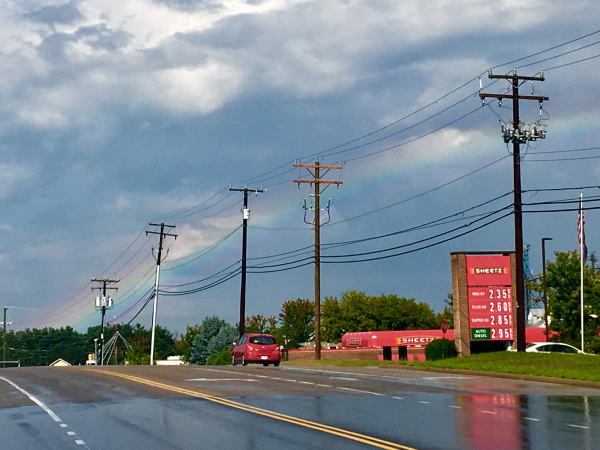
An exhaustive photo collection from the DeJarnette asylum!

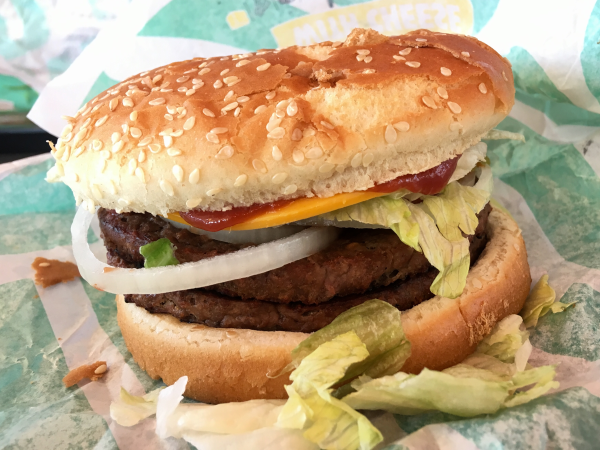
Only the best at Burger King.
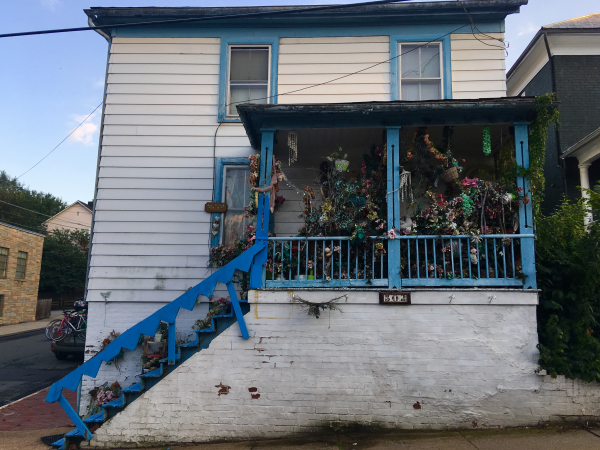
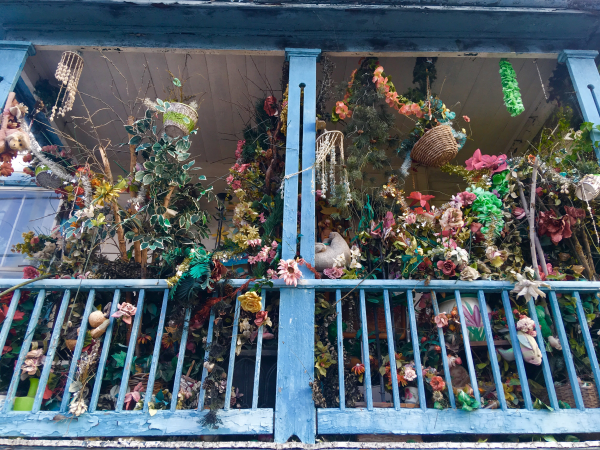
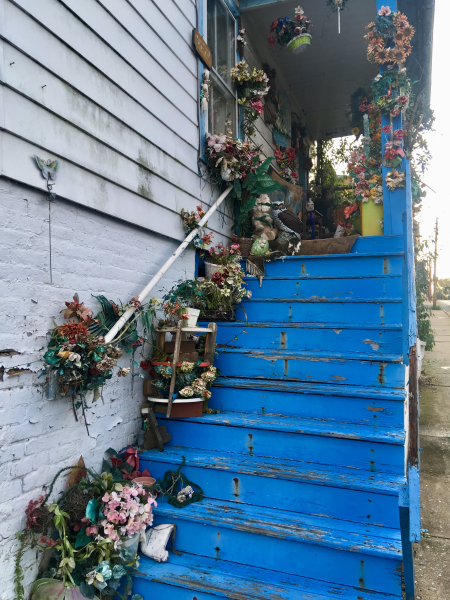
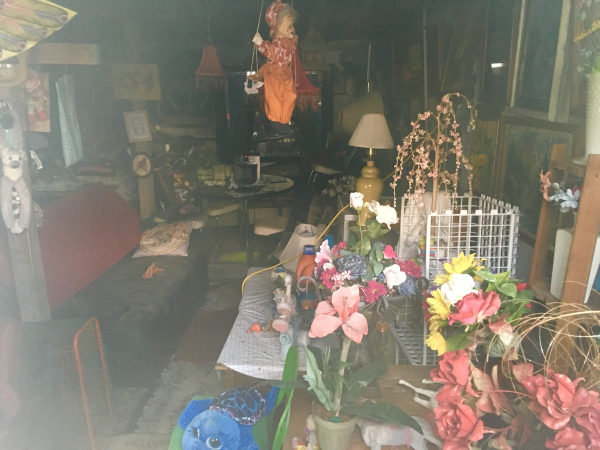
The Flower Lady's house.
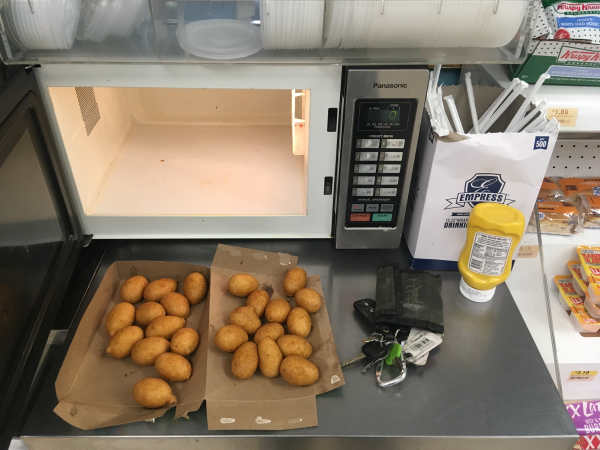
A late snack.
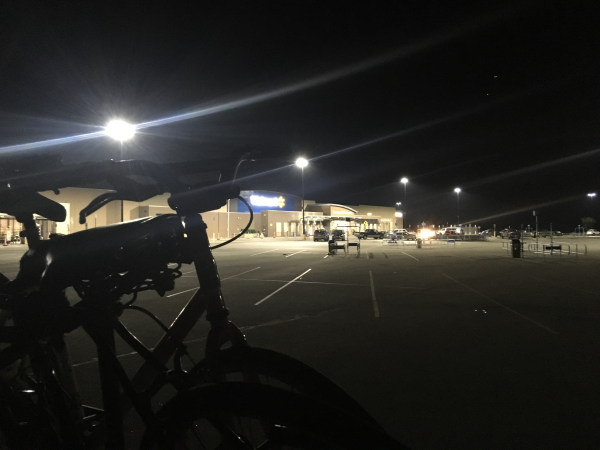
DAY EIGHTEEN
Tuesday, September 3rd
Driving into Charleston the next day, we were welcomed by one billboard for the Marines after another, sandwiched between churches and places selling cars or farming equipment. Charleston was one of the most boring places we'd ever looked into, so we spent the first half of our day there loitering at a place called the Capitol Market, an enclosed mall of sorts with local vendors, namely ones selling meat, fish, fancy chocolates, and wine. It was right across the street from where dozens of homeless people and drug addicts lay scattered around the sidewalks like dead bodies on a war field. We saw one woman casually walking around with a meth pipe in her mouth as casually as one would a cigarette, another shirtless and fishing through a pile of free clothes on the side of the City Mission. We sat around for a little while and then browsed the outdoor market with all the local produce. We ate really yummy peaches before leaving and heading to their business district, which wasn't much different.
One of the only odd and worthwhile things to see in Charleston was barely visible even to the few who knew it was there. Their name was Mortar Man, and they were either grumpily peeking out at the boring street beneath them or attempting to escape from their brick prison. They were hidden pretty well in a shady nook about 15 feet above the sidewalk, between two brick columns on the dull business block of Capitol Street. If you weren't already aware and actively looking for him, it was nearly impossible anyone would ever notice him at all. He was created by a local sculptor named P. Joseph Mullins who had been commissioned to sculpt other things for the city over the years. 30 years ago, he was on a job working on the building's facade, and while on a lunch break used some leftover cement to quickly craft this little guy and hide him up there. It was all for fun. In time, about three years later, some cop finally noticed him, and he slowly amassed a small local following. At one point, someone tried to steal him; at another, he was removed, only to be returned due to local outcry. Now he was the star of local food tours, where he stood out among incredibly forgettable architecture in an especially boring city. According to his creator, "Mortar Man represents every little man in the world."
Maybe it was because it was Labor Day, though we definitely still saw plenty of people at work, but the city felt deserted despite how developed it appeared. It was very clean, but likely because no one was even walking around. There were signs everywhere exclaiming rules and regulations at you, even obvious ones.
"Don't park on the sidewalk."
"Don't give money to the homeless."
"Don't bring glass into the park."
"Be conscious of other cars in the road while driving."
Like, what? We walked over to Haddad Riverfront Park, though the sun was so bright and hot that we almost immediately retreated. We sought shade underneath the pavilion along the Kanawha River. It was a beautiful park, but completely empty and hardly any less boring than anything else. I admired the water and Alyssa sat around on the steps, grateful for a break from the sun, which her and her sensitive, pale skin justifiably feared.
For dinner, we went to a Subway with shoplifted Tofurky deli meat and Daiya American cheese slices in tow to deck it out into something more than just a salad on bread. It would be cheaper and more sustainable than buying a whole loaf of bread and veggies that would inevitably go bad in the car before we could use them all up. Homeless people and shaky drug addicts were again everywhere we turned, limping around silently like zombies. One creepily paced outside the Subway and glared at us through the windows.
We still had some sun left and absolutely wanted to get the fuck out of Charleston, so we headed north to Point Pleasant, the famous home of the legendary Mothman cryptid. I showed Alyssa the statue dedicated to him and we looked into the windows of the shops down the block, all closed at that point but with Mothman something or other on display. We watched a short older woman yell at a man, as he quietly walked away while giving her a thumbs-up. Next thing we knew, she approached us and started talking as if we'd all already in the middle of a conversation together. She said a lot of things very fast in a deep Southern accent, sounding like the acoustic guitar picking of an old country song, about the whores and drug addicts in town. She suggested that all whores needed to die, in part because they were killing men by giving them hepatitis C--somehow without dying themselves from the disease. It was a very bizarre interaction.
We walked around the beautiful Point Pleasant Riverfront Park, sat and admired the Ohio River with its calm, sparkling waves, peered at the distant smokestacks emitting thick clouds of poison into the sky, and gazed at the awesome sunset. We walked along the incredibly detailed mural to colonization into Tu-Endie-Wei State Park, where we watched the sun finally disappear on the other side of the river, creating a silhouette out of the Silver Bridge that once collapsed and killed 46 people.
We drove across the river to Ohio, to a small place called Gallipolis so we could sleep at a Walmart Supercenter I remembered was there. While in the car watching Aliens on the laptop, we kept hearing and seeing cop cars blazing down the street. I later found out two convicts had escaped a transport vehicle.
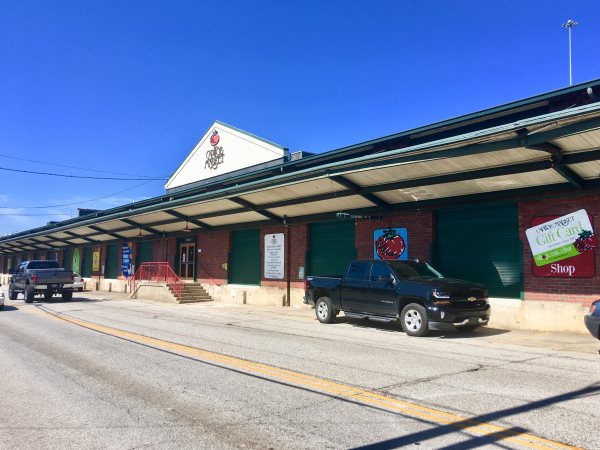
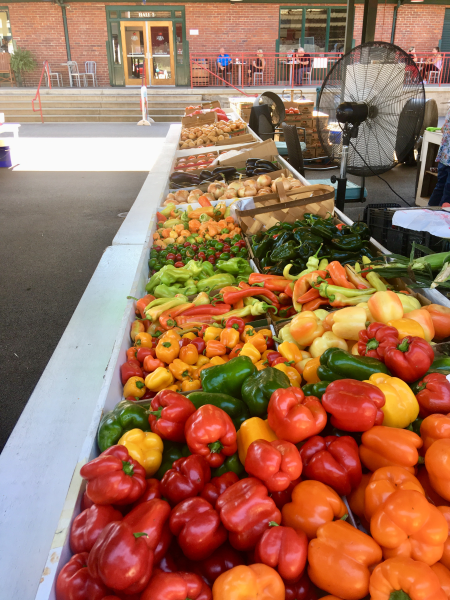

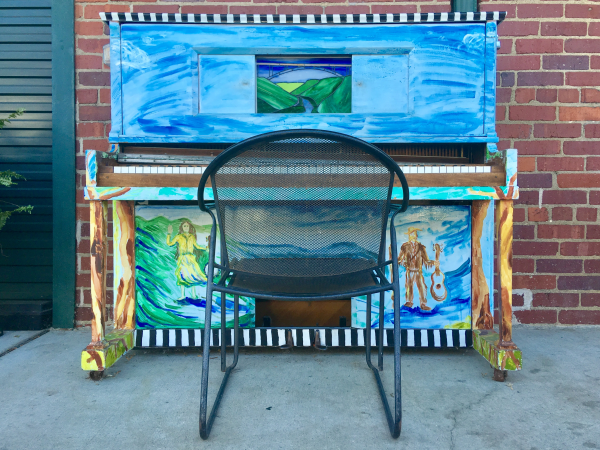
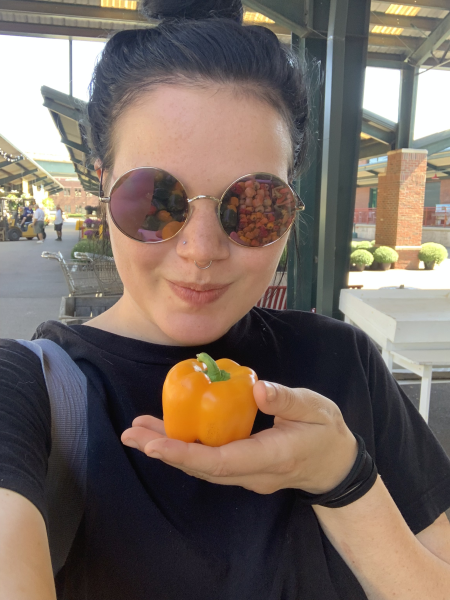
Capitol Market.
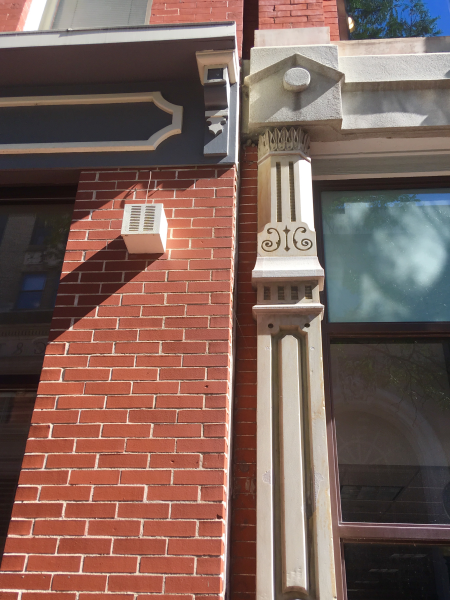

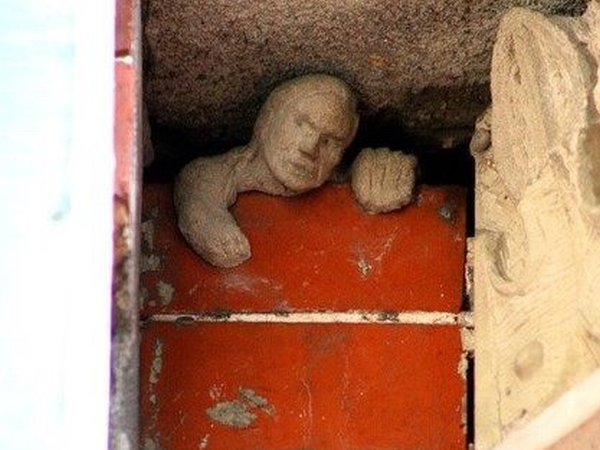
Mortar Man!
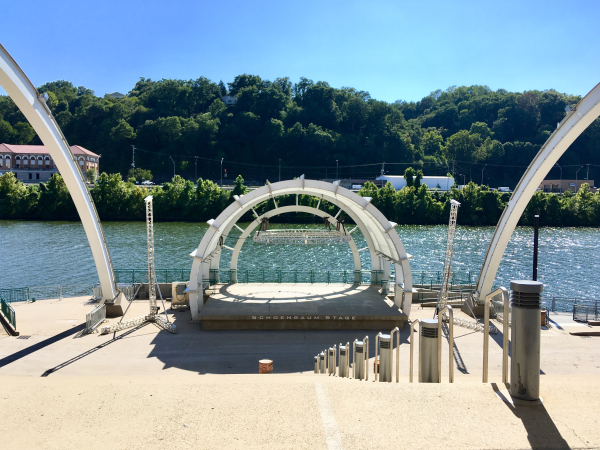
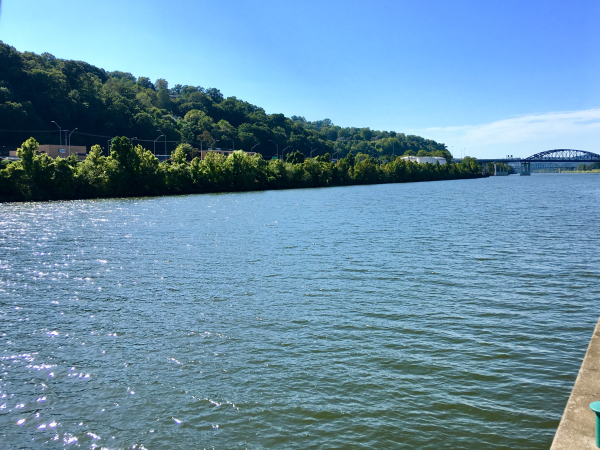
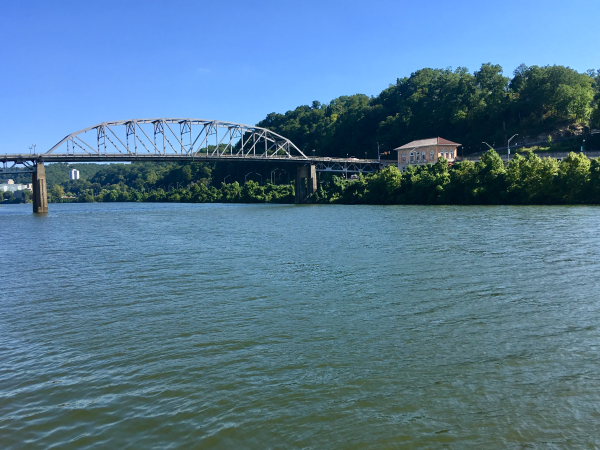
Haddad Riverfront Park.
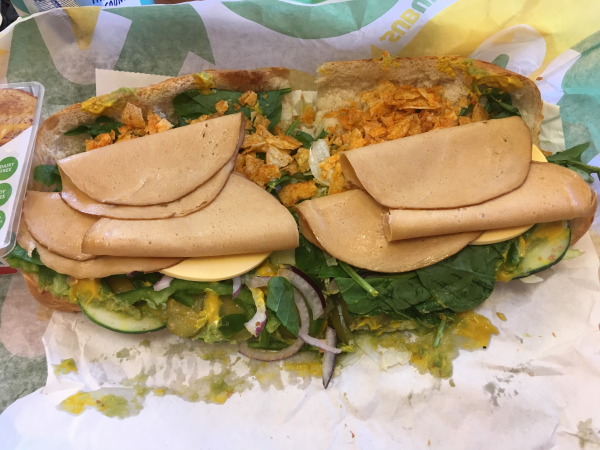
Another Subway dinner.
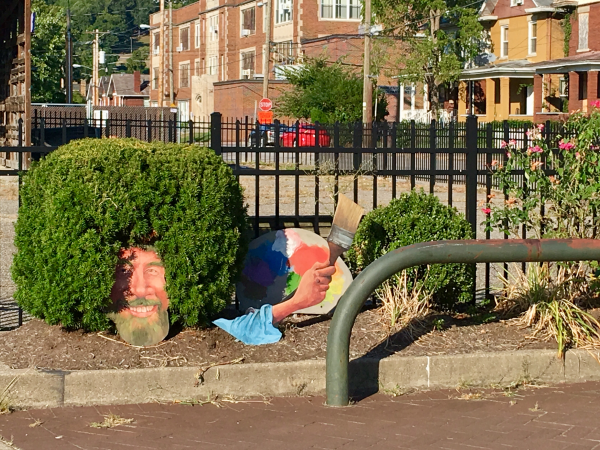
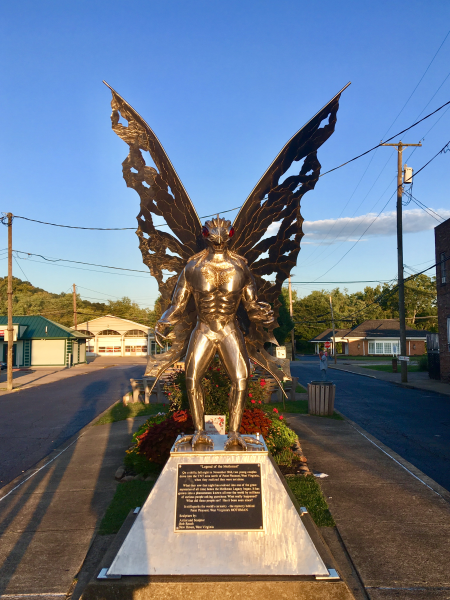
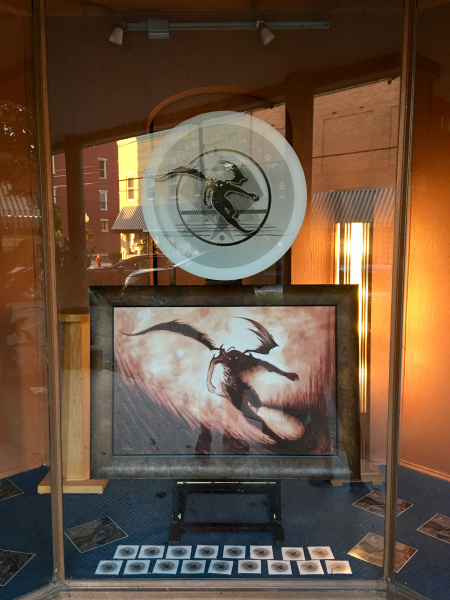
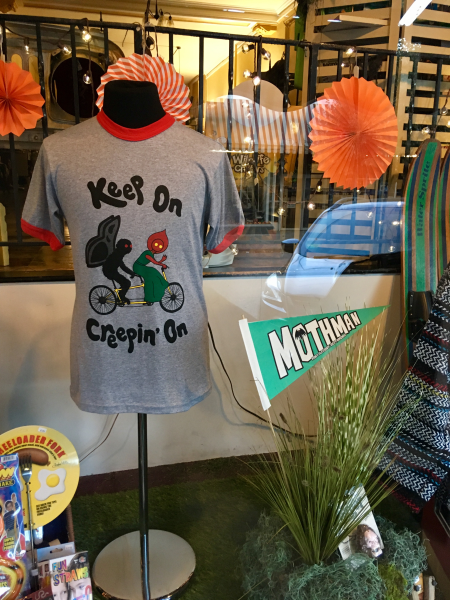
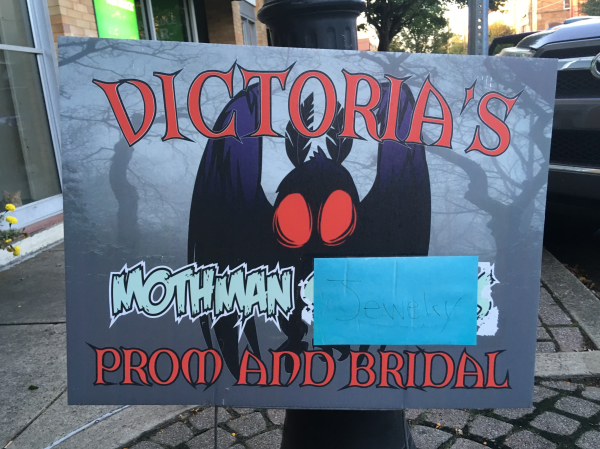
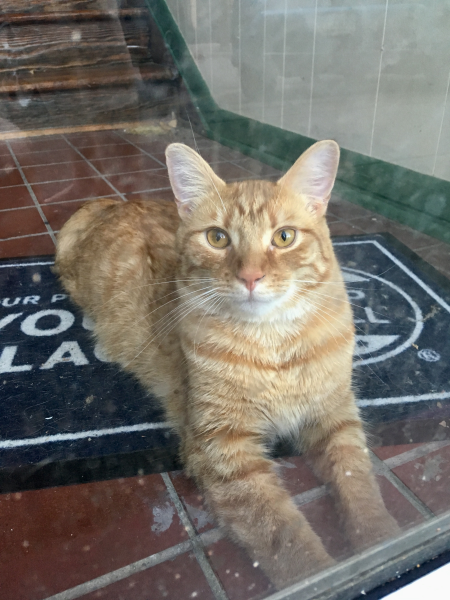
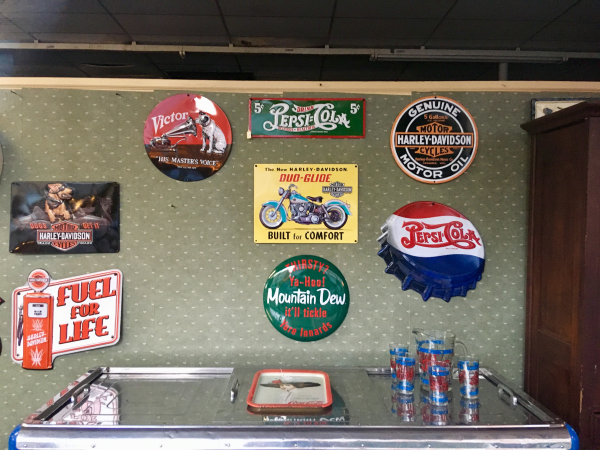
Welcome to Point Pleasant.
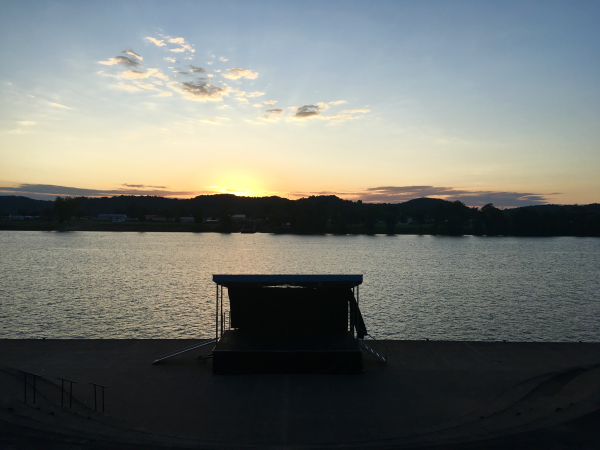
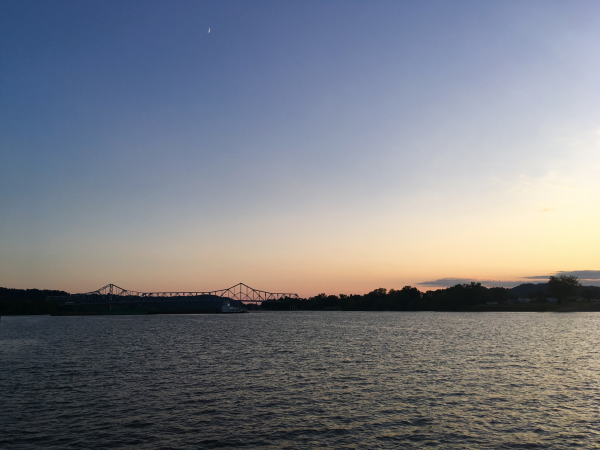
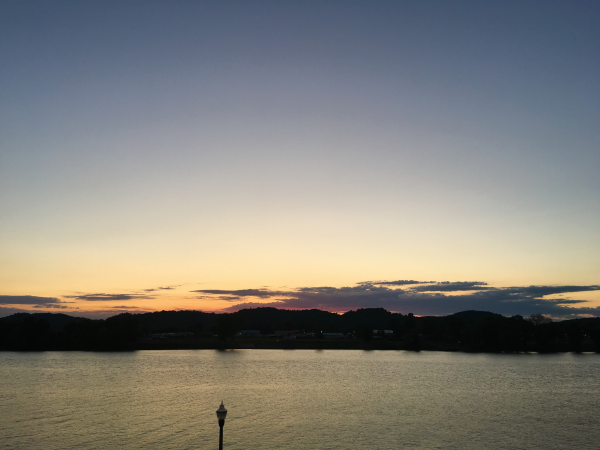
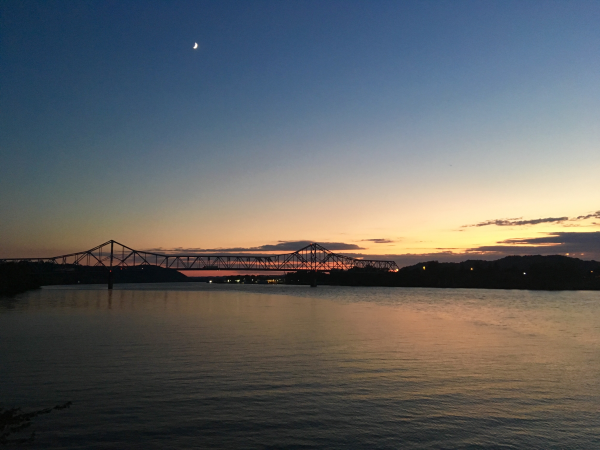
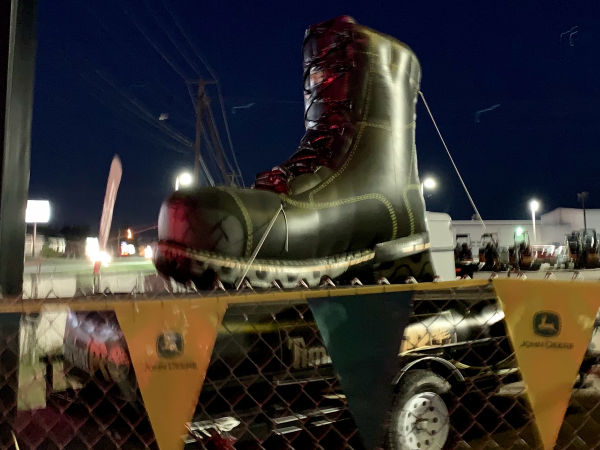
A big Timberland boot.
DAY NINETEEN
Wednesday, September 4th
We spent our day in Point Pleasant the way anyone would: browsing the world's only Mothman Museum and then exploring the abandoned TNT bunkers where he was first seen and which some say was his lair. For the uninitiated, Mothman was a very popular cryptid embraced by the cryptozoological and ufological communities that was introduced to the world in 1966 when two young couples rushed into a police station claiming they had encountered and were chased by a flying creature with bright red eyes while out by the abandoned TNT area. For a solid year, Mothman made headlines and, suddenly, many more sightings were allegedly made around that small area of West Virginia. These incidents ended with the collapse of the Silver Bridge, and many associated the disaster in one way or another with the Mothman. Mothman's popularity grew further in the '70s when conspiracy theorist John Keel started hanging around the area a lot and later released a book entitled The Mothman Prophecies, expanding on the legend of Mothman and intersecting it with UFOs and the Men In Black. This book would be (very) loosely adapted into a 2002 feature-length film of the same title starring Richard Gere.
Mothman was to present day a prominent cryptid on the level of Bigfoot, and had been celebrated by Point Pleasant with their annual Mothman Festival since 2002. The 12-foot-tall statue by artist Bob Roach was erected in 2003 and the museum was opened two years later. We browsed the museum and sat in a mock-up of the Mothman Diner that used to exist, where we watched a documentary playing on the wall. I bought a Mothman root beer brewed nearby in Ohio. The new Point Pleasant Trading Company shop across the street, which sold mostly cryptozoological merchandise and the usual Archie McPhee gag gifts, was owned by the same minds behind the museum. The abandoned TNT bunkers now sat open but still hidden behind shrubbery along a trail in the McClintic Wildlife Management Area, a preserved area of forest and swampland where people killed animals for fun under the guise of conservation. They were all now empty, but were once used to store dynamite and other munitions during World War II. Some still smelled like burning, but were mostly just full of graffiti and echoes.
We started heading back southward, but made a stop in an area called Scary, if for no other reason than to capture a picture of a sign. Neither of us could believe they weren't fully embracing their name, especially with Halloween coming up. No signs were anywhere, though, just one historical marker for the Battle of Scary Creek.
On a long stretch of road in rural LeSage, we'd found ourselves suddenly passing a giant hotdog, several structures completely covered in what appeared to be junk, and an entire van suspended on a pole. The first time I had driven by it, I didn't stop. This time, I did. It was a place called Hillbilly Hot Dogs. When we pulled in, the first thing I saw was the Hillbilly Weddin Chapel. Behind that was a derelict bus with an orange kitten underneath it, missing a tail and eating some cat food. Then there was a wall of hubcaps. We followed the junk, very craftily displayed and organized into a decorative chaos. There were plenty of signs with hilarious sayings and redneck jokes painted on them, and people had signed every square inch of nearly everything. We found another school bus, this one able to go into and sit, but a wasp chased me out of it pretty quickly. A few bikers had pulled in for food. If nothing else, the place was one of a kind and endlessly fascinating. This bizarre and self-aware hotdog stand opened almost two decades earlier as a modest 12x16 structure on the land the co-owner, Sonny, grew up on. He opened it with his wife, Sharie. He was a self-proclaimed West Virginian hillbilly and she was a Californian city girl. They'd renewed their vows over 30 times and were passionately, adorably in love, but just as much so about this little restaurant of theirs. They'd been on Diners, Drive-Ins, and Dives, and Guy Fieri considered them friends and their hotdog stand one of his favorite places.
We were obviously genuinely shocked when we saw they had a veggie section labeled "Rabbit Fixins", and absolutely had to try their vegan options, which also included deep-fried cauliflower, and nuggets according to another sign inside. The tiny girl who took our order had the most charming accent and was more than happy to confirm what was vegan for us. We got the "Portabello Dog", which was sliced and grilled mushrooms and French fries, and the "Lockwood Veggie Dog", a deep-fried vegan weenie with all the fixings. Both were fucking awesome--genuinely great vegan food in one of the least likely of places. Between these hotdogs in LeSage, and the vegan burgers we ate in DuBois, we were both pretty confident veganism was no longer a fringe concept in America. The two women working sang a song when we tipped them.
Our first stop in Huntington, a city somehow even more dull than Charleston, was Frostop, a vintage drive-in with a big root beer on top of it. At first, I just wanted a shot of the giant root beer mug, but once I realized this place kept it so old-school that waiters walked up to your car window to take your order, I had to indulge in the novel experience. I only ordered a frosty mug of their root beer, which indeed showed up in a big, frosty mug. They brewed it on premises in big vats the same way they had since the '50s when Frostop was a relatively successful chain. It was one of the best root beers I'd come across.
We tried desperately to find something to do in Huntington, but there was nothing. We asked a dude working at a Walgreen's and all he had to suggest was a park, a theater (specifically a "really pretty the-a-ter"), their downtown, and chicken wings. You know your city sucks when you bring up its chicken wings, because everywhere has chicken wings and they all taste the same. We appreciated him, though, because he literally ended several sentences with a casual but hearty "y'all". We went to the park, but left shortly after because of too many mosquitoes. It had a sick playground, but we were adults. For dinner, went to a place where it might have been considered their downtown called Black Sheep, which was a brewery and burrito place that specialized in unique cross-cuisine burritos. I got the General Tso burrito, which when veganized contained golden fried tofu glazed with house-made General Tso sauce, seasoned rice, puréed edamame, in-house pickle, and fried wontons with a side of cold Korean noodle salad. It tasted like Chinese food in a burrito, and was perfect. We hung out there for as long as we could before relocating to a nearby Starbucks to sit around some more.
That night, we drove to a town in Kentucky with the suggestive name Morehead to sleep at a Walmart. We'd started listening to a podcast called True Crime All The Time, which was fun. The night air was nice and cool for a change and really helped me sleep better than ever.
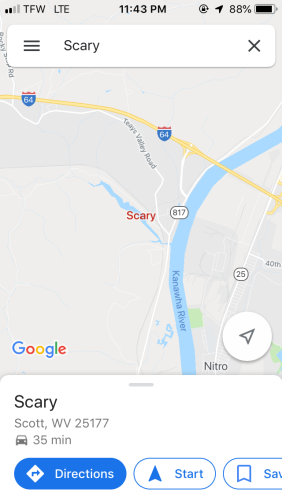
It exists on Google Maps, at least.
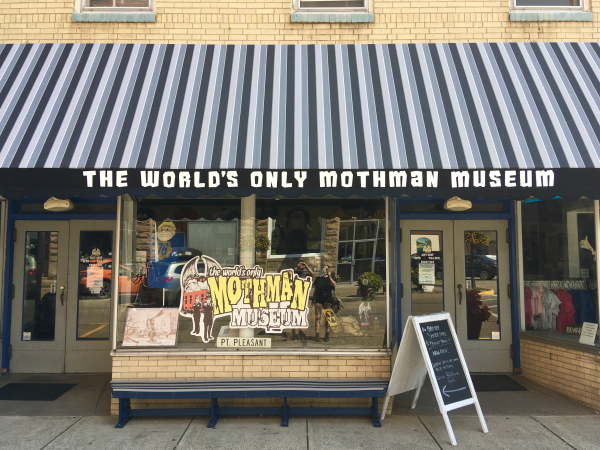
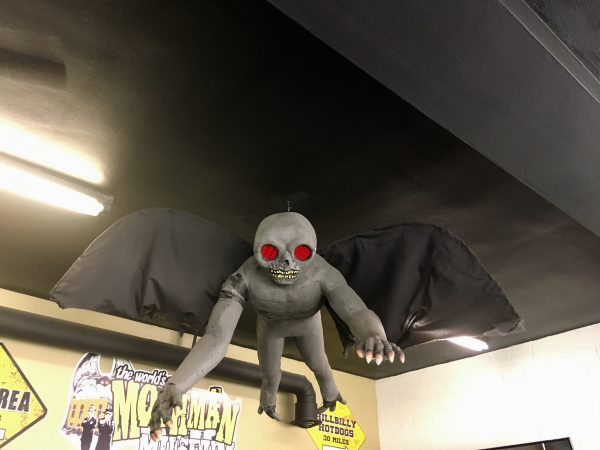
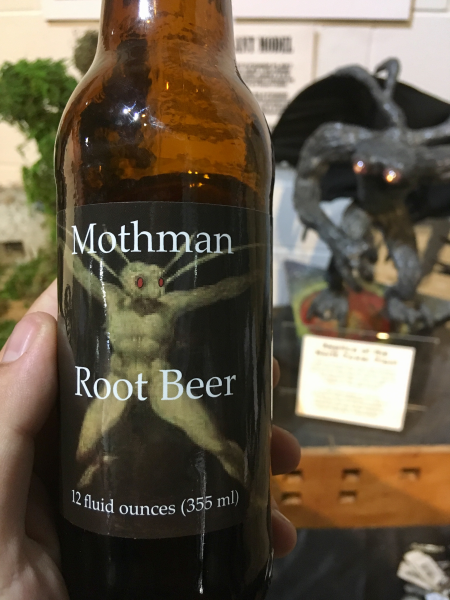

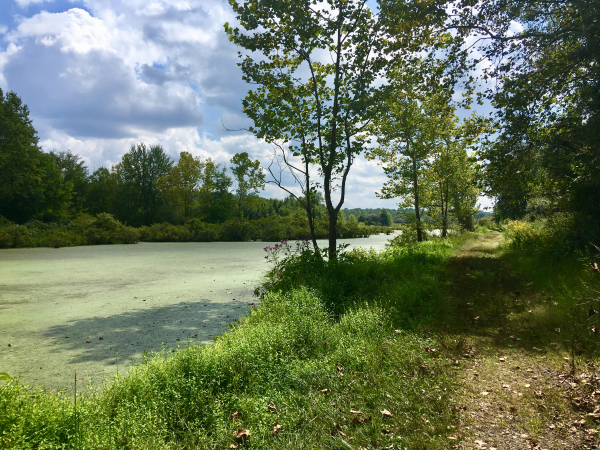
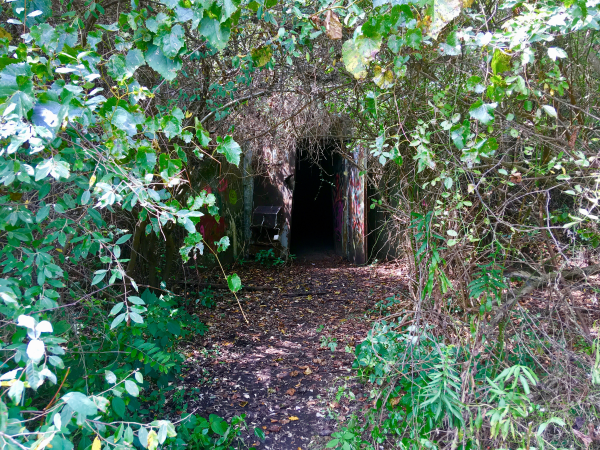

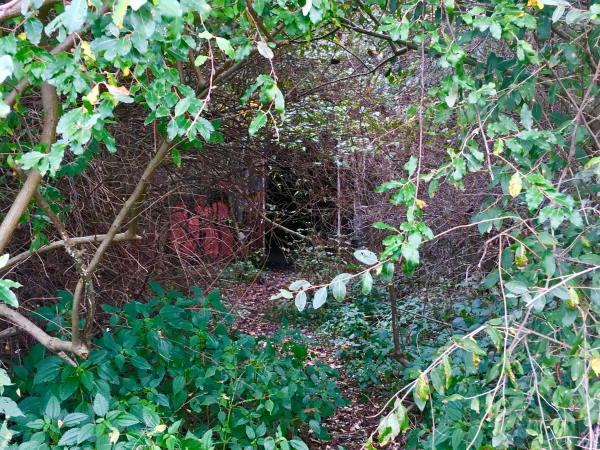
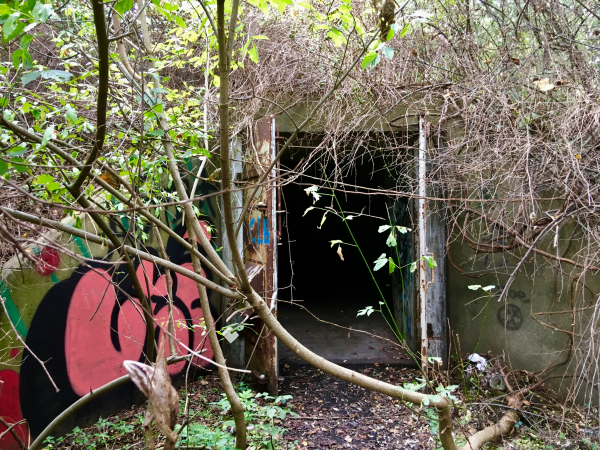
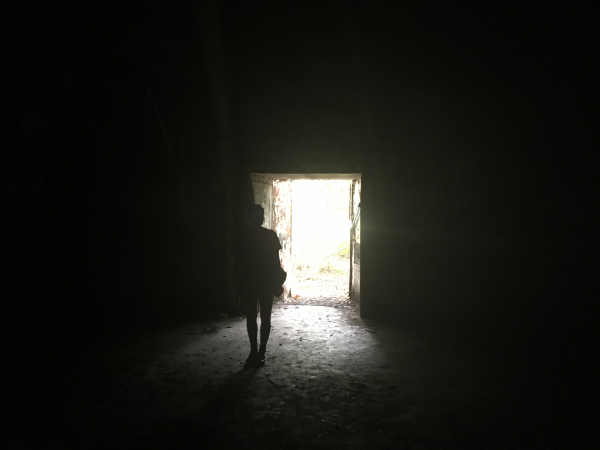
Our Mothman tour.
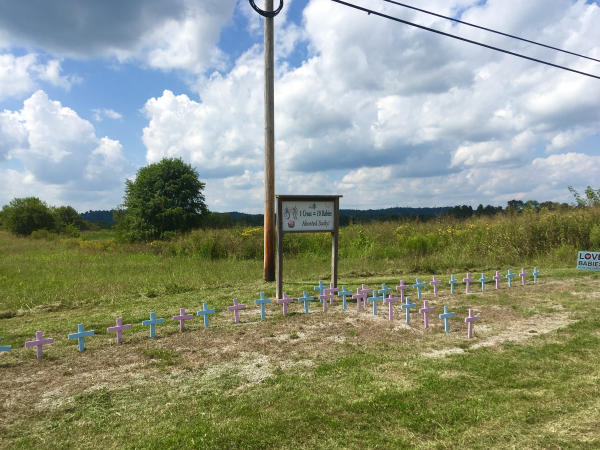
Creepy roadside anti-abortion nonsense.
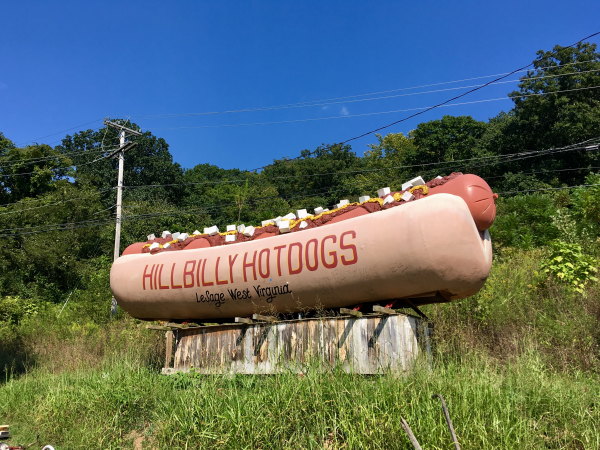
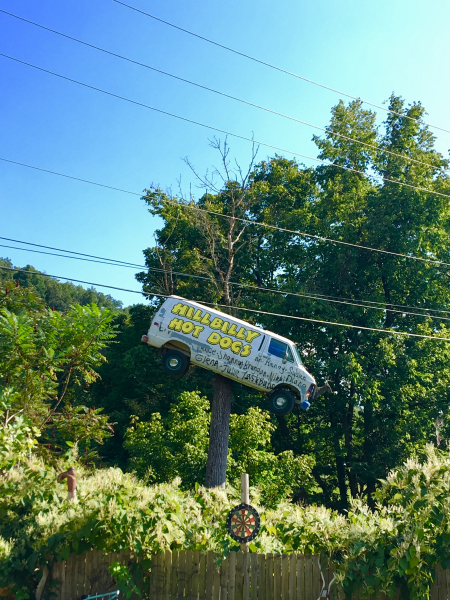
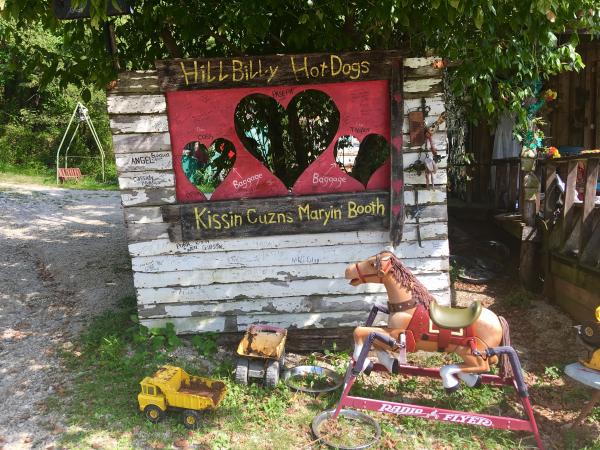
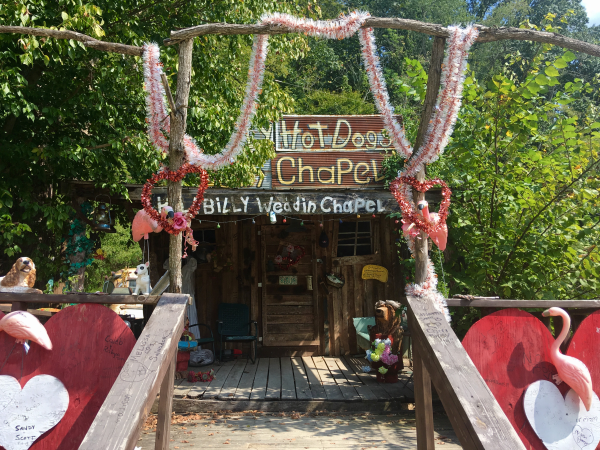
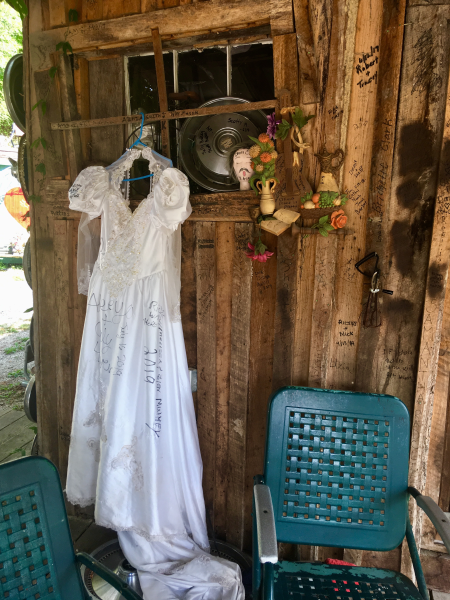
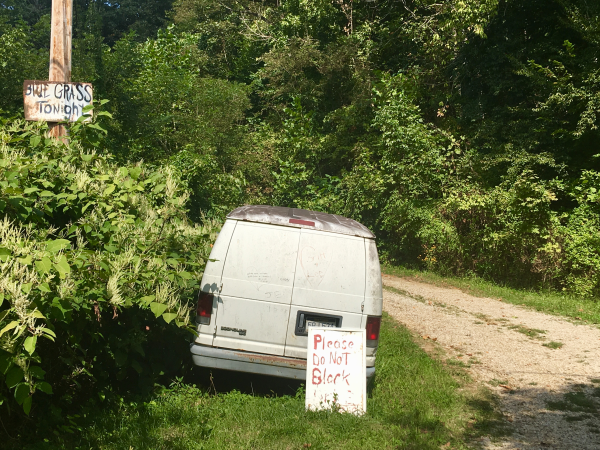
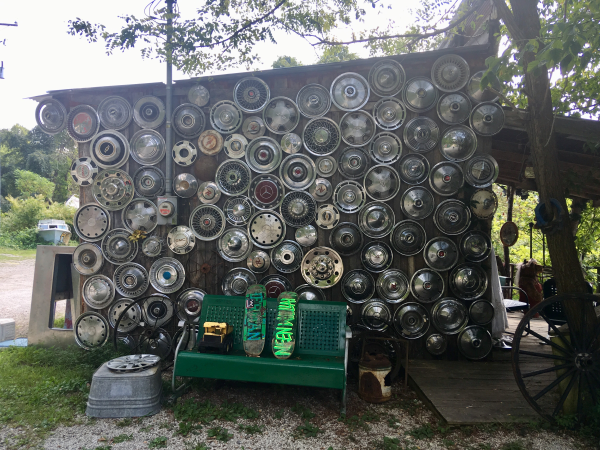
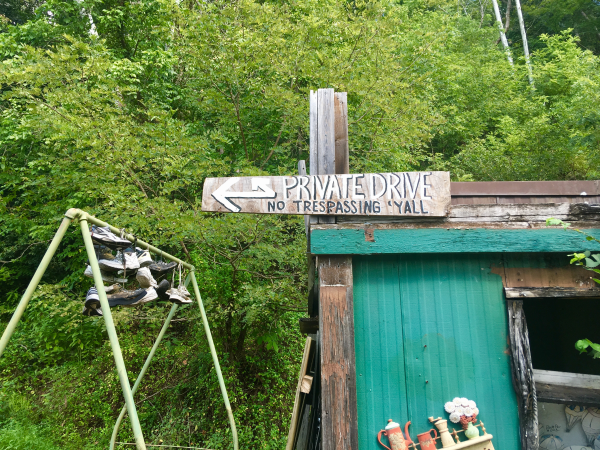
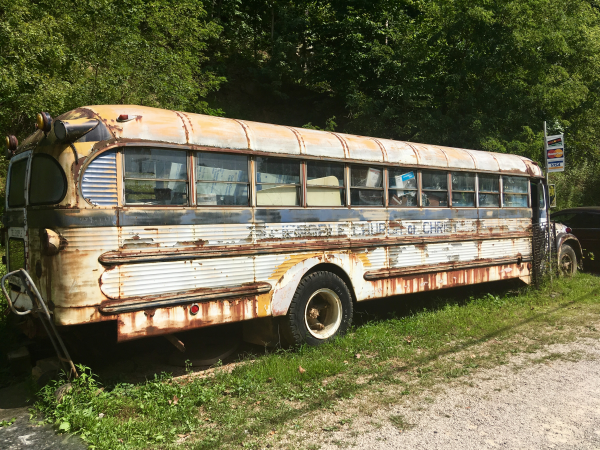
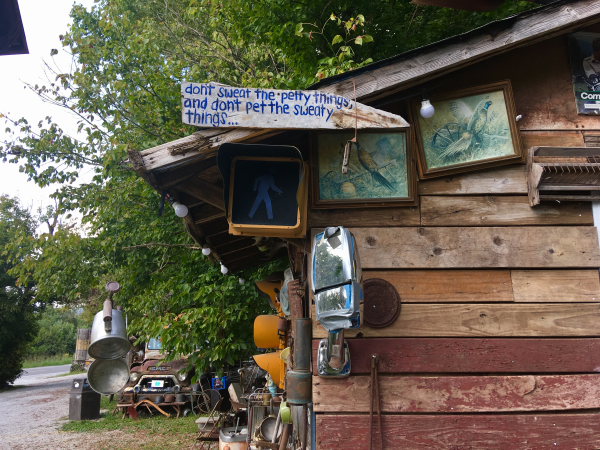
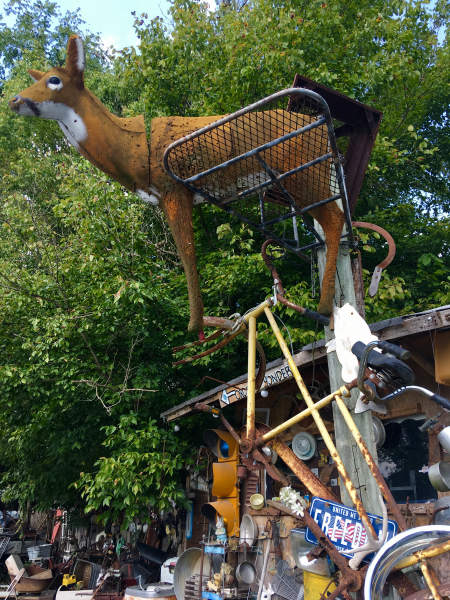

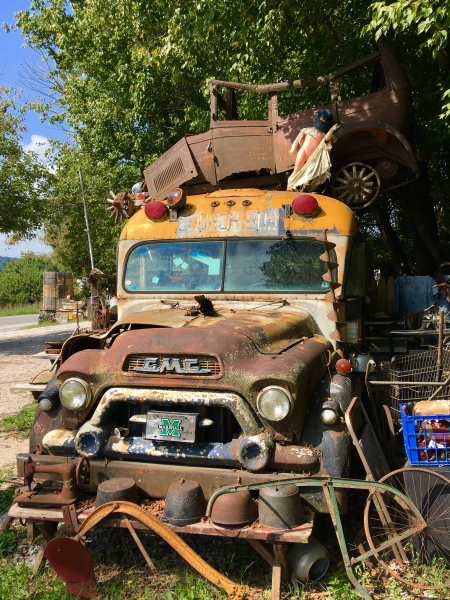
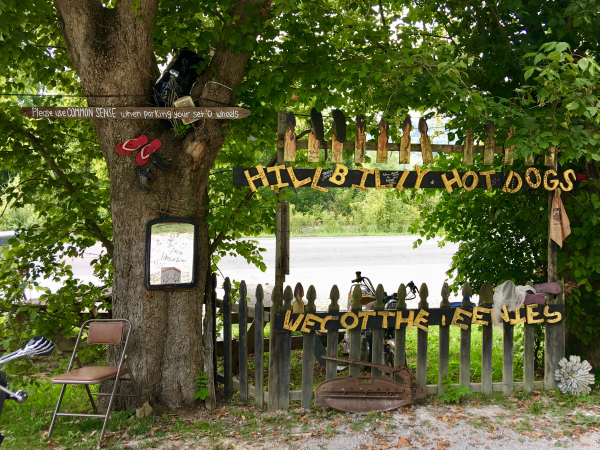
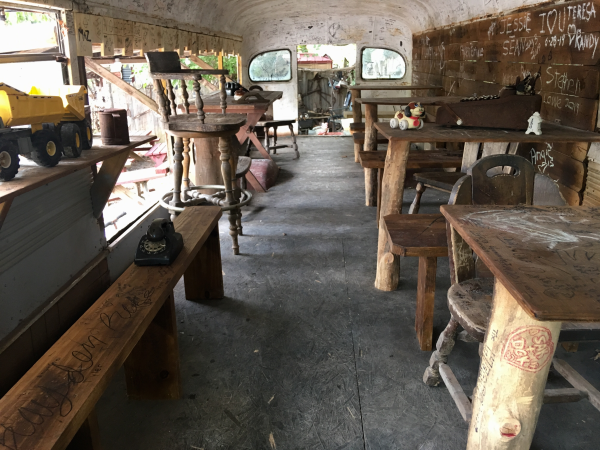
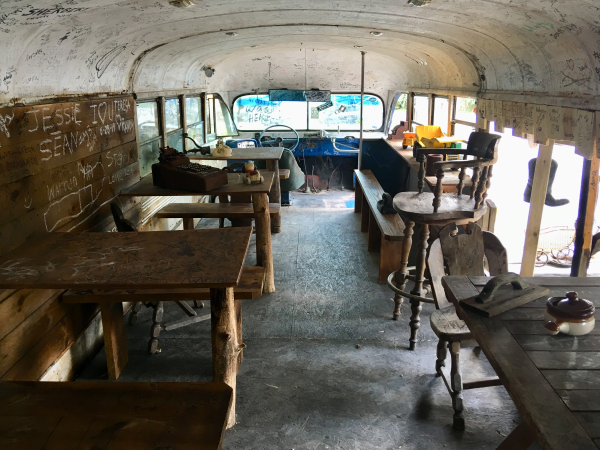
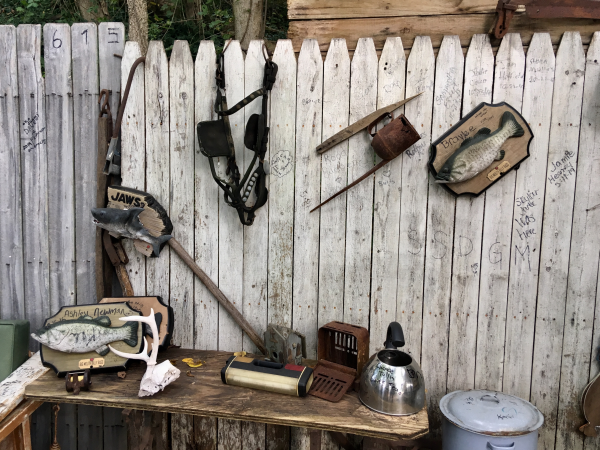
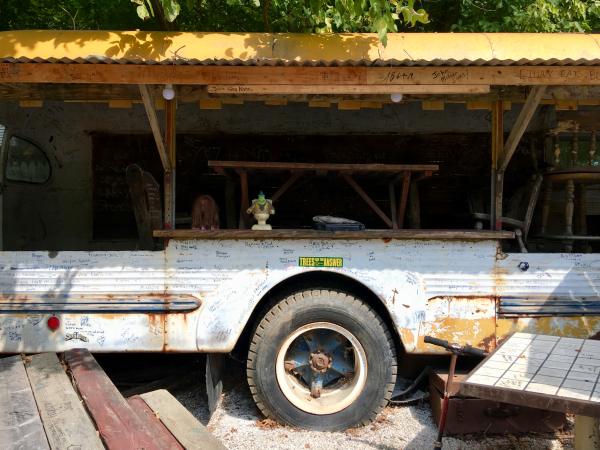
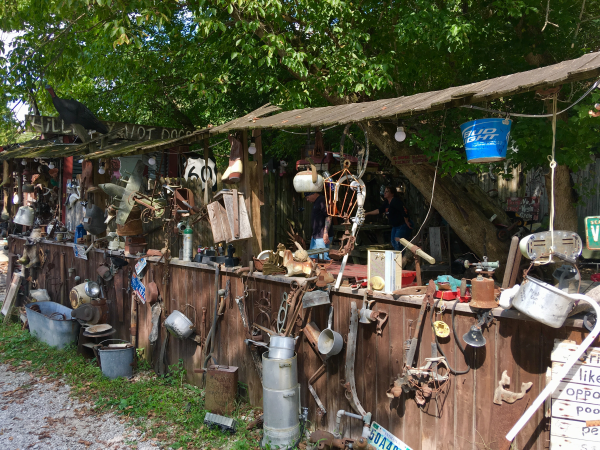
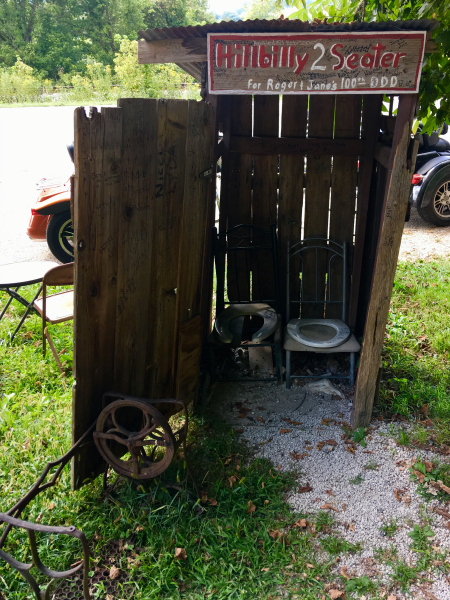
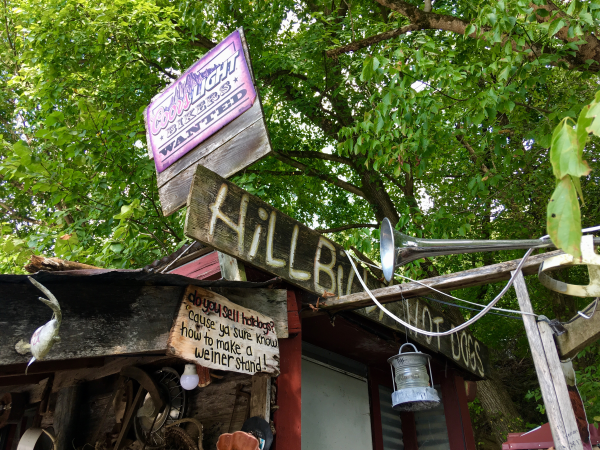
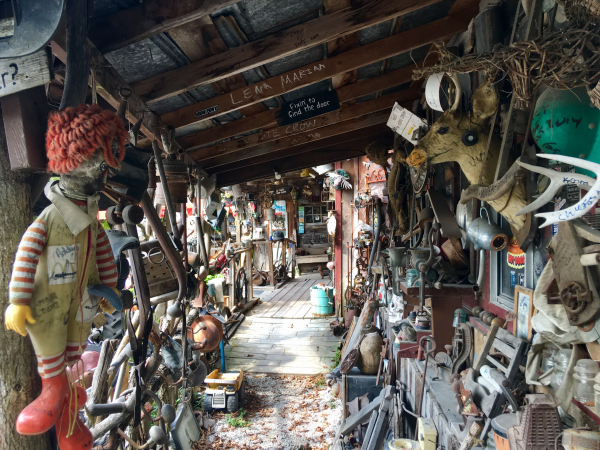
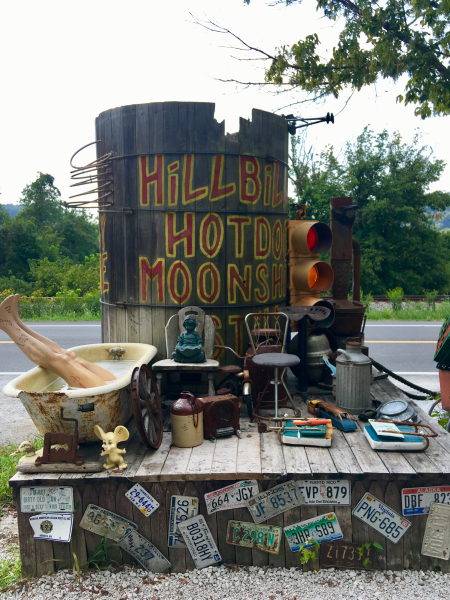
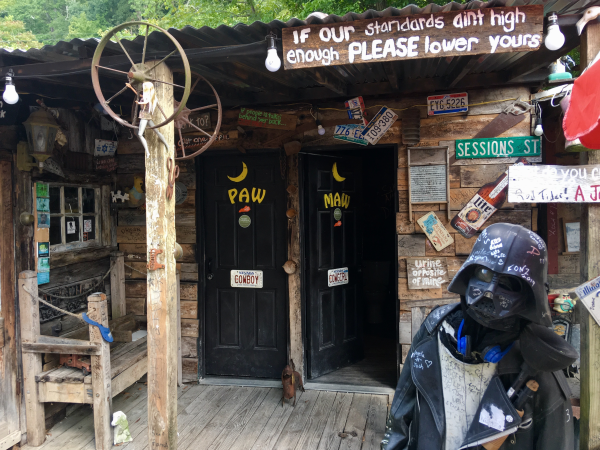
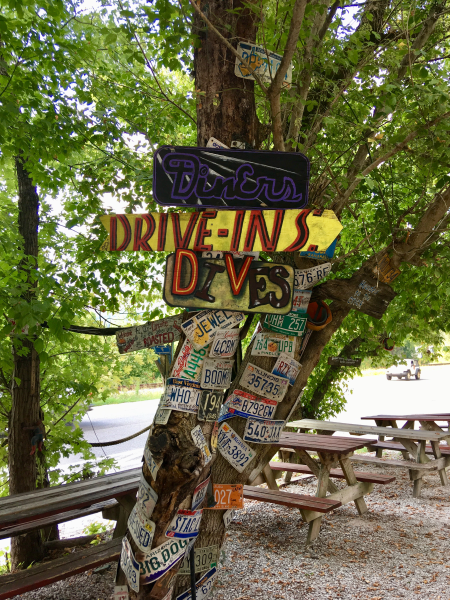
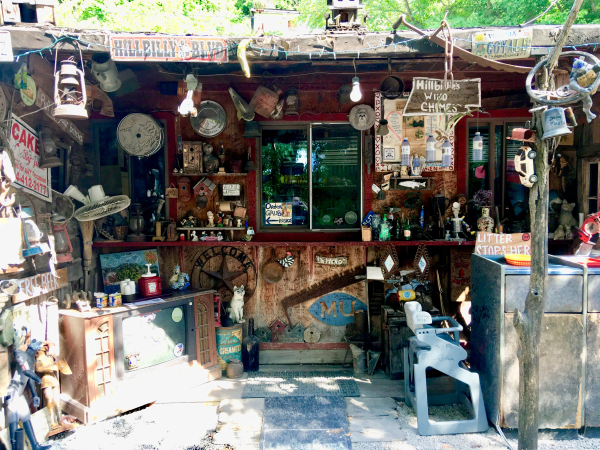
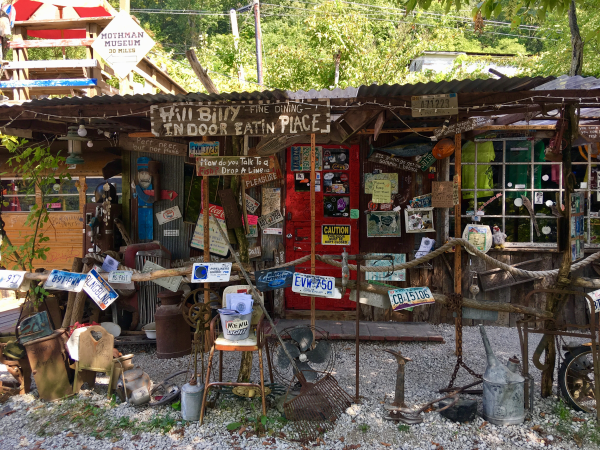
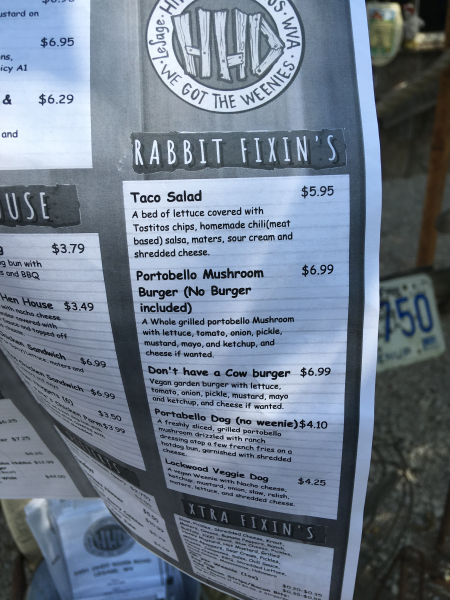
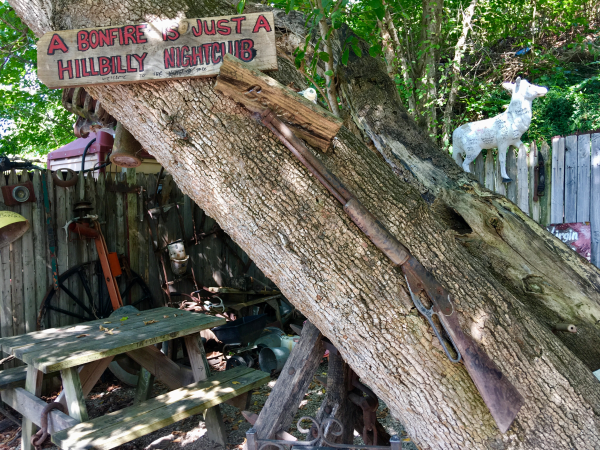
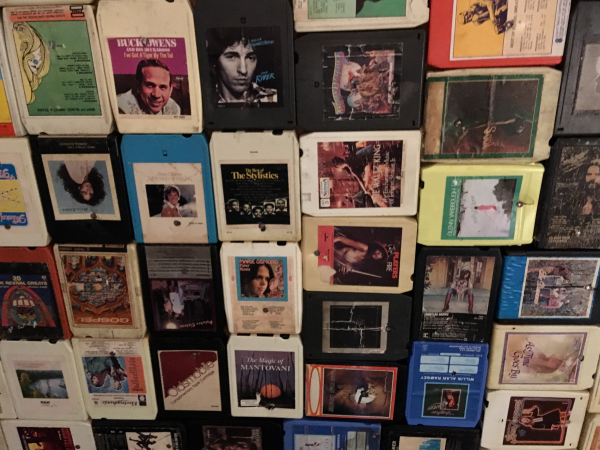
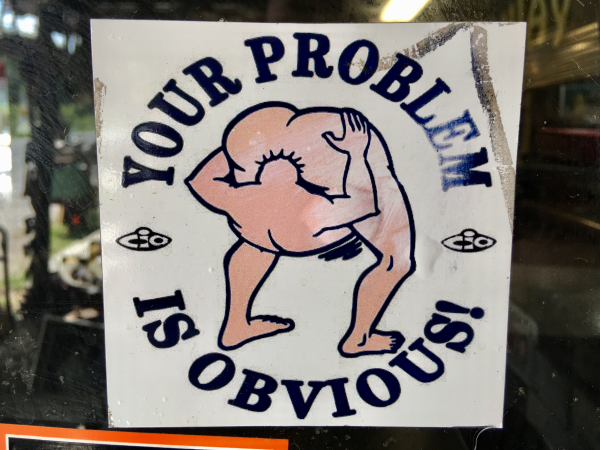
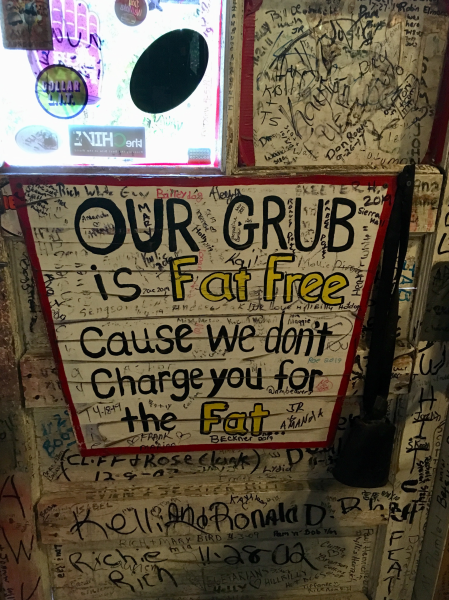

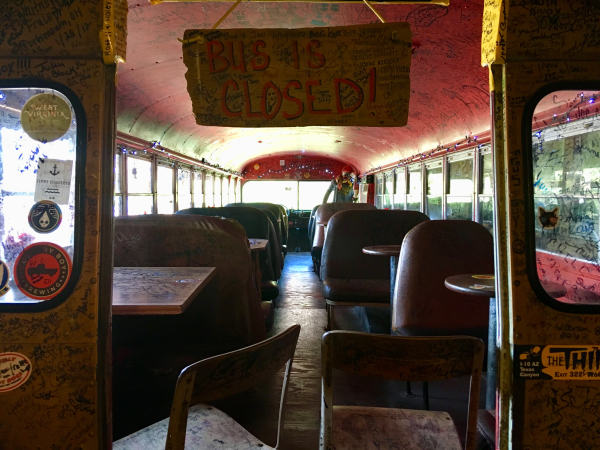
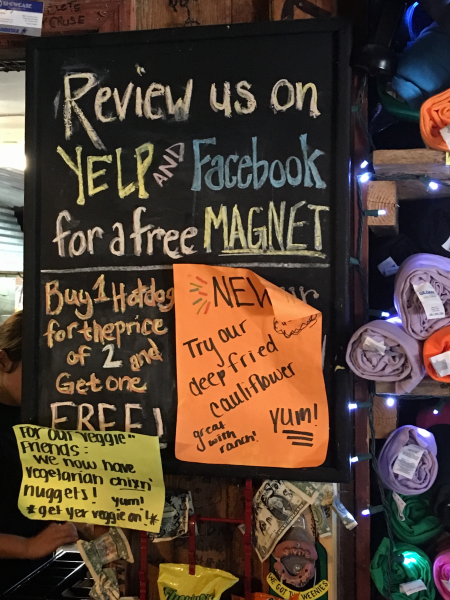

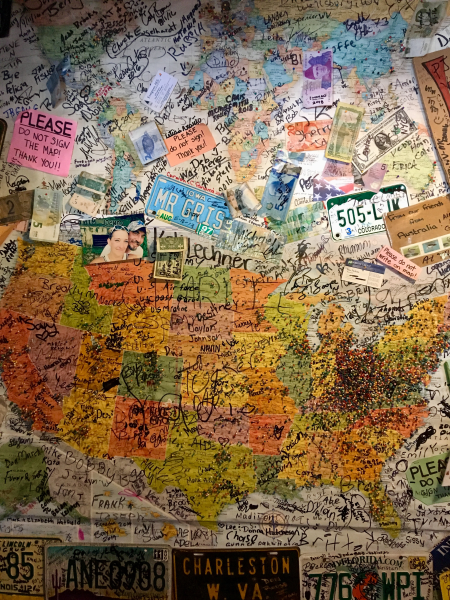
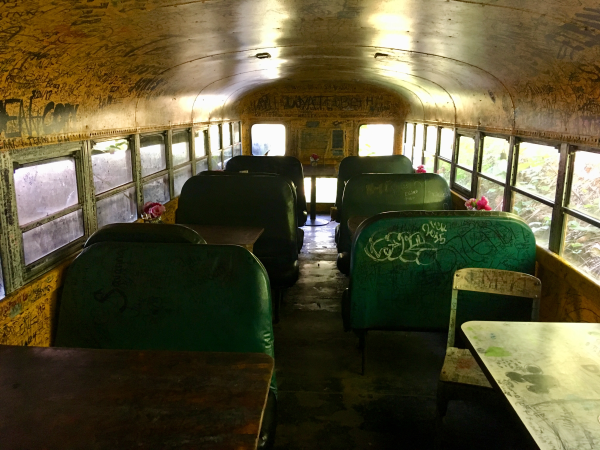
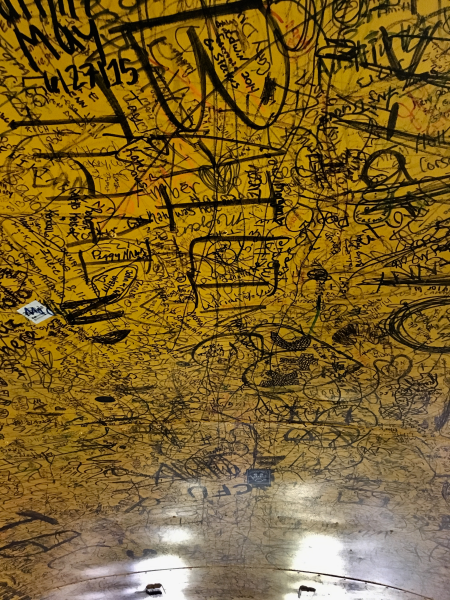
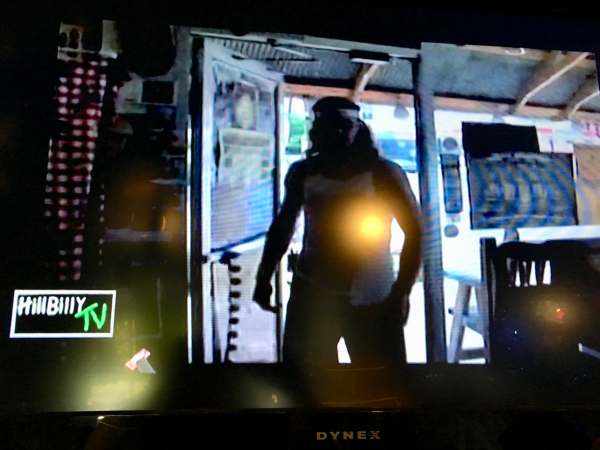
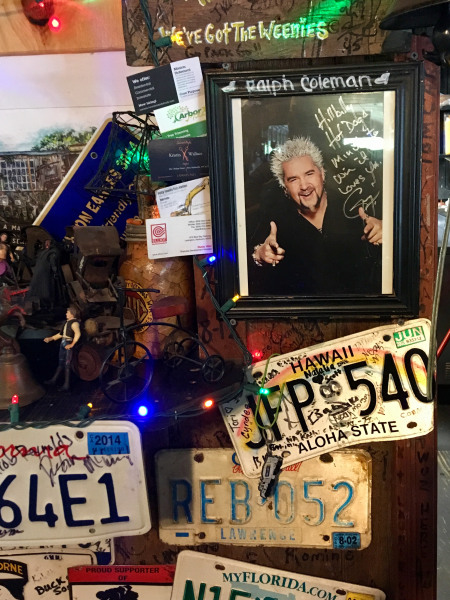
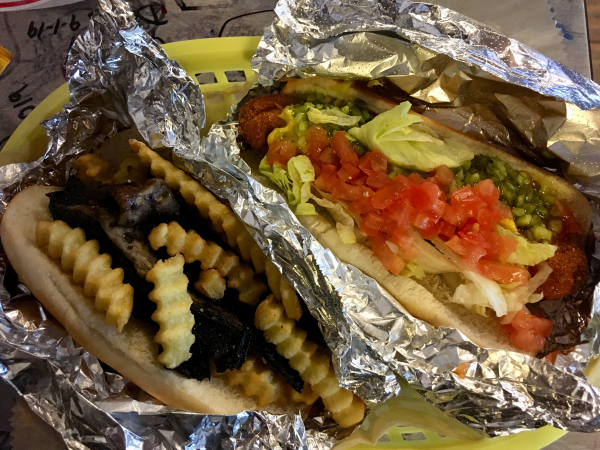
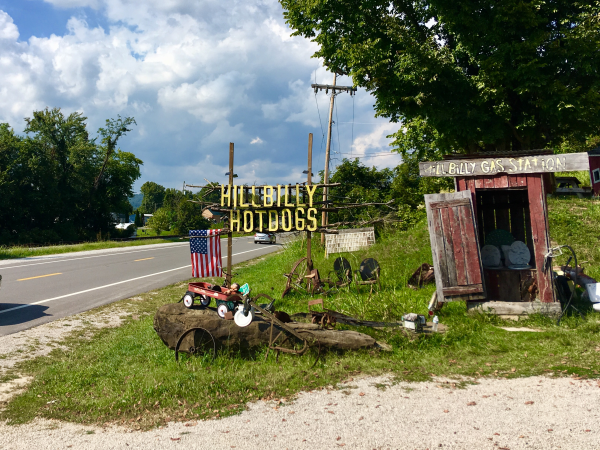
Hillbilly Hotdogs!
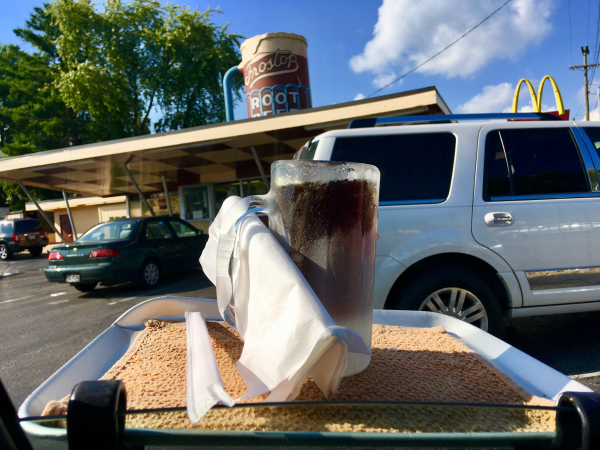
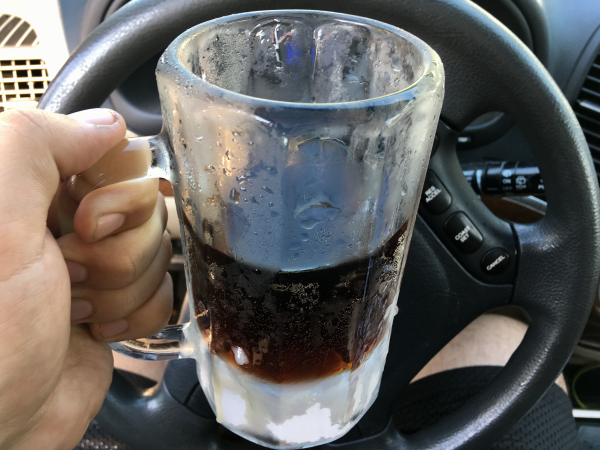
A frosty one from Frostop.
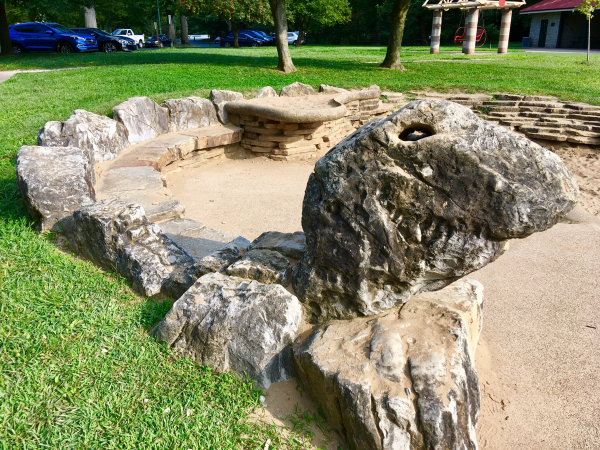
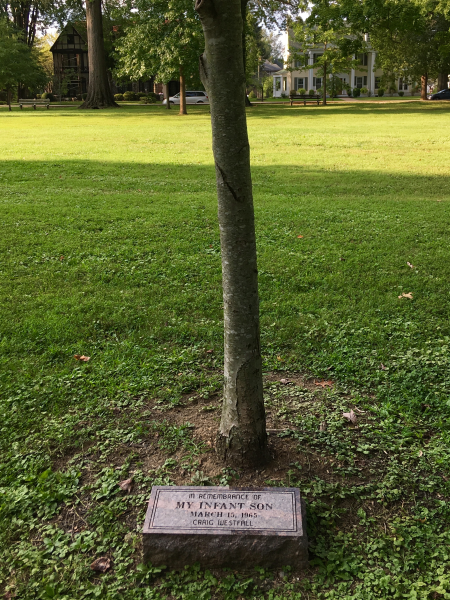
At the park, we saw this creepy monster made of rocks and a small tree dedicated to a dead baby.
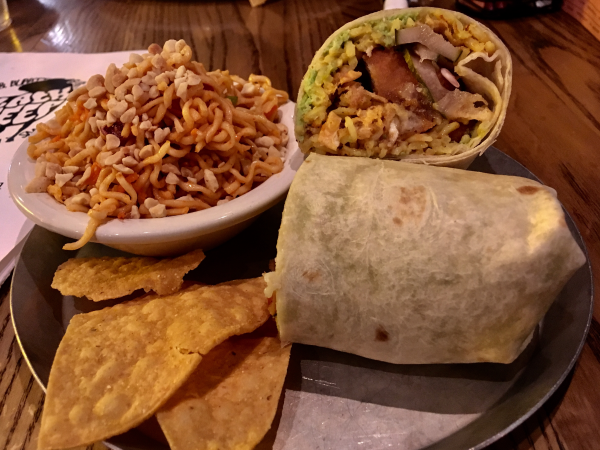
Black Sheep!
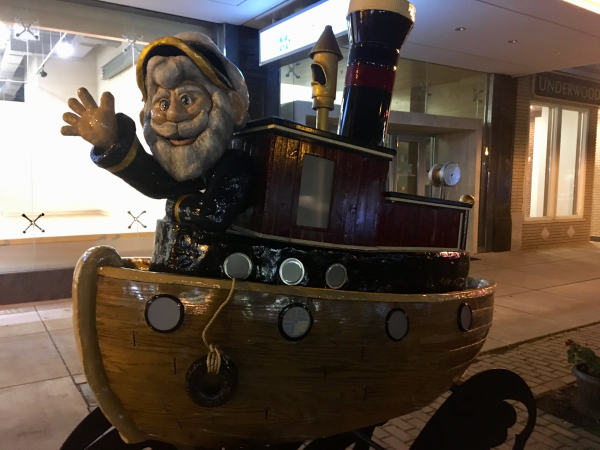
There were a lotta these boat sculptures.